PHOTOS: Spectacular Kaleidoscope Lights of Osijek City Day and Advent 2021
December 02, 2021 – A spectacular light show exploded across Ante Starčević square in Osijek this evening, welcoming hundreds of visitors to Osijek City Day and to the opening of Osijek Advent 2021. Among those gathered to witness the colourful display was the Croatian Prime Minister, Andrej Plenković.
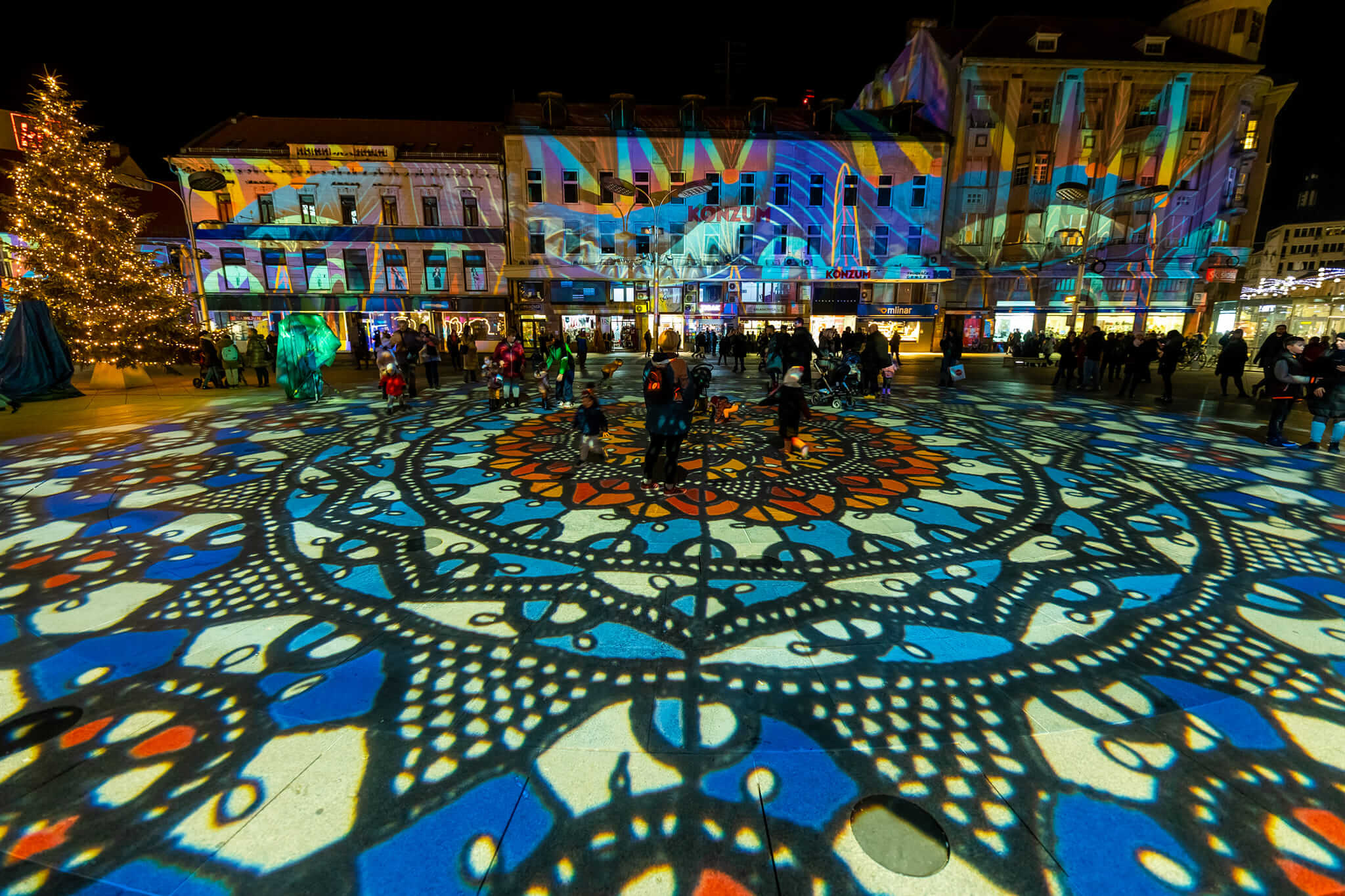 © TZ Grad Osijek
© TZ Grad Osijek
In recent times, Osijek's Ante Starčević square has seldom looked so thrilling. It is a wide and open city square - the only place in Osijek where the city tram lines all meet. Except for one modern sculpture and a statue of Ante Starčević, the square is floored with featureless concrete. The fine facades of surrounding Austro-Hungarian buildings have seen better years. In many instances, these historic frontages are cheapened by gaudy branded signage and advertisements.
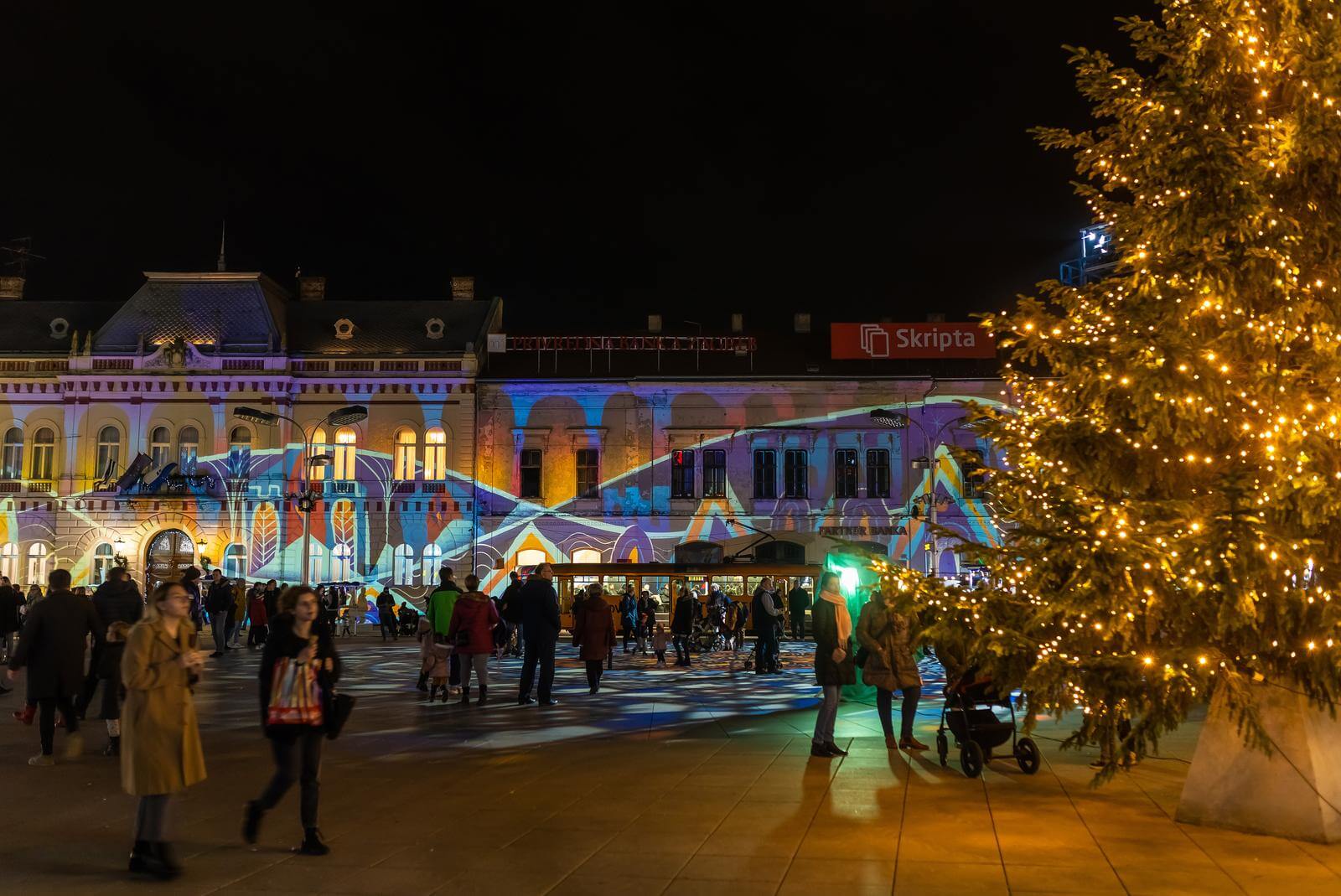 © Davor Javorovic/PIXSELL
© Davor Javorovic/PIXSELL
But, tonight, all the unsightly modern scars were hidden as an ocean of patterns and colours danced across the square. Children skipped along new pathways created by the brilliant lights' design. Now in its third year, these bright embellishments are part of the Kaleidoscope Festival of Lights. The arrival of its magical scenes heralds not only the start of this year's Osijek Advent but also marks Osijek City Day 2021.
Osijek City Day - 2 December
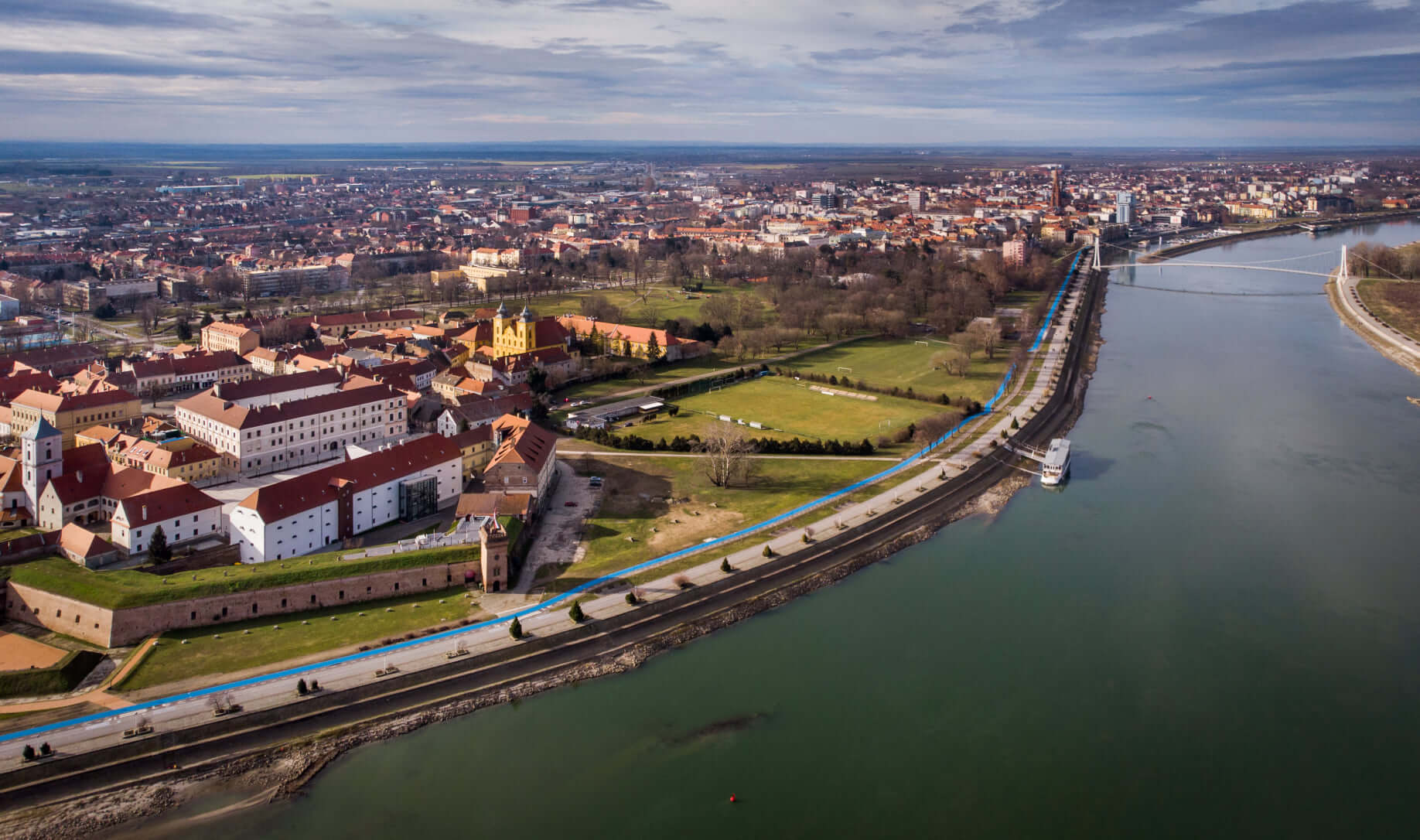 From above, Osijek's Tvrda and the Drava river © Mario Đurkić / Horizont solutions / TZ Grad Osijek
From above, Osijek's Tvrda and the Drava river © Mario Đurkić / Horizont solutions / TZ Grad Osijek
People have lived on this part of the Drava river for millennia. But, quite often, the modern life of Osijek city is only viewed as having begun after the Ottomans were removed by the Battle of Mohács. From 1687, Osijek and the eastern part of Croatia were part of the Habsburg Empire. But, Osijek remained close to the border of the new encroachment on Ottoman territory. Defensive fortresses were built along this line of defence, in Stara Gradiška, Osijek and Slavonski Brod in Slavonia and in Petrovaradin in Syrmia/Srem (Serbia).
Today, Osijek's fortress - Tvrđa – contains the largest collection of Baroque buildings in Croatia. It is a fantastic and picturesque location. There, Osijek's old city walls spectacularly overlook the Drava river. But, back when the city's defence was all-important, these walls made it difficult for Osijek to expand. Progress and growth proved impossible to hinder and, with the threat of the Ottomans becoming ever smaller, the population of Osijek simply began to settle outside the walls of Tvrđa. Indeed, today, residents of the city regard Osijek as having three centres – Lower Town, Tvrđa and Upper Town aka Ante Starčević square.
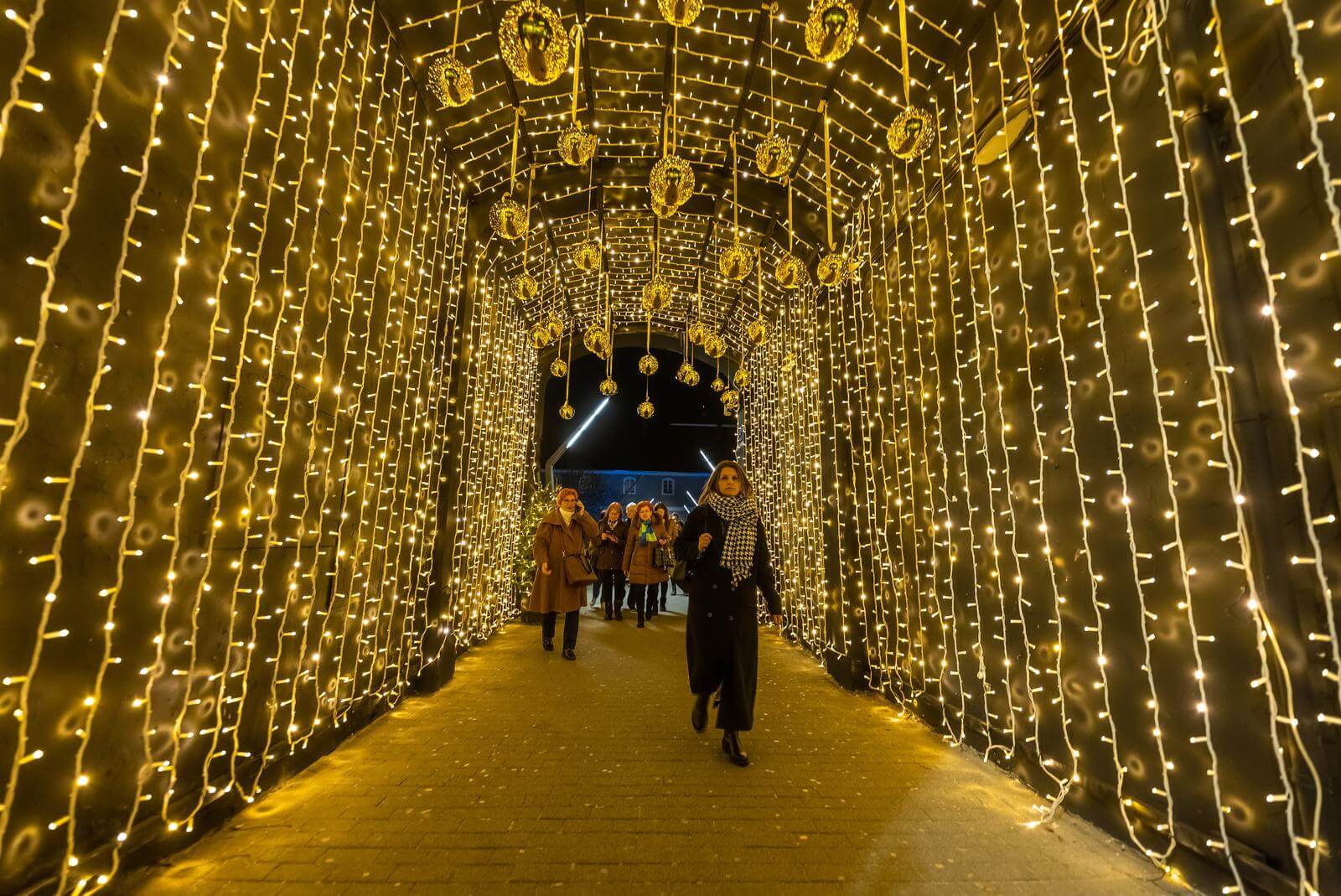 Lights in Upper Town turned on as part of Osijek City Day 2021 © Davor Javorovic/PIXSELL
Lights in Upper Town turned on as part of Osijek City Day 2021 © Davor Javorovic/PIXSELL
At the beginning of the 18th century, separate magistrates resided over Osijek's Lower and Upper Towns, effectively marking them as independent city municipalities. In order to gain status as a free and royal city, local authorities were eventually persuaded to unify the different municipalities on 2 December 1786. Since then, 2 December has been celebrated as Osijek City Day.
Kaleidoscope Festival of Light and Osijek Advent 2021
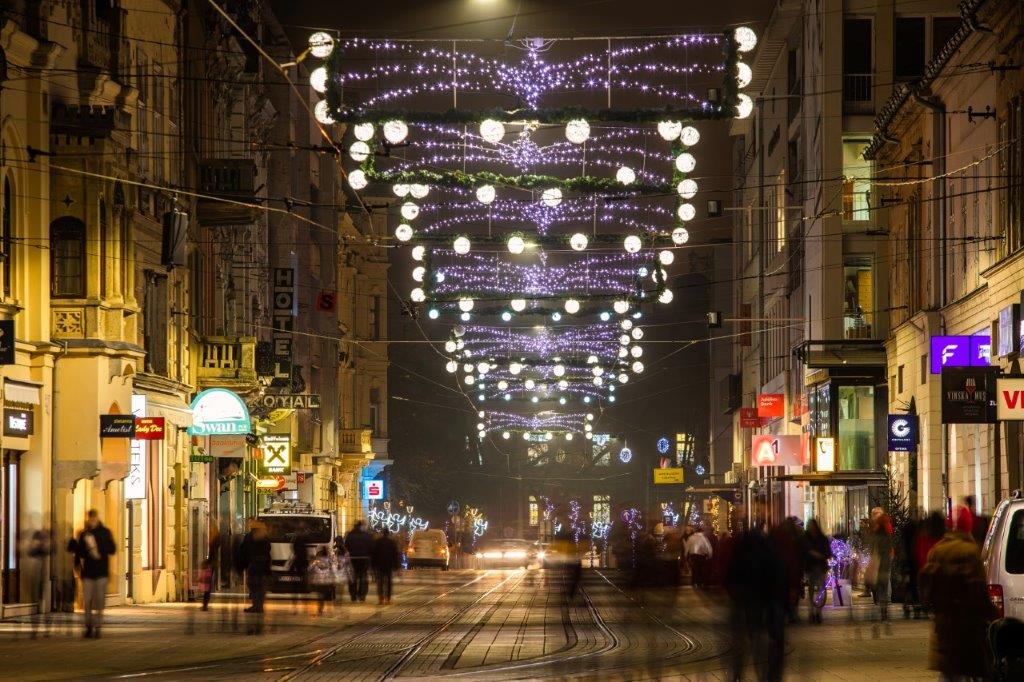 © TZ Grad Osijek
© TZ Grad Osijek
The incredible light show on Ante Starčević square is just one part of an Advent manifestation that, like the city itself, stretches long down the side of the Drava river.
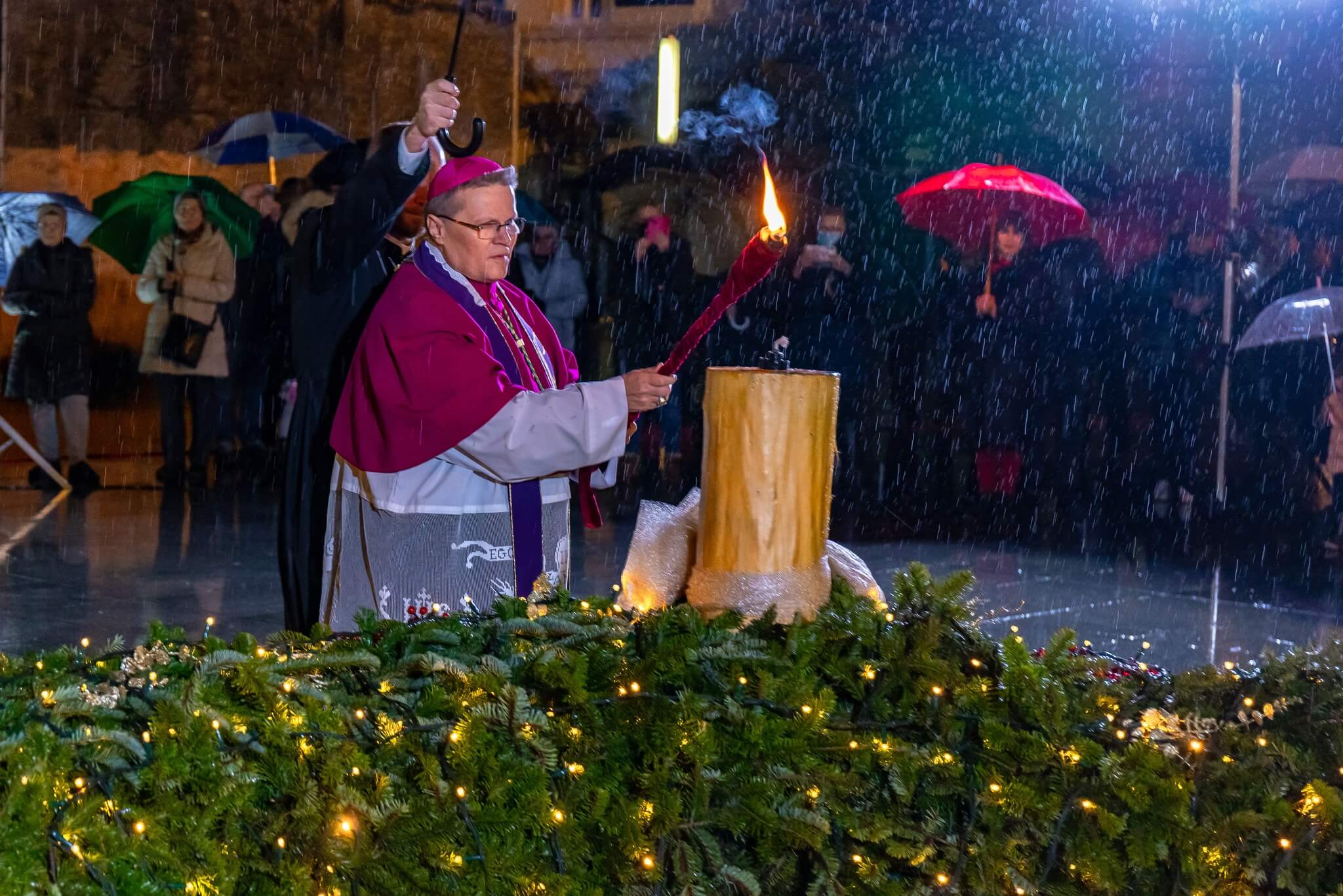 © TZ Grad Osijek
© TZ Grad Osijek
The first candle of Advent 2021 was lit by the Archbishop of Đakovo-Osijek Đuro Hranić on Sunday 28 November. Osijek City Day celebrations are the second key milestone of the Christmas holiday season. City-wide Christmas lights were formally turned on today at the Croatian National Theatre Osijek.
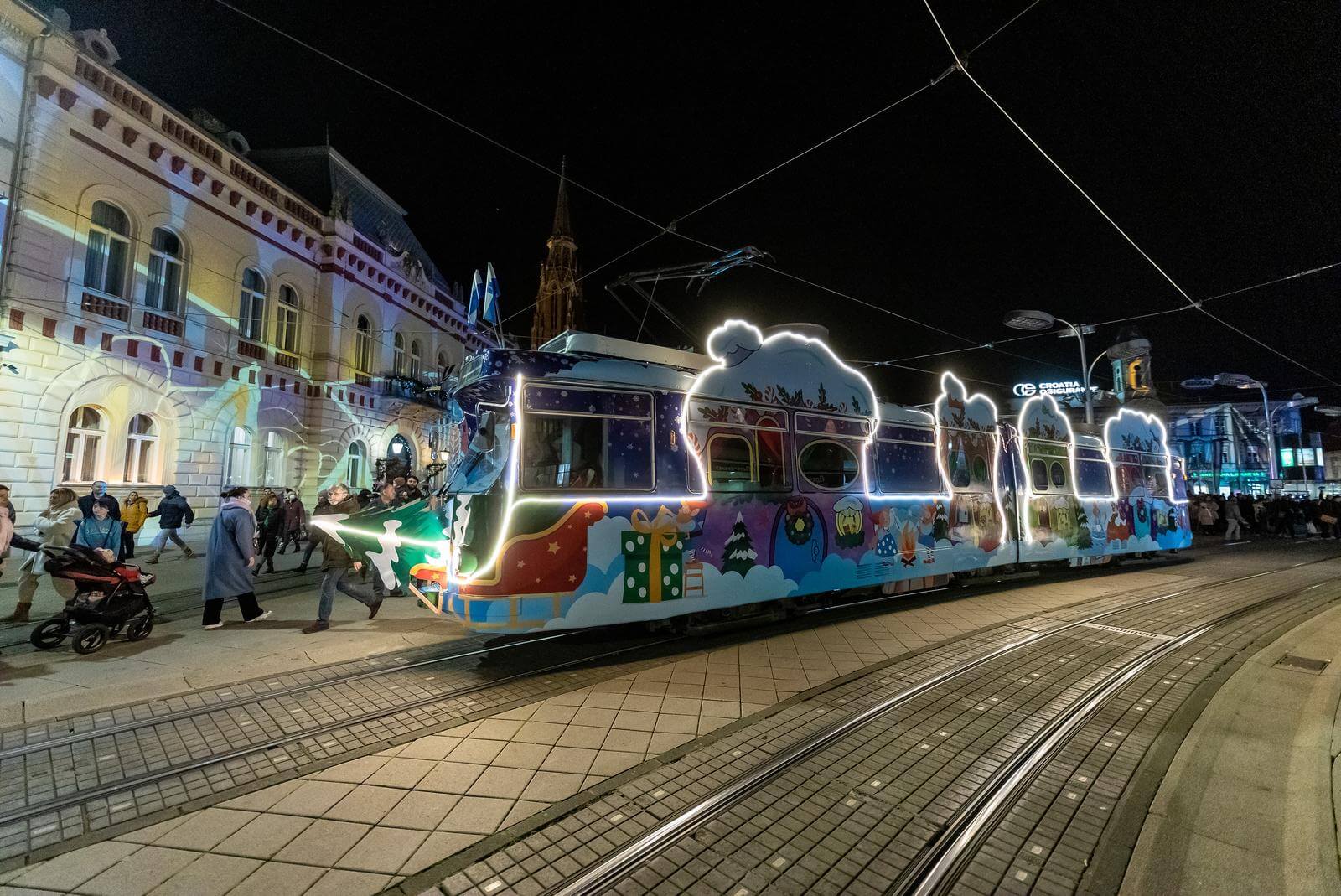 © Davor Javorovic/PIXSELL
© Davor Javorovic/PIXSELL
Osijek Advent 2021 includes the return of the Kaleidoscope Festival of Light and Osijek Advent Tram - which is visited by almost 15,000 people each season. Christmas lights extend down European Avenue, passing some of the city's most grandiose Austro-Hungarian architecture. Thereafter, the trail comes 'off road' and takes you through the trees of King Tomislav Park. Next, Tvrđa assumes the focal point of Advent, with a Winter Lookout on the roof of the Cultural Centre, the Museum of Fine Arts, the Sokol ice rink and the tallest Ferris Wheel in Croatia being key highlights.
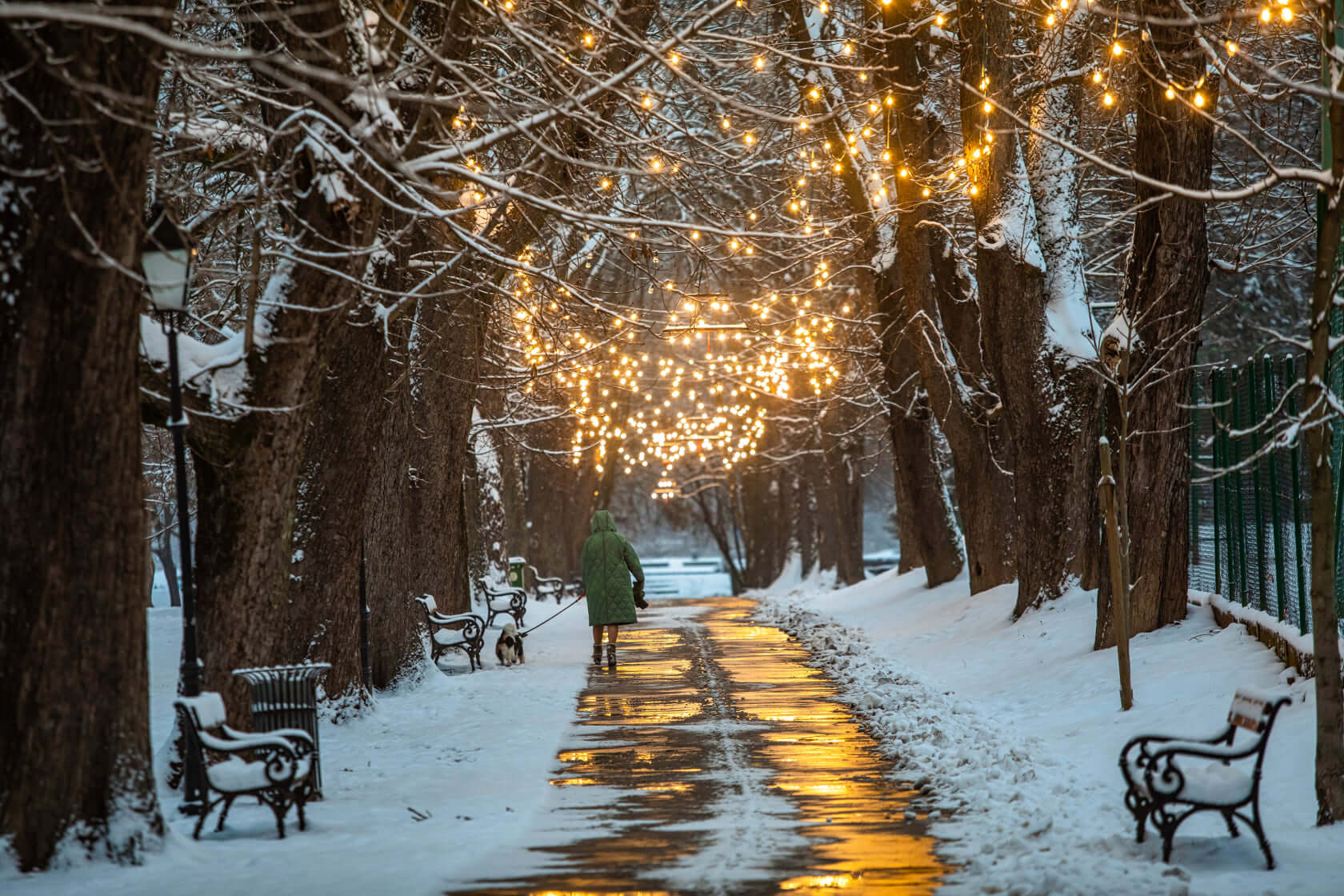 Photo from Osijek Advent 2020 © TZ Grad Osijek
Photo from Osijek Advent 2020 © TZ Grad Osijek
If you want to read more about Osijek, see the Total Croatia guide here. And, if you want to keep up with news from Osijek, bookmark Total Croatia News's Osijek pages here
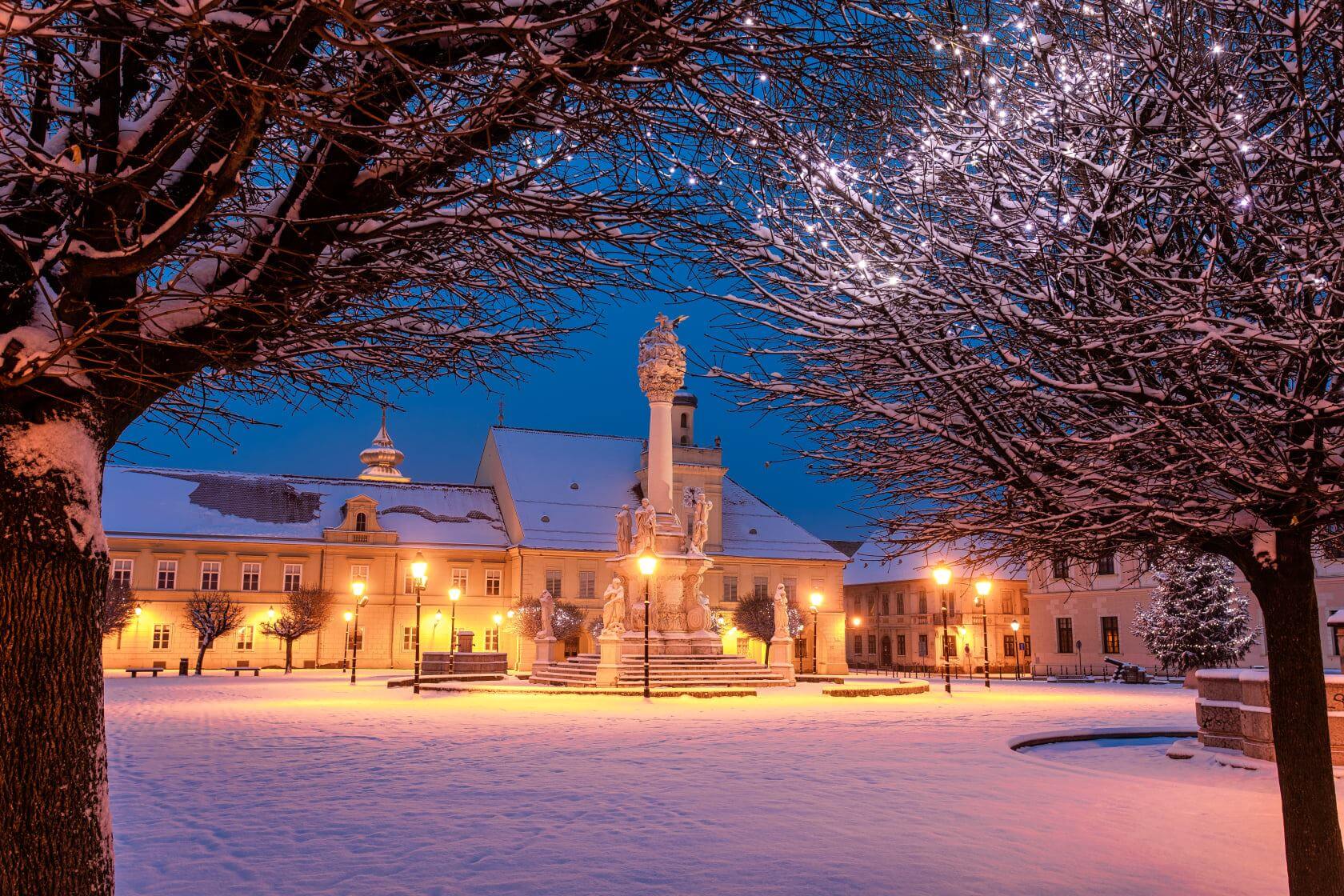 Photo from Osijek Advent 2020 © TZ Grad Osijek
Photo from Osijek Advent 2020 © TZ Grad Osijek
Discovering Authentic Croatia's Secrets With Seoski Tourism
November 4, 2021 – Village tourism or countryside tourism - Seoski tourism in Croatia - offers authentic, traditional experiences. Aleksandra Kuratko, secretary of Udruga ruralnog turizma Hrvatske (Croatian Rural Tourism Association) tells us more about it, and their work to help facilitate it
Croatia's visitor offer is evolving and expanding. There are exciting aspects of authentic Croatia to be discovered. Away from the beach, villages inland often look remarkably similar to how they did one hundred years ago. There, crops are grown and produce made in ways passed down through generations of families. And, in some lucky instances, these family farmers are willing to open their doors, invite you inside and show you how they live.
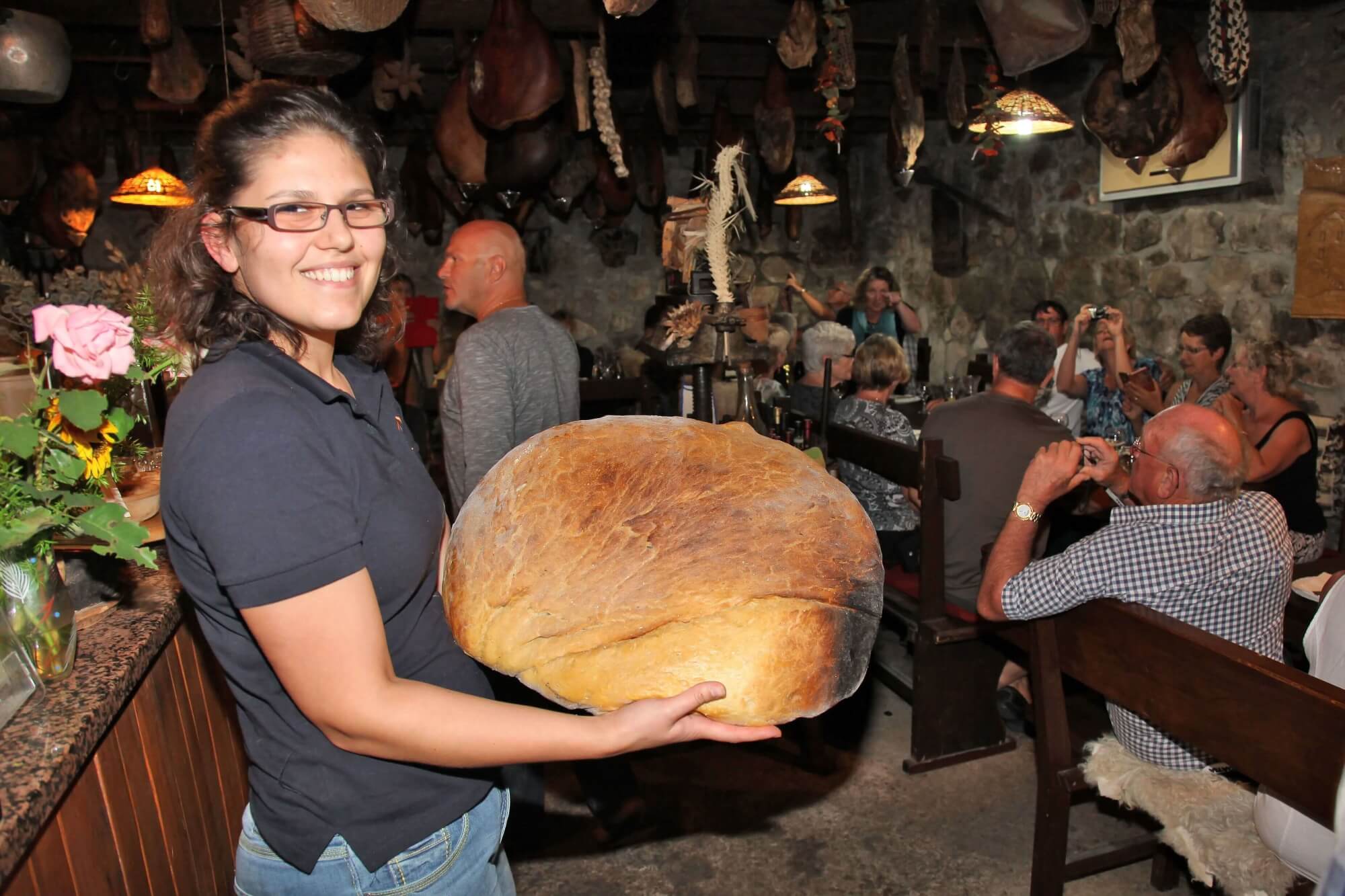 Bread from the peka at Agroturizam Antunović on Pelješac
Bread from the peka at Agroturizam Antunović on Pelješac
Seoski Tourism – translated as either village tourism or countryside tourism – is just that. Family farms that offer hospitality. These are some of the most homely and most welcoming accommodation experiences you can have in Croatia. Offering sights and sounds, tastes and flavours that you can't find anywhere else, visits or stays in Seoski Tourism places have long been loved by locals for weekend breaks or holidays outside peak summer. But, increasingly, these authentic Croatia experiences are being discovered by international visitors.
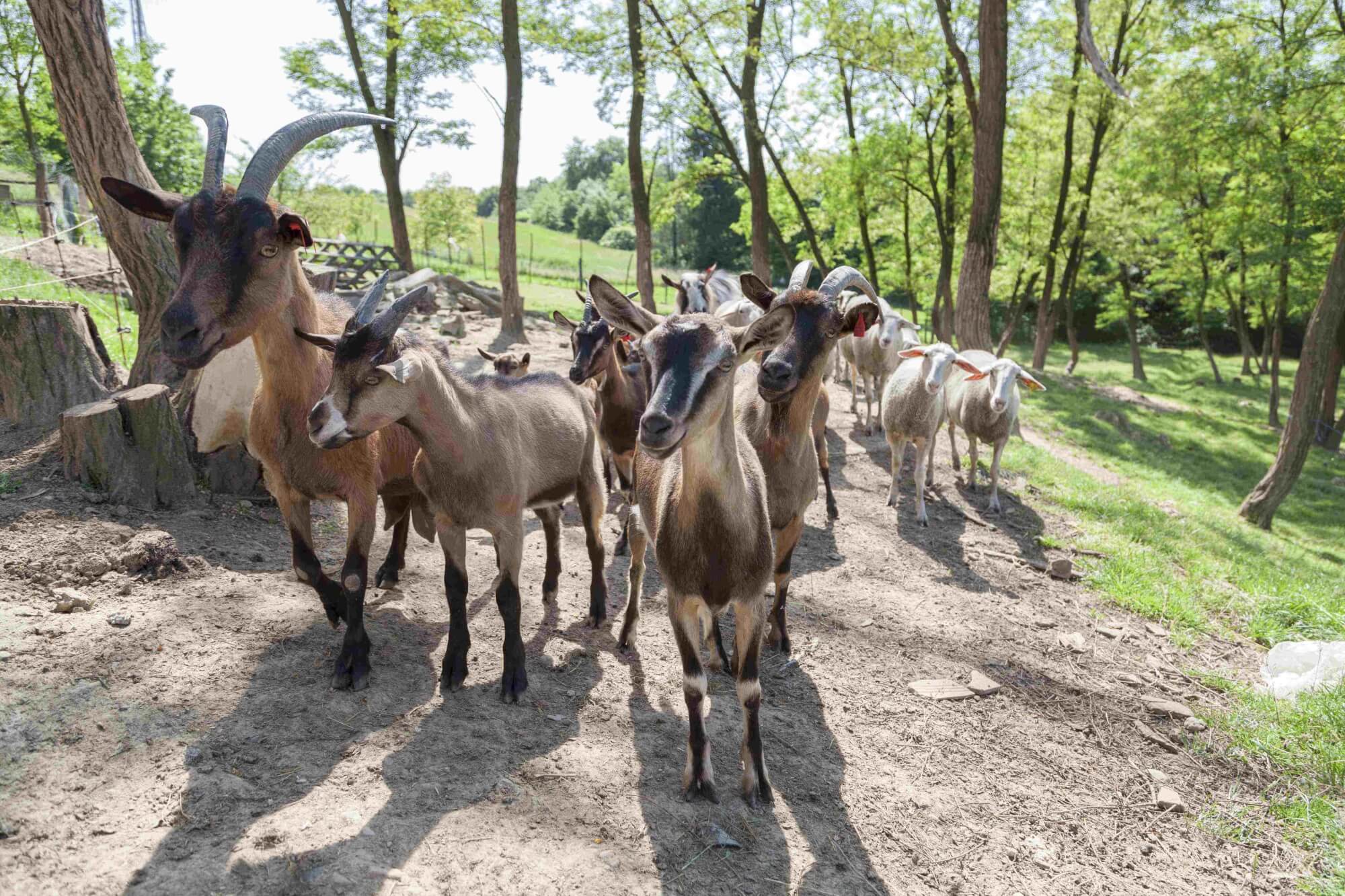 Moslavina goats at Kezele family farm © Davor Konjikušić
Moslavina goats at Kezele family farm © Davor Konjikušić
One institution trying to facilitate the growth in interest is Udruga ruralnog turizma Hrvatske - Croatian Rural Tourism Association. Since it was formed in 2016, they have tried to bring together Croatia's family farm hosts, to promote them and educate them, and to build bridges between these independents and tourist boards, tourist agencies, educators and even the wider world outside Croatia.
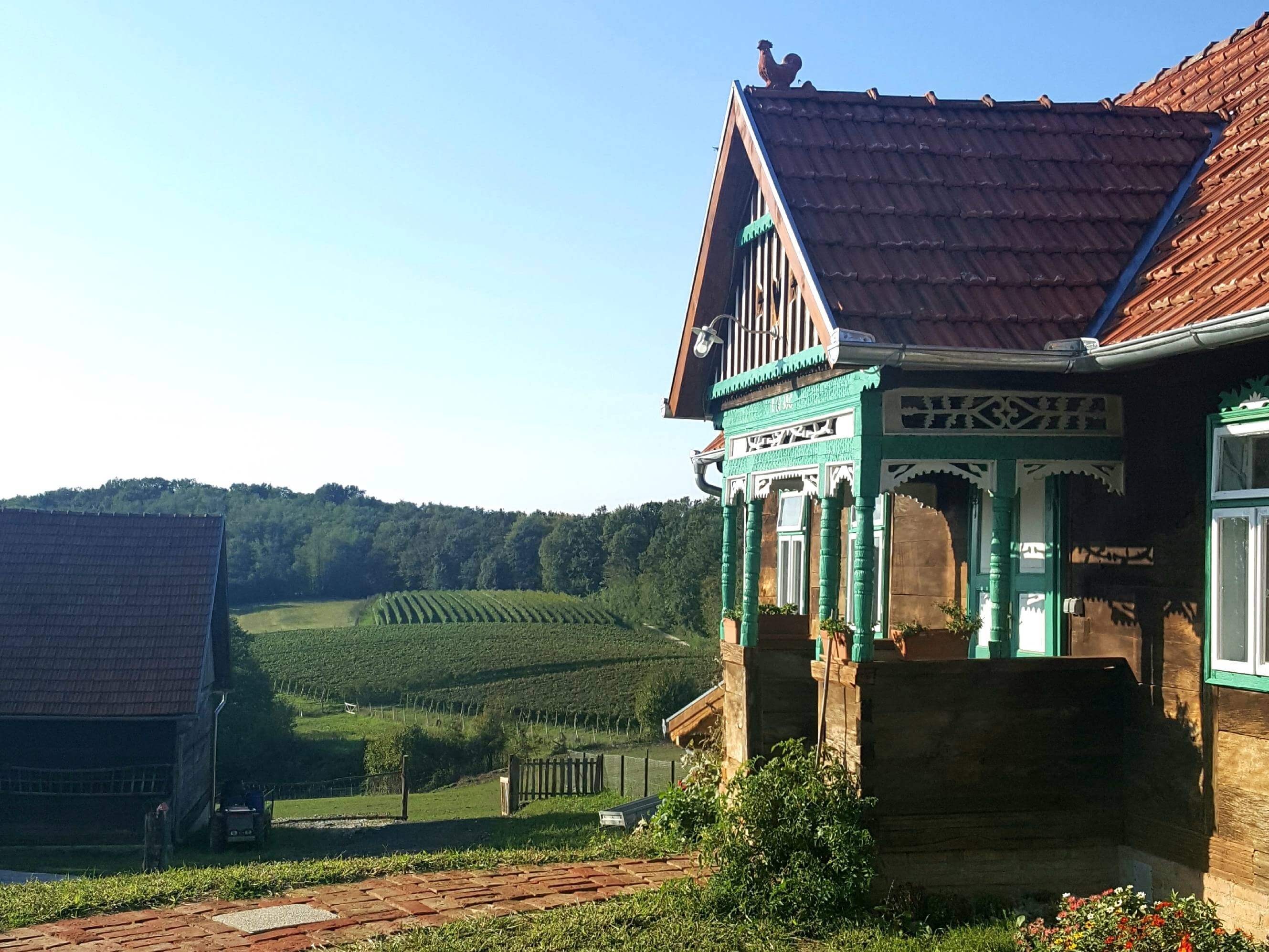 Seoski turizam Kezele in Šumećani, on the border of Zagreb County and Bjelovar Bilogora County © Davor Konjikušić
Seoski turizam Kezele in Šumećani, on the border of Zagreb County and Bjelovar Bilogora County © Davor Konjikušić
Based in Ivanić-Grad, Zagreb County, the Croatian Rural Tourism Association is currently touring the length and breadth of the country, holding workshops with as many Seoski Tourism family farms that will come. And if the farmwork doesn't allow them free time, then they can attend Croatian Rural Tourism Association workshops online.
On the eve of the association's online Seoski Tourism workshops for Central Croatia and Slavonia, TCN interviewed Aleksandra Kuratko, secretary of Udruga ruralnog turizma Hrvatske, to find out more about Seoski Tourism in Croatia.
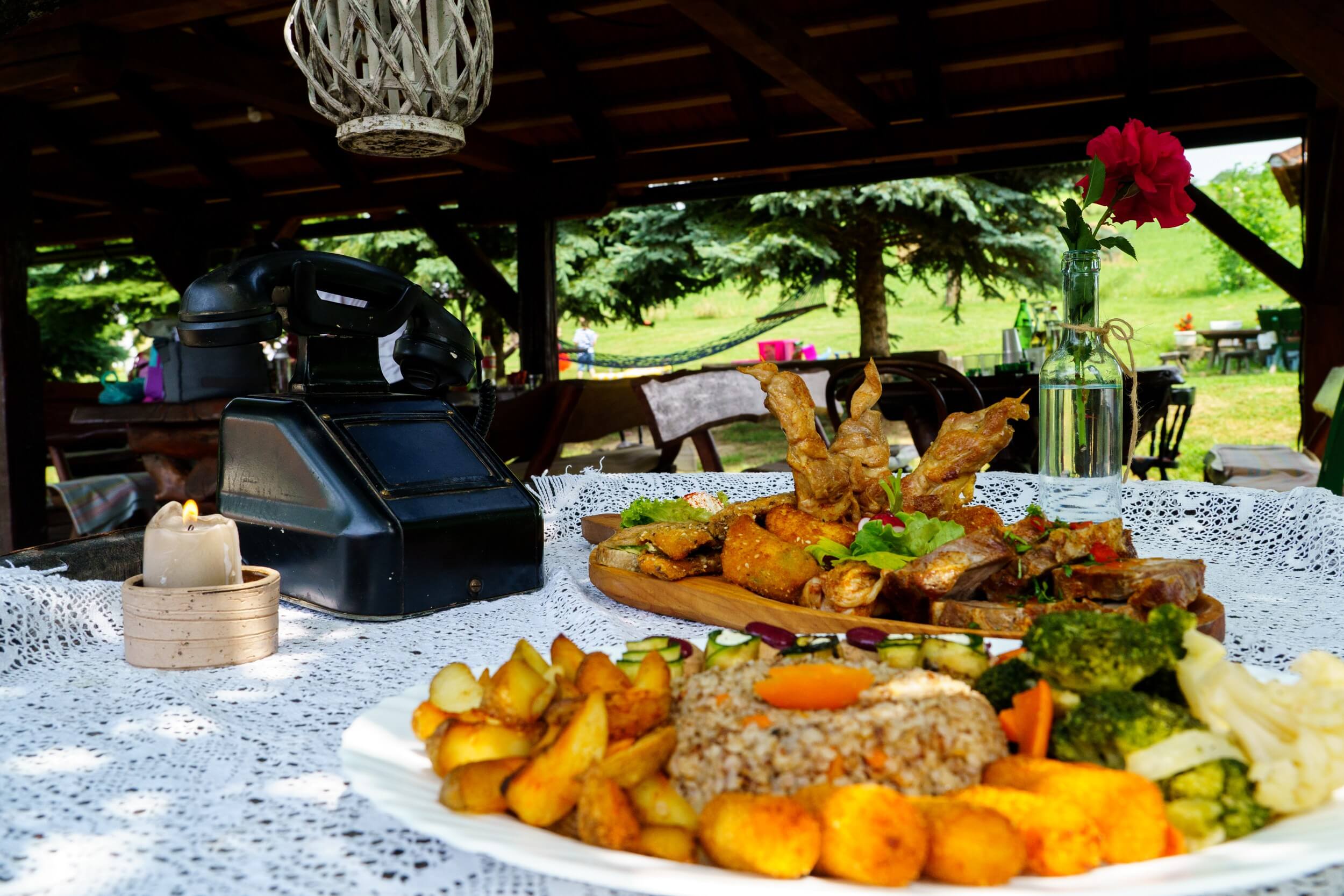 Prigorje specialties at Rakić family farm
Prigorje specialties at Rakić family farm
My name is Aleksandra Kuratko and I am secretary of Udruga ruralnog turizma Hrvatske. As an association, we are 5 years old.
We have 35 members, most of whom are service providers in what we call Seoski Tourism. We also have several tourist boards and two educational institutions as members.
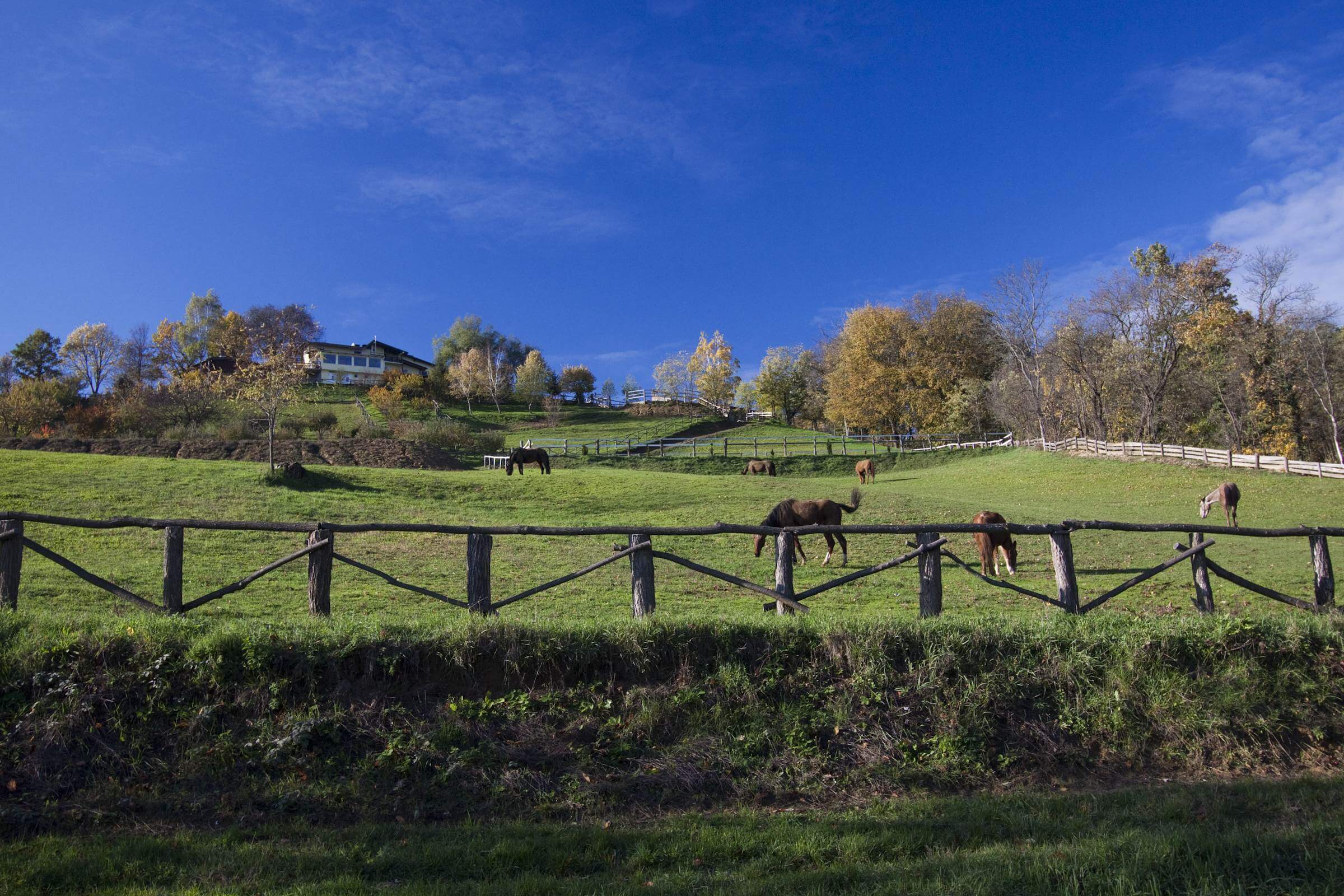 Bilogora horses in autumn at Agroturizam Na malenom brijegu © Vladimir Vlajinić
Bilogora horses in autumn at Agroturizam Na malenom brijegu © Vladimir Vlajinić
Seoski tourism is not quite the same as rural tourism, because rural tourism is many different types of tourism that happen in rural areas. Seoski tourism - which you might translate as village tourism - is quite specific. We assemble people who work in agriculture and who, at the same time, are also offering hospitality. In English, you might call them Farm Stays. Or Agro-tourism – a merging of agriculture and tourism.
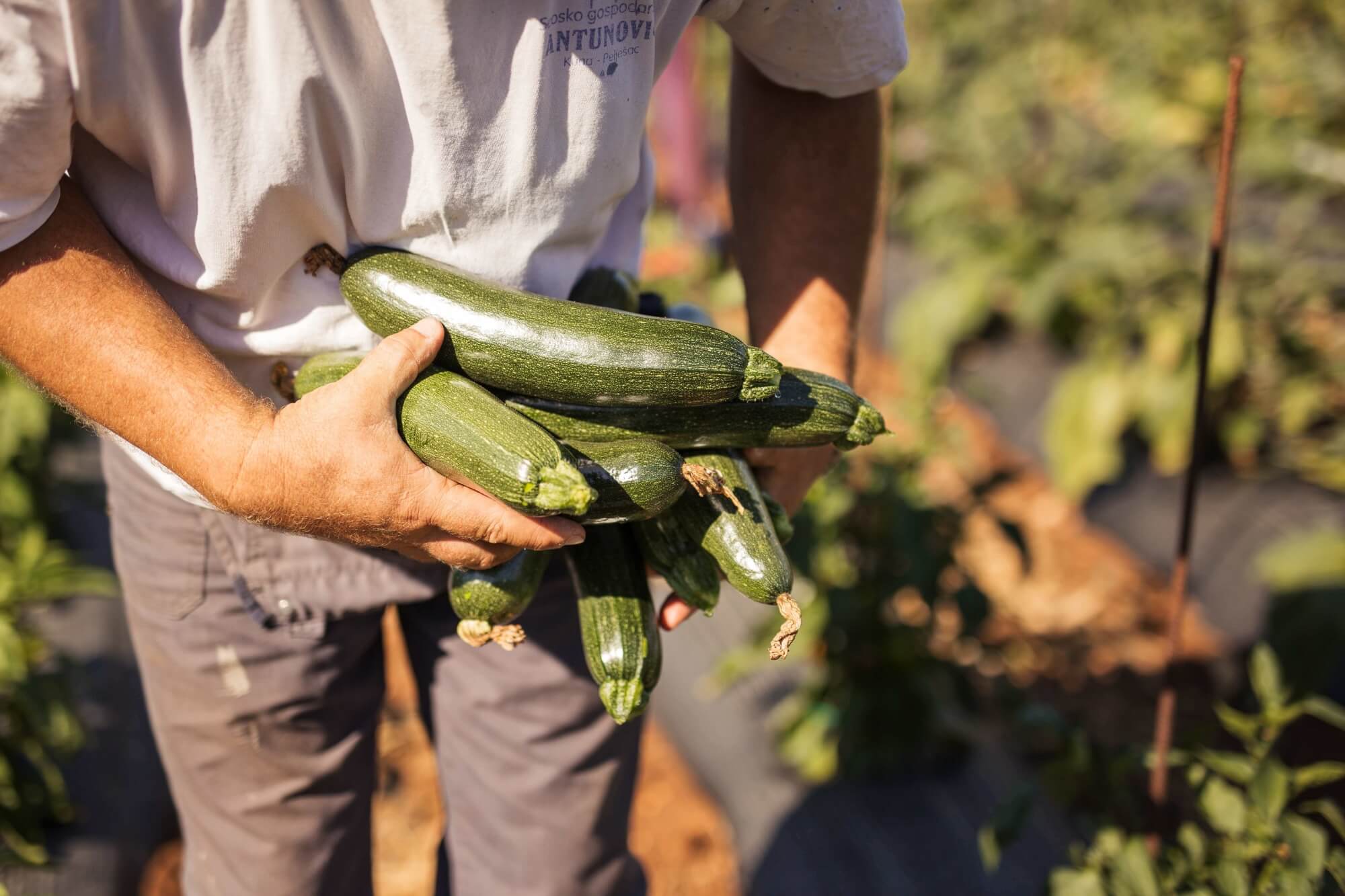 Fresh vegetables at Agroturizam Antunović on Pelješac
Fresh vegetables at Agroturizam Antunović on Pelješac
People who work on agricultural estates often take care of local cultural heritage. For example, they might maintain and renew traditional wooden or stone houses. Many also have etno collections, in which they preserve different objects from their region. Some of these objects might have been used in agriculture and households hundreds of years ago. So, they are preserving the cultural heritage of Croatian villages. This is what we call material cultural heritage. But, there's another kind.
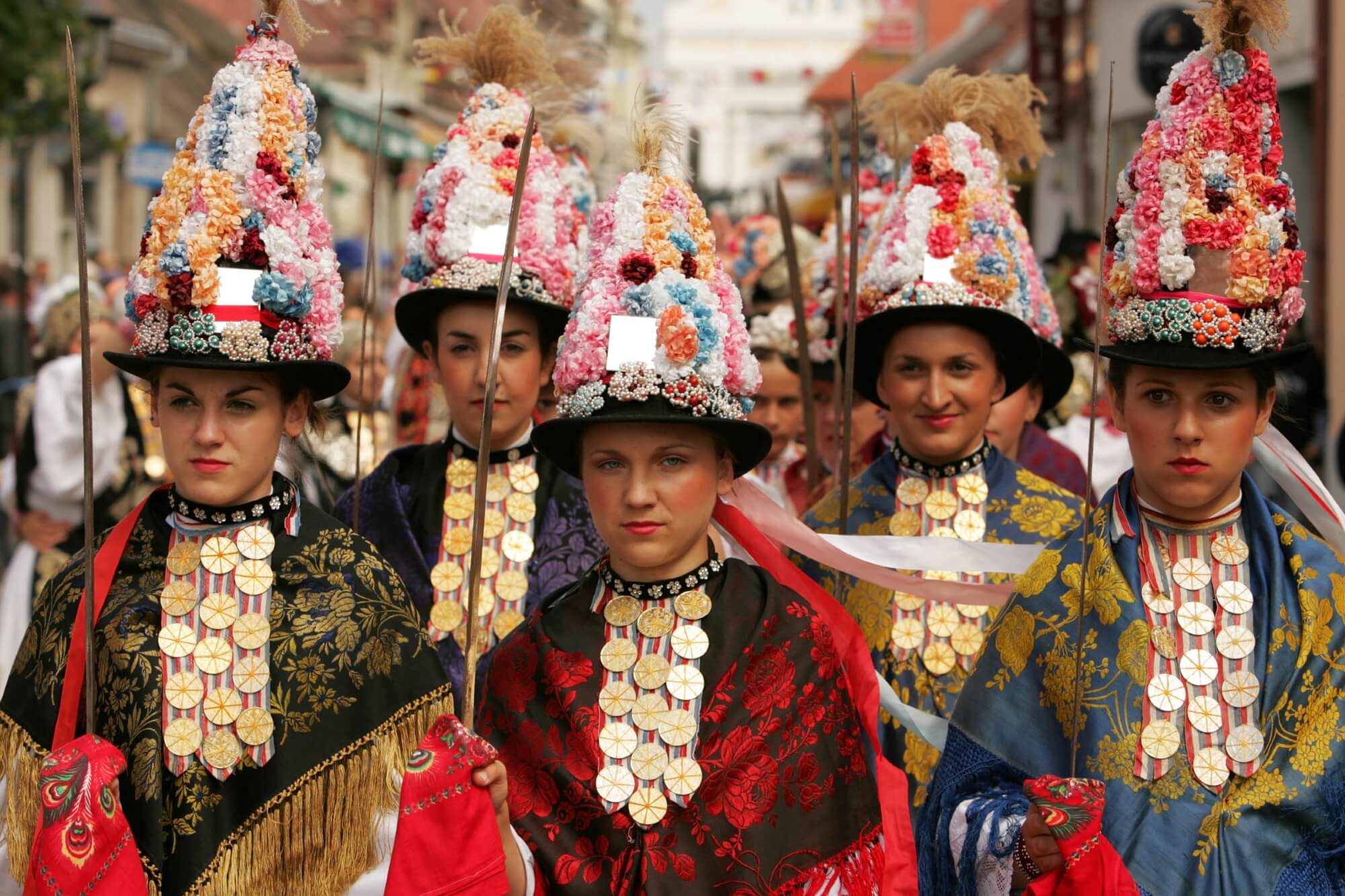 Cultural heritage preserved in one Slavonian village © Mario Romulić
Cultural heritage preserved in one Slavonian village © Mario Romulić
Non-material cultural heritage is also a part. That might be preserving old recipes of traditional, regionally-specific dishes. Or, it might be showcasing the songs and dance of local music.
We are currently running a project which is supported by the Croatian Ministry of Tourism and Sports in which we hold 37 Seoski Tourism workshops in the field all over Croatia. There will also be around 15 online workshops. The workshops are aimed at colleagues who currently operate in Seoski Tourism – they work in agriculture and offer hospitality. Also invited are local tourist boards and local action groups.
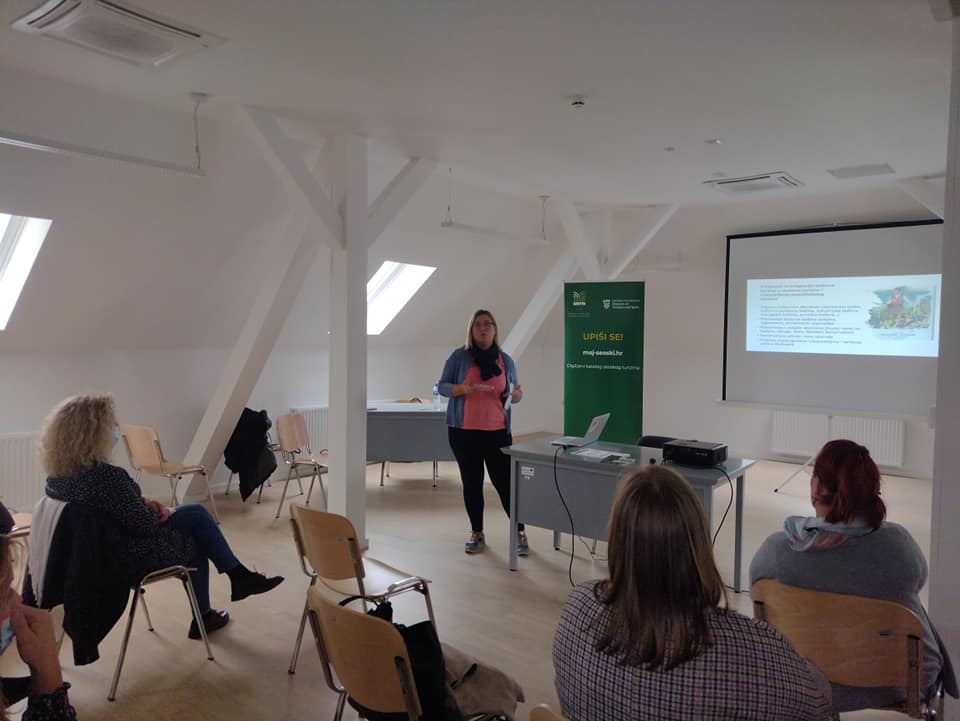 Photo from URTH workshop in Slatina
Photo from URTH workshop in Slatina
So far, we conducted 20 workshops in the regions of Central Croatia, Slavonia and Baranja, and Podunavlje. From next week until the end of the year, we will conduct the workshops in Istria, Kvarner, Lika and Dalmatia. Some service providers were not able to attend earlier workshops, because of work commitments of Covid. So, we decided to also offer access to the workshops online. Tomorrow is our first online workshop for Central Croatia and on Friday it's the online workshop for Slavonia.
These workshops are interactive discussions between our association, service providers and all other stakeholders. We discuss the legislative framework, which can be extremely complex. We talk about new trends in tourism for the post-pandemic era. We also discuss the importance of integrating cultural heritage in digital promotion.
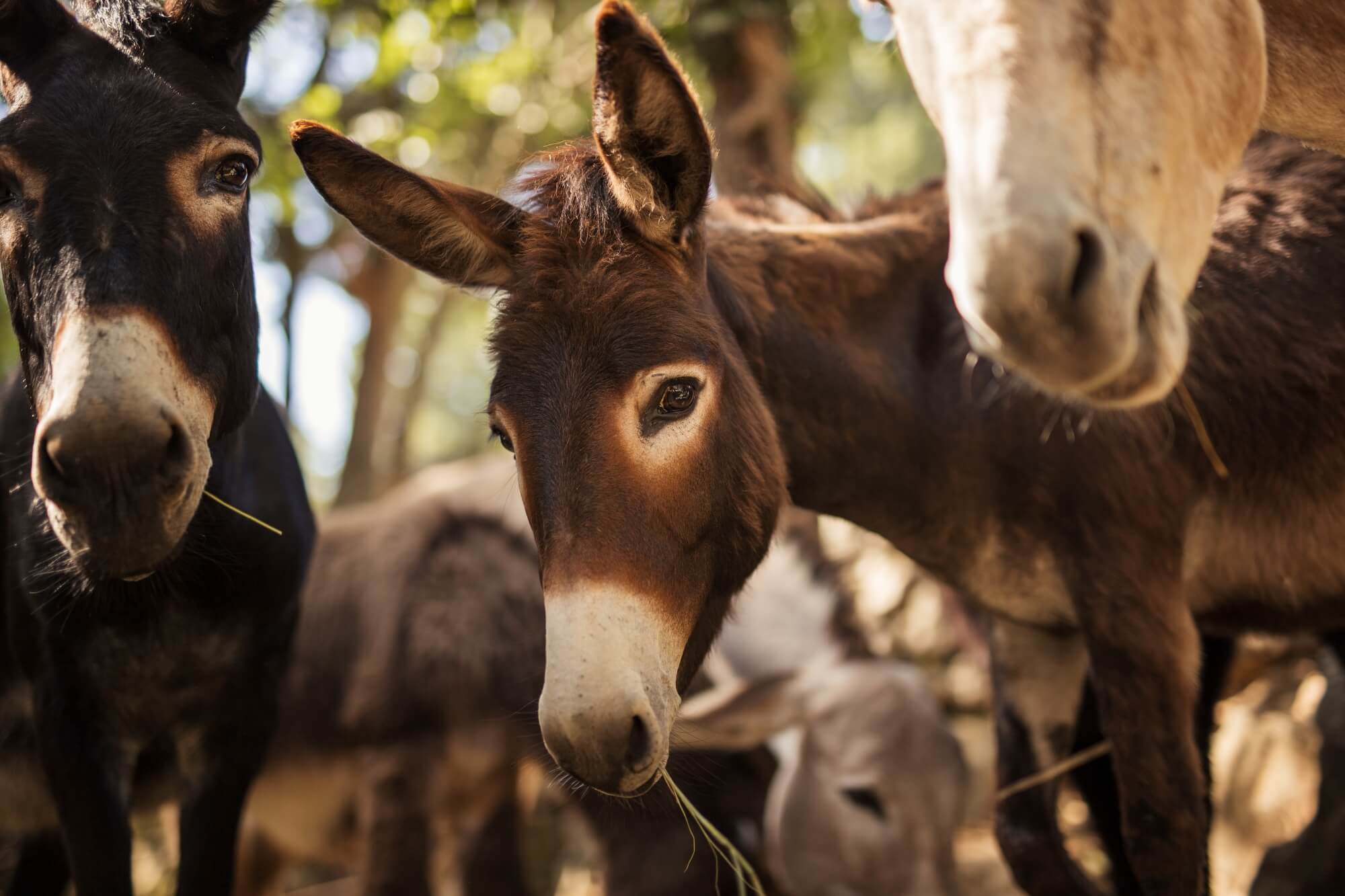 Donkey farm at Agroturizam Antunović on Pelješac
Donkey farm at Agroturizam Antunović on Pelješac
For the legislative framework, we have initiated the formation of a working group for the development of Seoski Tourism, which is now operating in the Croatian Ministry of Tourism and Sports. So, at the workshops, we ask if anyone is having issues. We collect the responses and address them in the working group.
Part of the workshop is the presentation of a new web application of Seoski Tourism, which we have developed with Croatian Ministry of Tourism and Sports. It has two purposes. One is to create a digital catalogue of Croatian Seoski Tourism. You can see region by region some of the Seoski Tourism options – currently around 40, those who have already enrolled.
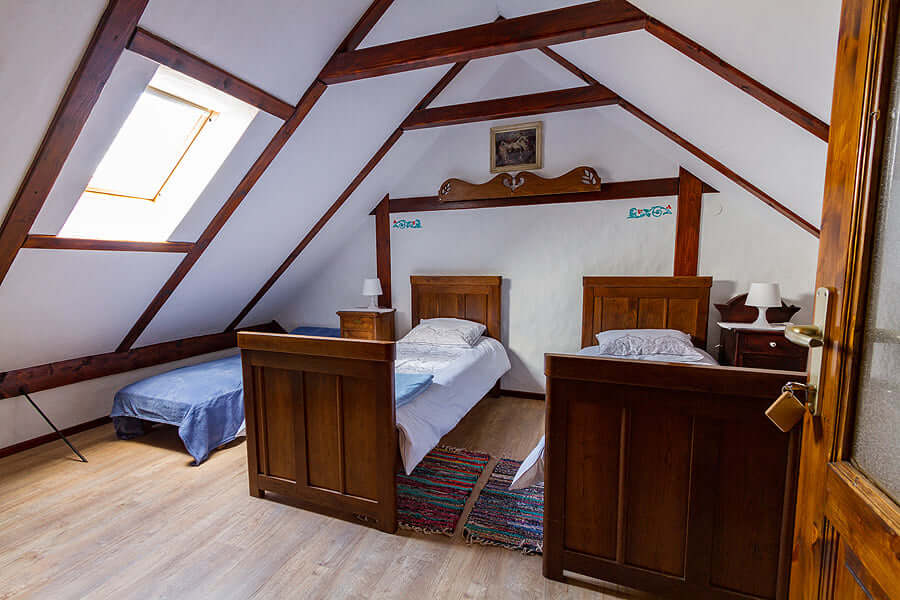 Podravina Etno rooms at Zlatni klas Otrovanec
Podravina Etno rooms at Zlatni klas Otrovanec
A version of the app is currently available on the website of the National Tourist Board. But, they are building a new website. The forthcoming version of the catalogue will likely be more user-friendly with many more functions and options. On the new website, Croatia's Seoski Tourism options will be detailed in many different languages. It should be a great resource not only for tourists but for travel agencies, journalists like you and for educational institutions. That's the reason we are devoting time in our workshops to encourage Seoski Tourism providers to enroll. We are just at the beginning of the process.
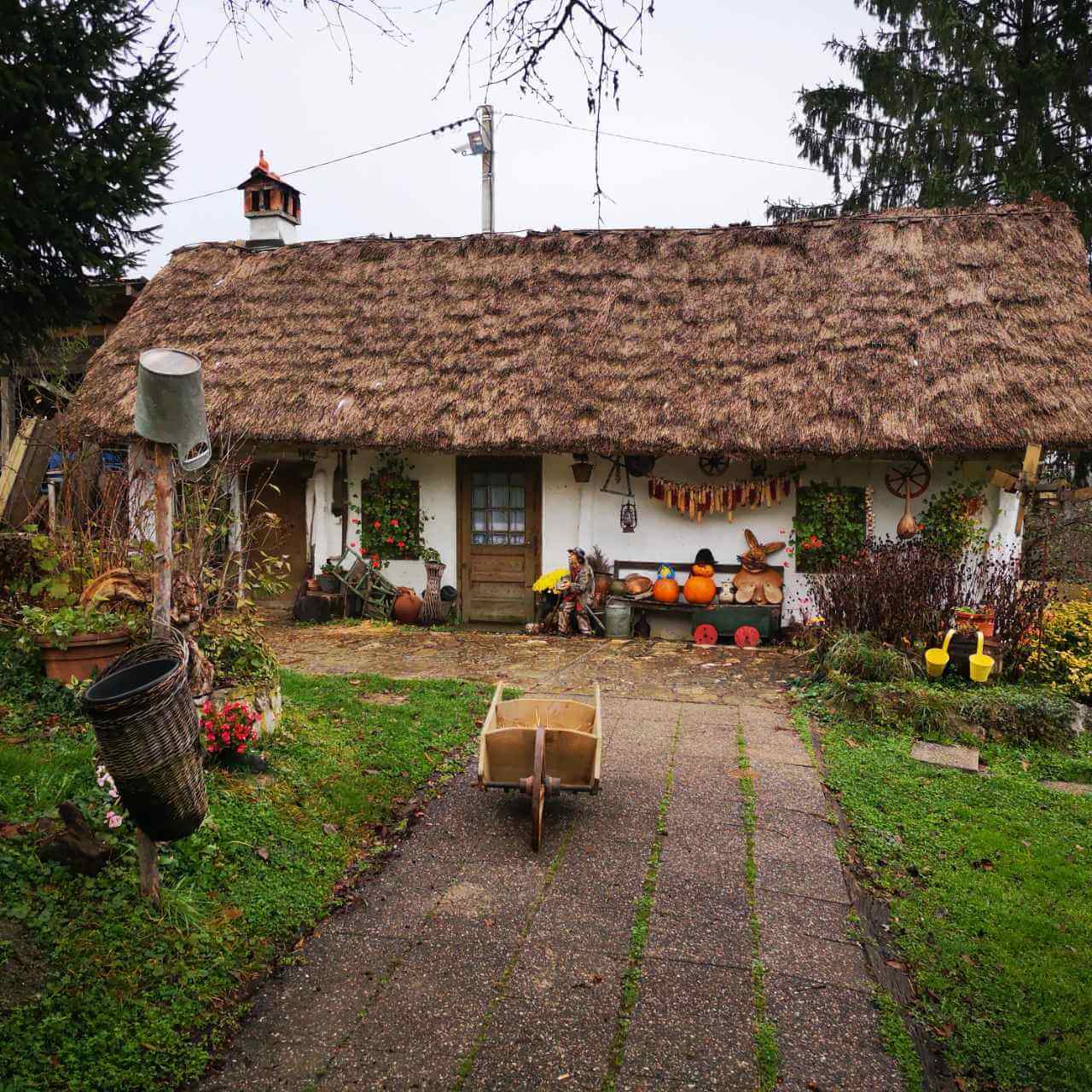 Grešna pilnica in Zagorje © Jasna Podboj
Grešna pilnica in Zagorje © Jasna Podboj
The second purpose of the app is to collect information about the service providers. This info will be used by our working group when defining a Croatian model of Seoski Tourism. So far, we have taken examples from Slovenia, Italy and other countries that are successful with Seoski Tourism. But, these models were entered into our legislative system without fully considering our distinct business and cultural environments. That is now about to change.
We are very happy that, following many years of partially successful advocacy, there is now political will at a ministerial level to really shape things up, to change the laws and regulations in order to facilitate Seoski Tourism. We want to encourage more Seoski Tourism, not to have people from agriculture being turned away because of the difficulty of the process and bureaucracy.
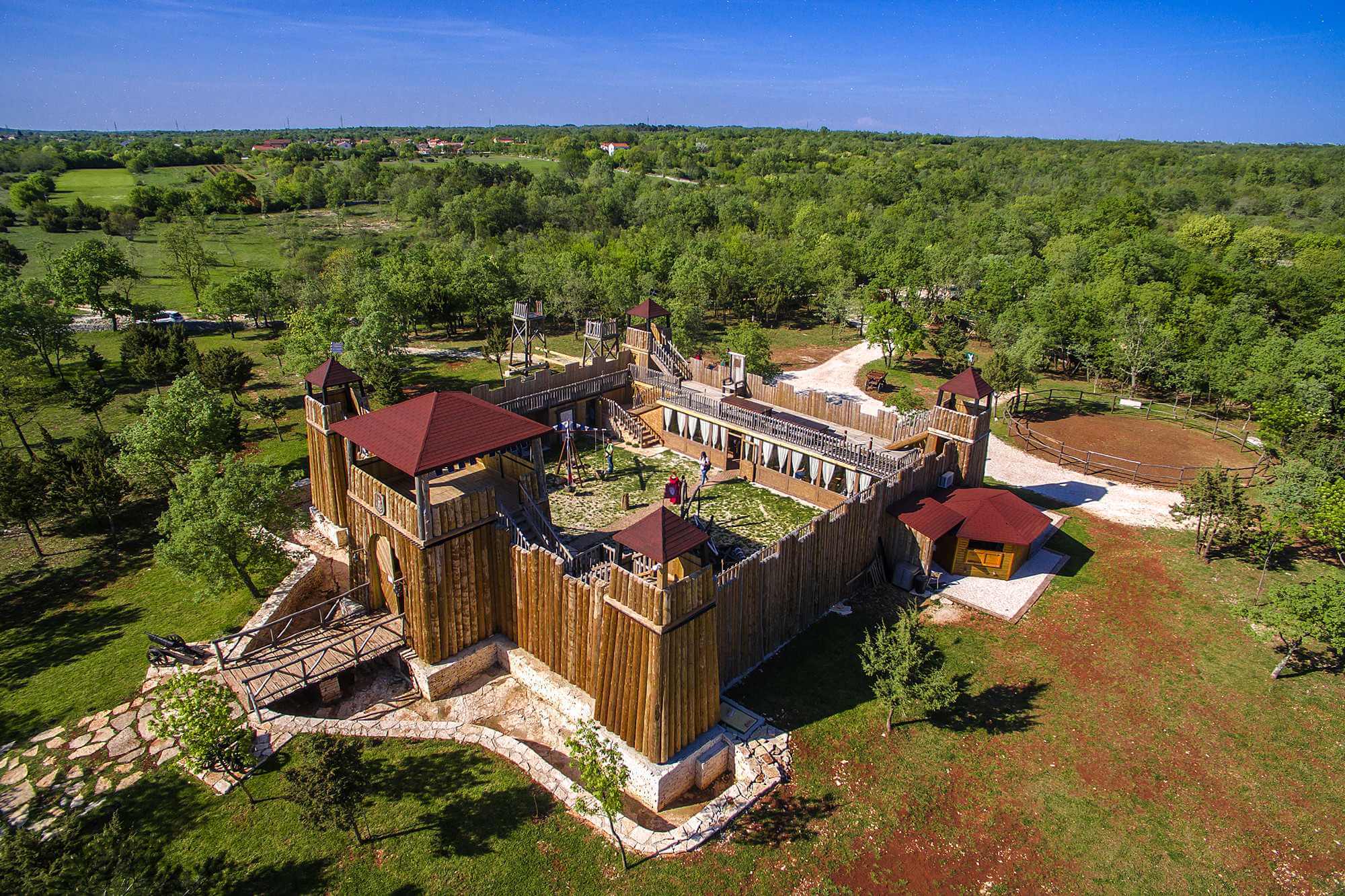 Medieval Theme Park San Michael © Silvia Otočan
Medieval Theme Park San Michael © Silvia Otočan
You said part of the workshops will focus on new trends. What are some of these?
Research has been done by a working group that is developing a new tourism strategy for Croatia. It's called Strategy for Sustainable Tourism to 2030. Under the auspices of this group, a number of research fields have been analysed.
The collected data shows that a huge percentage of tourists are now more inclined to eat locally grown and healthy food. They want to spend their time on estates that are run in accordance with ecological principles. So, they really care about issues like how waste is disposed of etc. They also pay a lot of attention to culture. They are curious to learn exactly how we are living, how we are working and how we produce things. They want to learn about our society and culture. And, importantly, they really care about how they spend their money. Above all, they want to spend money in areas that can help support local communities.
 Prigorje Breakfast at Rakić Family Farm
Prigorje Breakfast at Rakić Family Farm
For us, this is really important. Because Seoski Tourism answers these demands to an incredibly high level. We do produce local, healthy food. Not only on the agricultural estates where you can experience Seoski Tourism, but also from their neighbours who just do agriculture. We are concerned with ecology, we protect cultural heritage and the money spent in Seoski Tourism stays in local communities, where it has very beneficial effects.
In the digital promotion part of the workshops we are trying to persuade people about the importance of their online presence. Basically, these days, if you're not online, it's almost like you don't exist. So, we try to explain the importance of having good-quality photos, short videos and a regular online presence.
 Kulen, čvarci and other specialties at Baranjska kuća © Denis Despot
Kulen, čvarci and other specialties at Baranjska kuća © Denis Despot
That's interesting. In some cases, it might be like two different worlds colliding - people who work in a traditional industry and a traditional environment having to adapt to a very modern way of operating. There's also another potential collision when providers learn of the expectations within modern tourism. Because these people can no longer just work in agriculture. To operate in Seoski Tourism, you're also very much expected to also be a host.
Yes. All of our current service providers who are successful within Seoski Tourism are also great hosts. It's essential. You can see it in almost all of the reviews for this kind of tourism. Guests come for the food and drinks and surroundings, yes. But, what they value the most, what they remember the most, is the host part of the experience. On the estates of Croatian Seoski Tourism, guests are welcomed like family. Across all of Croatian tourism we are expected to be good hosts. It's part of our reputation and the reason why many people come here from all over the world. In Seoski Tourism, it is vital we live up to those expectations.
 Kezele family farm © Davor Konjikušić
Kezele family farm © Davor Konjikušić
Another aspect of this, which is a more recently-observed element, is that visitors often want an insight into the actual lives, even the personalities of their hosts. They want not only to taste the homemade sausages you make, but they also want to know how you do it, where you do it, how you learned to do that. When they go to Spain, they want to know how the people there make their wine. And, when they come to Croatia, they want to learn how we do it here.
So, all in all, those of us in Seoski Tourism are really busy. We are in agriculture, yes, but we are also in tourism and we are also online. With this more recently-observed aspect, we will need to try and devote even more time to our hosting. It can be difficult to balance the demands on your time. But, in our workshops, we are trying to persuade people to talk more about themselves, their lives, their cultural heritage. And, if there isn't time to do everything themselves, then to involve different and often younger generations of the family. Sometimes within the hosting or alternatively just with the online promotion and presence.
 Kezele family farm ethno collection © Davor Konjikušić
Kezele family farm ethno collection © Davor Konjikušić
I've visited some family farms that were right at the start of their journey with Seoski Tourism and they seemed surprised that I was at all interested in what they do and how they do it. I think maybe they thought I was a bit crazy.
Yes, that is a response we sometimes also see at first. I think it's because our generation takes a lot of things for granted. We sometimes think that what we do is just what we do. We are not so good at showcasing it. “Why would I show someone how I make my cheese? I make my cheese like my grandmother used to make it” But, for those who open their doors to Seoski Tourism, inquiries about how they do what they do are only increasing. So, they seem to appreciate how we advise them in the workshops.
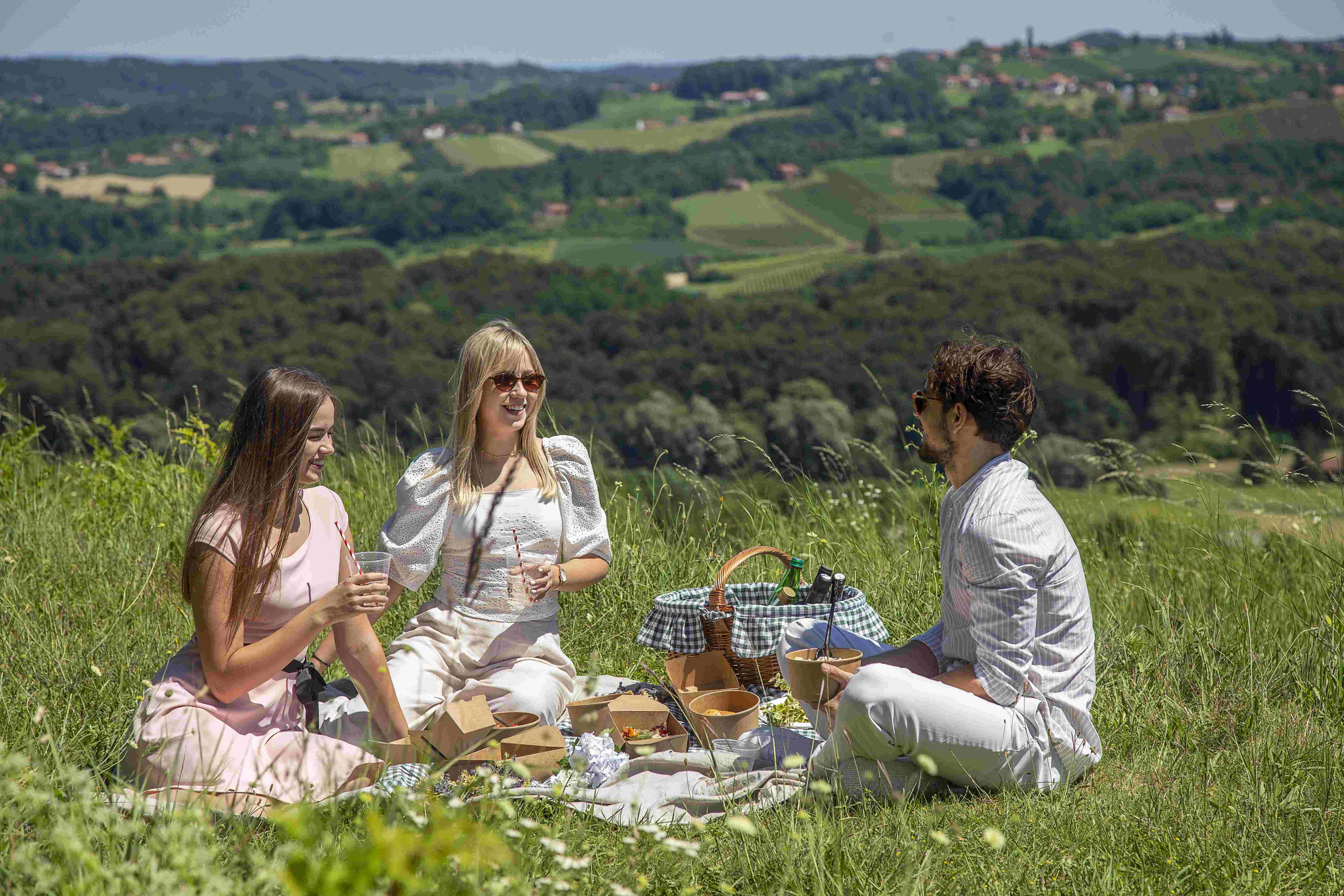 Picnic by Restaurant Međimurski dvori © Igor Nobilo
Picnic by Restaurant Međimurski dvori © Igor Nobilo
We are trying to let our producers know that Seoski Tourism is not just a platform to sell their produce and an overnight stay, but it's a full experience they can sell. There are agricultural farms in Austria that are established in tourism that you must pay only to visit. Of course, that doesn't happen currently anywhere in Croatia, even though some of our Seoski Tourism estates have sections that look like museums.
Some of these aspects are very new. And the feedback is great. I truly believe there are hidden treasures to be discovered in some Croatian villages. We are here to tell that story.
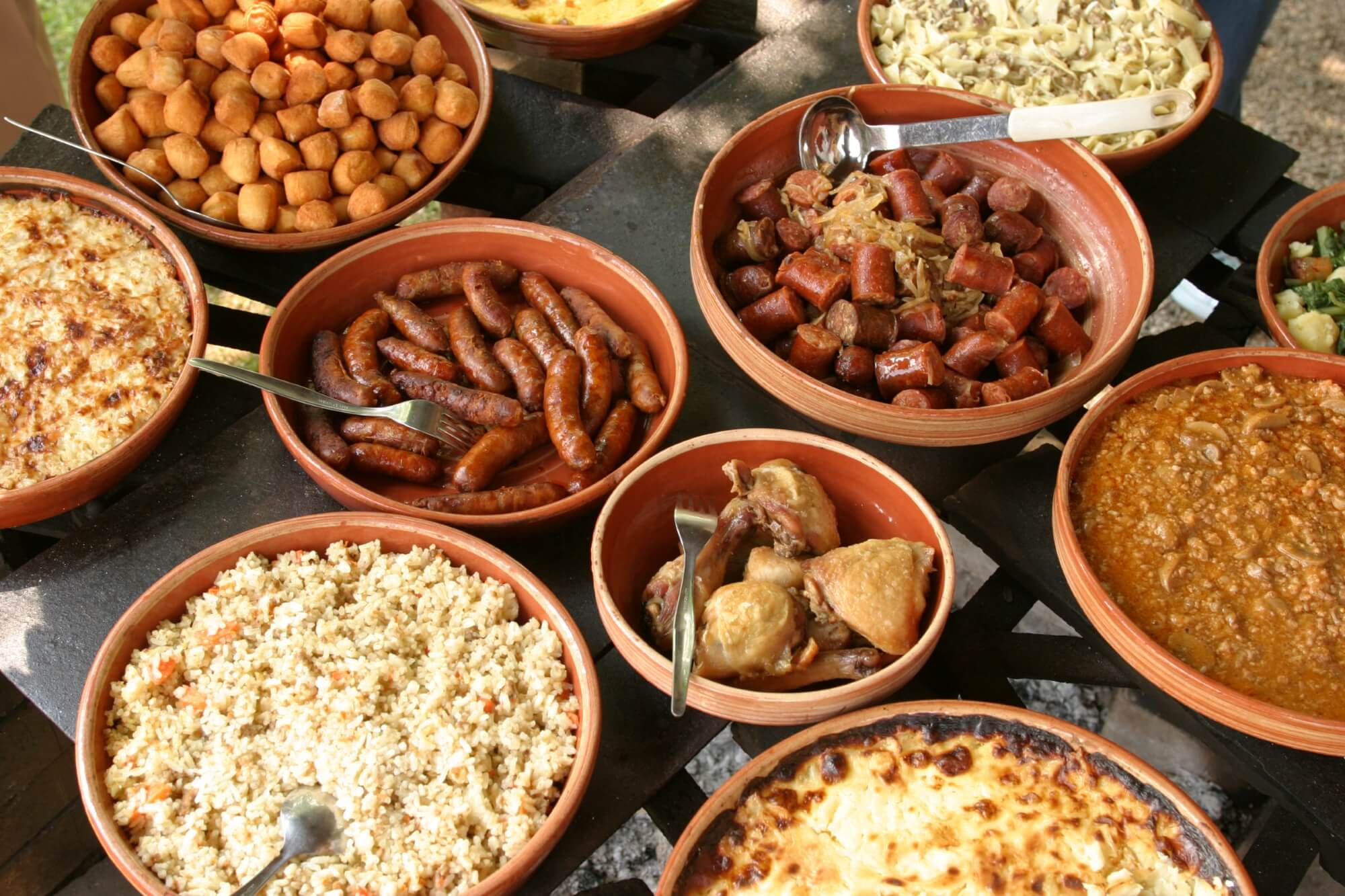 Selection of food from a Slavonian village © Mario Romulić
Selection of food from a Slavonian village © Mario Romulić
What is so rewarding about Croatian Seoski Tourism that international visitors would want to go to a traditional farm in some inland village instead of lying on the beach in Dalmatia for 14 days?
People come because they really want to see a different side of Croatia. And, there are many different aspects of Croatia to discover – not just Seoski Tourism, but also National Parks and Nature Parks. All of our current trends show us that more and more tourists are willing to come inland from the coast or to explore a different part of Croatia – inland Istria, for example, or continental Croatia.
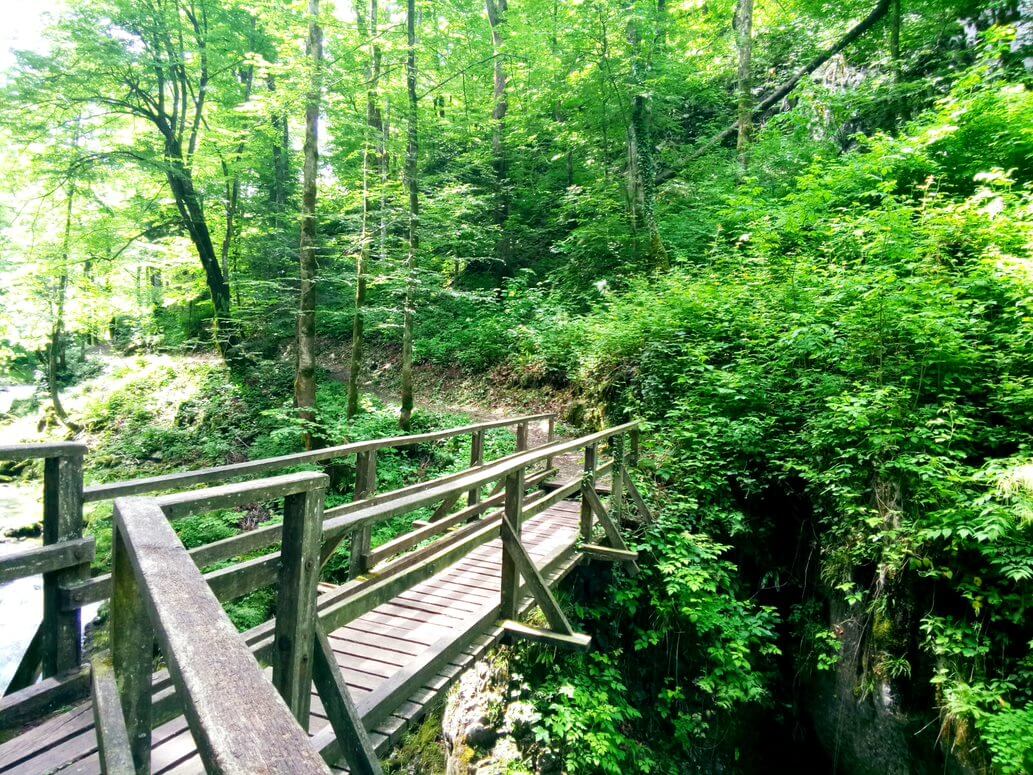 Kamačnik river canyon © Aleksandra Kuratko Pani
Kamačnik river canyon © Aleksandra Kuratko Pani
They really want to try authentic, local food. They want to eat healthy, to know what they are eating and how it is made. And, they want to experience flavours that are different from the usual ones they get from the supermarket.
 Traditional Međimurje table at Etno restaurant Međimurski dvori
Traditional Međimurje table at Etno restaurant Međimurski dvori
Also, I would say that with Seoski Tourism, people get to know better an authentic version of Croatia and its culture. It's a story we hear very often from our members. Some of them are visited by large groups from cruisers. These are people who might be on a cruise on the Adriatic and who journey inland for a day trip. Or, it might be a group who are cruising the Danube and disembark to visit a family farm in Slavonia, Baranja or Srijem.
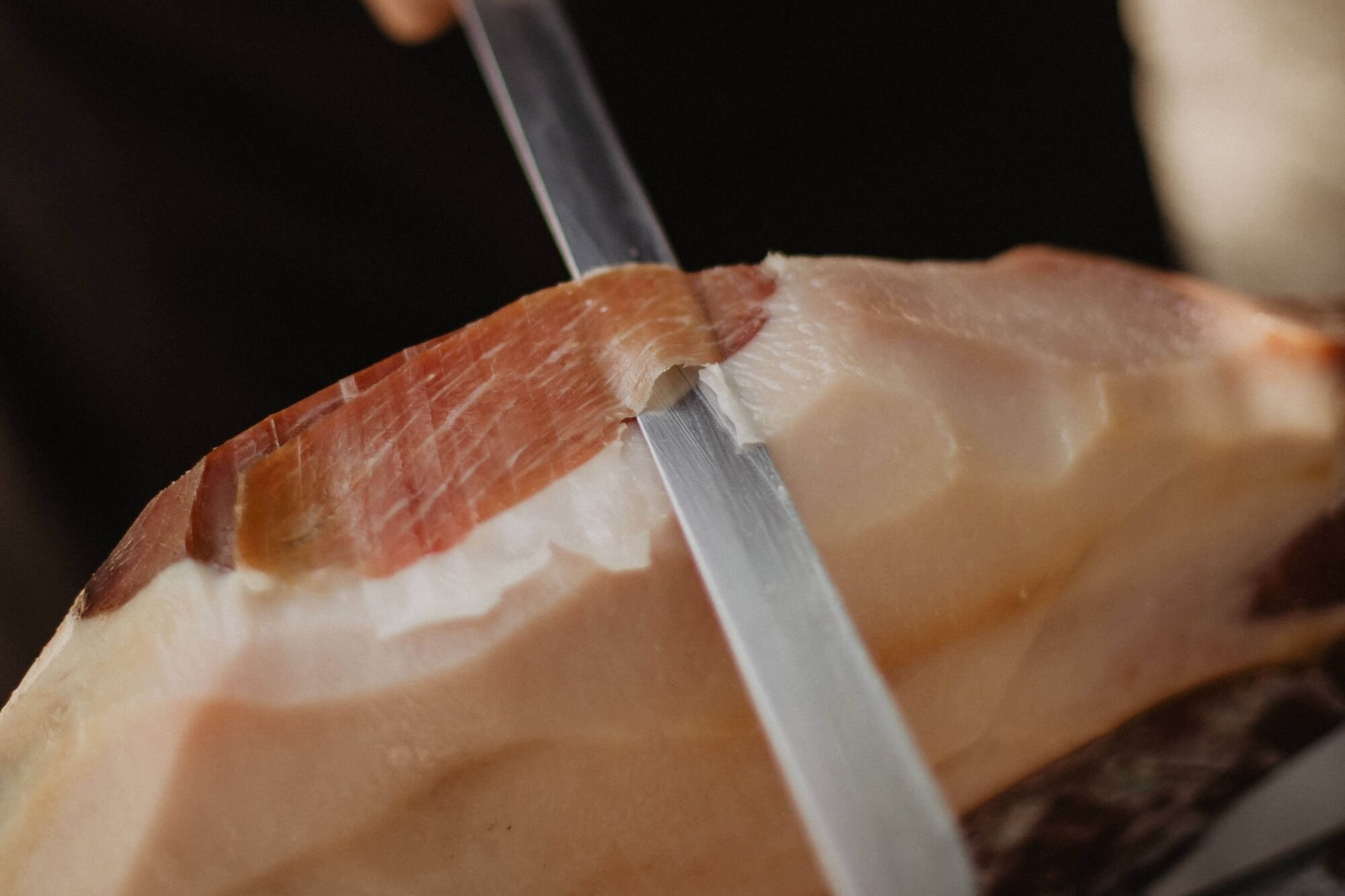 Prosciutto from Drniš at Agrotourism Kalpić © Ivana Kalpić
Prosciutto from Drniš at Agrotourism Kalpić © Ivana Kalpić
When they visit farming estates on day trips, it's very often a huge 'wow' moment for them. For many, in their minds, Croatia is simply sun and sea. And that's not entirely their fault. We, as a country, have done very little until now to promote alternative sides of Croatia. The visitors experience these wow moments because of the hospitality they receive and because of the tangible aspect of the visit. This is a modern aspect – people want to touch things, know how things feel, taste, smell. They want to ride on horses or feed them. Or take part in cultural activities. These parts of a visit to Seoski Tourism are very difficult to experience anywhere else.
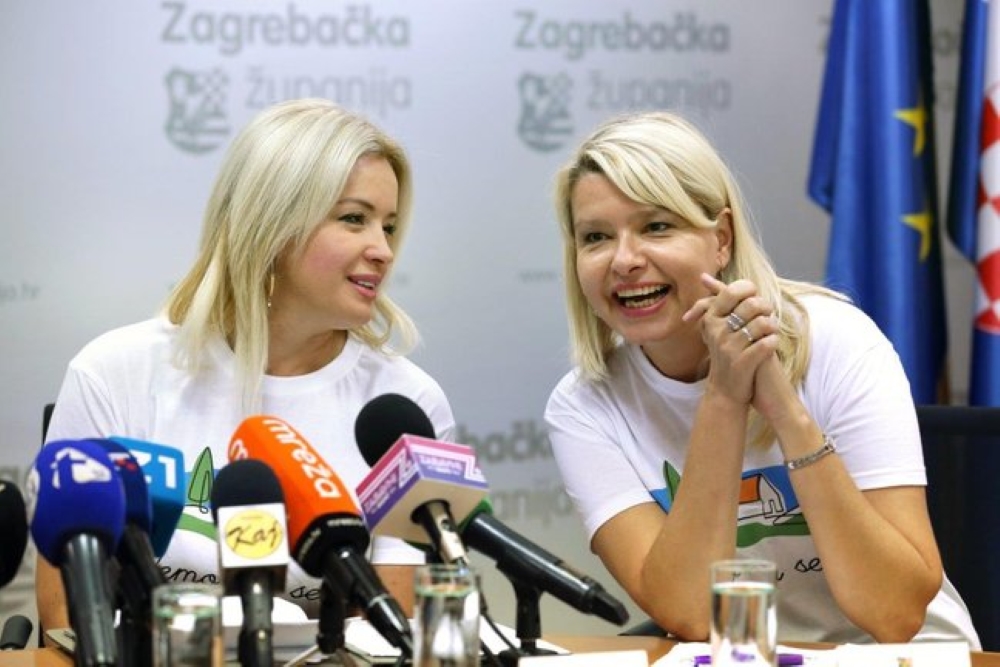 (left) Ivana Alilović, director of Zagreb County Tourist Board (right) Aleksandra Kuratko, secretary of Udruga ruralnog turizma Hrvatske (Croatian Rural Tourism Association) © Zagreb County
(left) Ivana Alilović, director of Zagreb County Tourist Board (right) Aleksandra Kuratko, secretary of Udruga ruralnog turizma Hrvatske (Croatian Rural Tourism Association) © Zagreb County
Udruga ruralnog turizma Hrvatske's online Seoski Tourism workshops begin today and their physical workshops continue next week in Istria.
If you'd like to read more about rural tourism in Croatia, then look here
Osijek to Get Underpass, 13 Buses in Bid to Improve Public Transport System
ZAGREB, 21 May 2021 - Agreements on EU-funded grants for the construction of an underpass and for the procurement of 13 new buses for public transportation system in Osijek were signed on Friday in that eastern Croatian city.
In attendance at the ceremony was Prime Minister Andrej Plenković who said that the 93-million-kuna underpass in S. Leopolda Bogdana Mandića Street would reduce traffic jams in that part of the city.As high as 85% of this investment will be covered by the European Union's funds while the remaining 15% will be covered by the state budget.
Also, 32 million kuna will be set aside for the procurement of 13 new buses for public transportation. The 85% of the amount is also covered by funds from the EU.
All these projects are part of our policy which we have been pursuing since 2016 as part of the "Slavonia, Baranja and Srijem" project, and we have contracted 17.7 billion kuna under that programme, Plenković said.
The outgoing mayor Ivan Vrkić said that during his two mayoral terms, HRK 1.6 billion had been invested in Osijek since Croatia joined the European Union.
(€1 = HRK 7.508080)
For more on travel in Croatia, follow TCN's dedicated page.
Escape to Osijek-Baranja County and its Epic Sights and Flavours
May 14, 2021 – Breathtaking views of the Danube at Erdut and Aljmaš, the bona fide masterpiece of Đakovo cathedral, the unique winemaking traditions of northern Baranja, the wildlife-rich wetlands of Kopački rit and the OPGs of Osijek-Baranja County. There's a whole other world to discover in this epic corner of Slavonia-Baranja.
It seems like the world is speeding up. Everything now is that much more immediate. In this age of Instagram and 'influencers', we quickly scroll past postcard-pretty pictures on our phones. 'Like'. Forgotten, in an instant.
Croatia is a country not without postcard-pretty pictures. But, to snatch attention in this super-fast, vacuous age, all too often we are shown the same images. Heart-shaped islands from above, dolphins at dusk, sunset over the Adriatic and its epic Dinaric Alps. You could be forgiven for thinking that every view in Croatia contains the sea.
 Slavonia © Romulić & Stojčić.
Slavonia © Romulić & Stojčić.
There are very few mountains in the Pannonian basin. And there is no sea. Well, not any more. Instead, these flatlands stretch 600 km from east to west and 500 km from north to south through several countries. They engulf the eastern section of Croatia we know as Slavonia, Baranja and Srijem.
Unsurprisingly, such a vast plain is not without its epic qualities. But, the epic nature of Osijek-Baranja County in Slavonia-Baranja is difficult to capture in a competing image on social media. Its special qualities instead lie in the sounds, the tastes, the tradition, the sights and the people. This is a place that has to be visited to be understood. And, if you do, it's an experience that will far outlast any fleeting photo on Instagram. Here, we take a look at just a small section of the unforgettable offer in Osijek-Baranja.
Imperial horses and the bona fide masterpiece of Đakovo cathedral
State Stud Farm Đakovo
Horse breeding in Đakovo is thought to be even older than 1506 when first written mention of the town's stud farm comes from. An endeavour of regional bishops, it bred horses of Arab stock. But, that changed at the beginning of the 19th Century.
 In the fields, Lipizzaner horses © Silvija Butković.
In the fields, Lipizzaner horses © Silvija Butković.
Lipizzaner horses were the prized breed of the Habsburg monarchy, their genetic line today traced back to eight stallions from the late 18th and early 19th centuries. With the advancement of Napoleon's army across Europe, Lipizzaners were sent further east in order to protect them. This imperial horse has been bred in Đakovo ever since.
Born with black skin and black hair, their hair gradually turns to a characteristic light grey (although, some other colours occur). Traditionally, when the colour change was fully complete, the horses were ready for royal duty.
 Younger horses on the State Stud Farm in Đakovo © Denis Despot / Tourist Board of Osijek-Baranja County.
Younger horses on the State Stud Farm in Đakovo © Denis Despot / Tourist Board of Osijek-Baranja County.
Today, at the State Stud Farm Đakovo, the Lipizzaners are bred and trained in dressage. The farm contains Croatia's largest indoor riding hall, in which public performances take place. Previous visitors to the farm include several members of the British Royal family. Queen Elizabeth II, Prince Phillip and their daughter Princess Anne came in 1972, while Camilla, Duchess of Cornwall came in 2016.
Đakovo cathedral
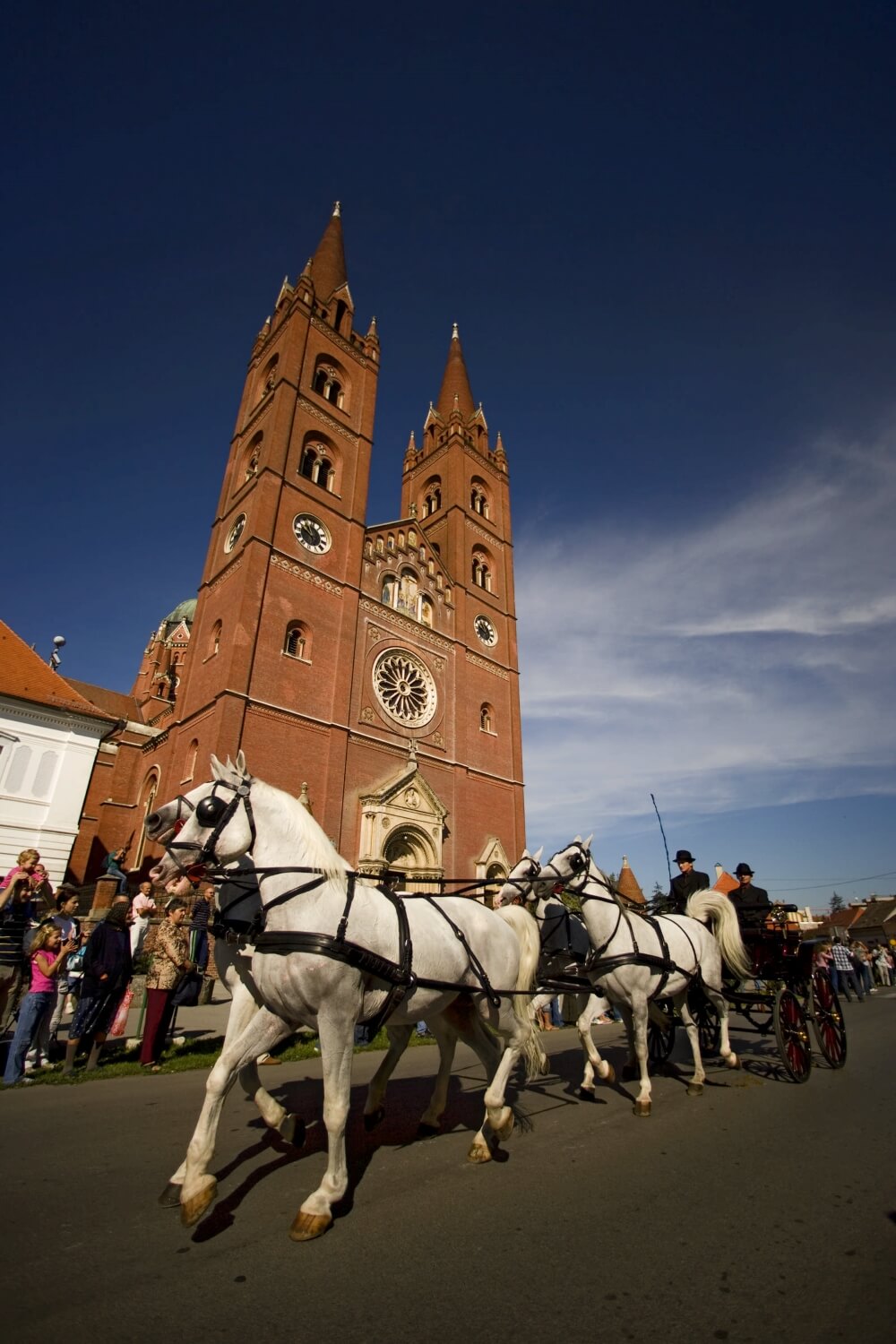 Exterior of Đakovo cathedral © Romulić & Stojčić.
Exterior of Đakovo cathedral © Romulić & Stojčić.
The presence of Bishop Josip Juraj Strossmayer looms large in the history of Croatia. Nowhere does that presence loom larger in a physical manifestation than Đakovo cathedral. By far, it is the largest sacral building in Slavonia, the second-largest in Croatia.
 © Romulić & Stojčić
© Romulić & Stojčić
This part of Slavonia is completely flat. Therefore, you can see the cathedral for miles as you approach Đakovo. Once up closer, its red bricks give it the appearance of a modern building. In fact, Josip Juraj Strossmayer oversaw its construction between 1866-1882. In truth, he'd wanted to build it for much longer, but struggled to get the funds required for his vision. Indeed, the project was so delayed that the artist Strossmayer chose to paint the interior, German Nazarene Johann Friedrich Overbeck, died before he could begin the task. Instead, father and son Alexander Maximilian Seitz and Ludwig Seitz assumed the task.
 Interior detail in Đakovo cathedral © Romulić & Stojčić
Interior detail in Đakovo cathedral © Romulić & Stojčić
The building's construction actually only took four years, but it took a full 19 years to complete decorations inside. It's easy to see why. The interior of Đakovo cathedral is a bona fide masterpiece. Ornate frescos depicting scenes from the Old Testament and New Testament radiate from above. Regardless of your faith, it is a breathtaking experience to walk within.
 © Romulić & Stojčić
© Romulić & Stojčić
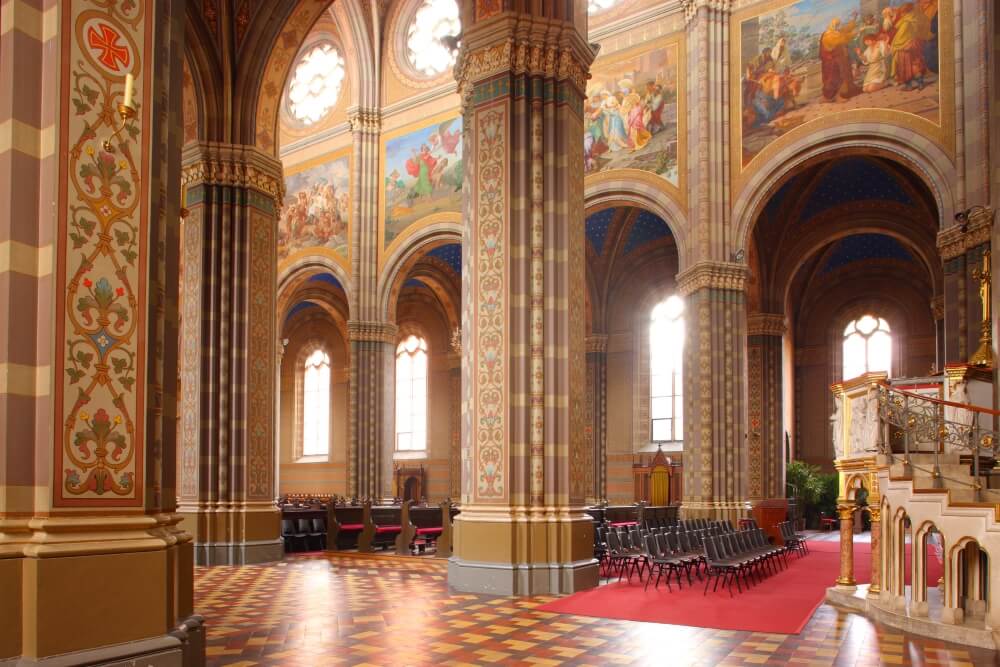 © Romulić & Stojčić
© Romulić & Stojčić
13 of the frescoes are by Alexander, 20 are by Ludwig. The detail of their work captivates the eye. The Neo-Romanesque architectural flourishes design inside are similarly grandiose. Visiting while on a journey to Bulgaria, future Pope John XXIII proclaimed it to be the most beautiful church between Venice and Constantinople.
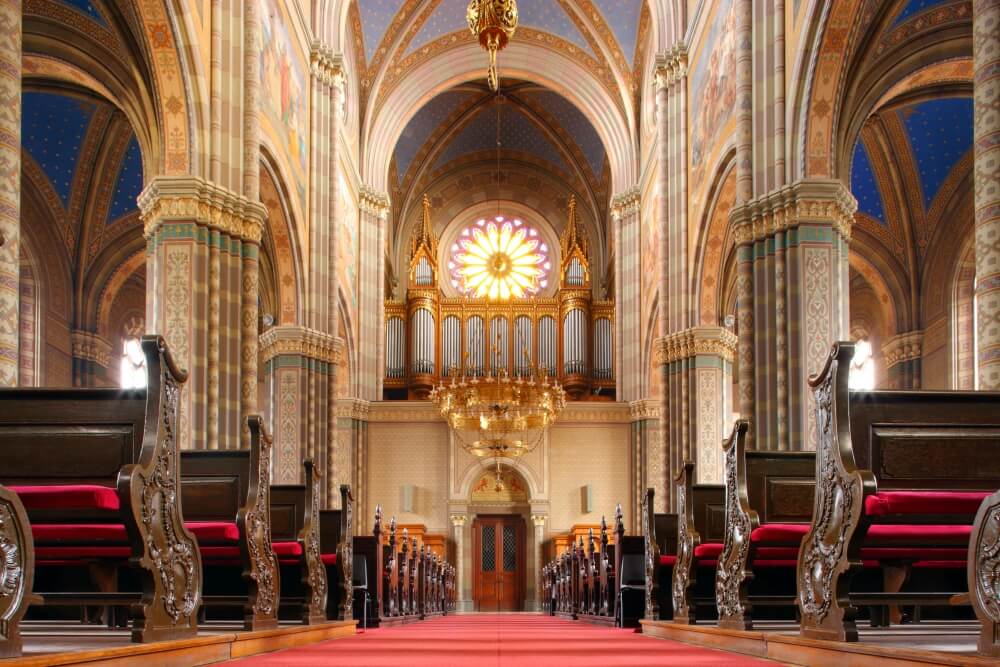 © Romulić & Stojčić
© Romulić & Stojčić
Breathtaking views of the Danube at Erdut and Aljmaš
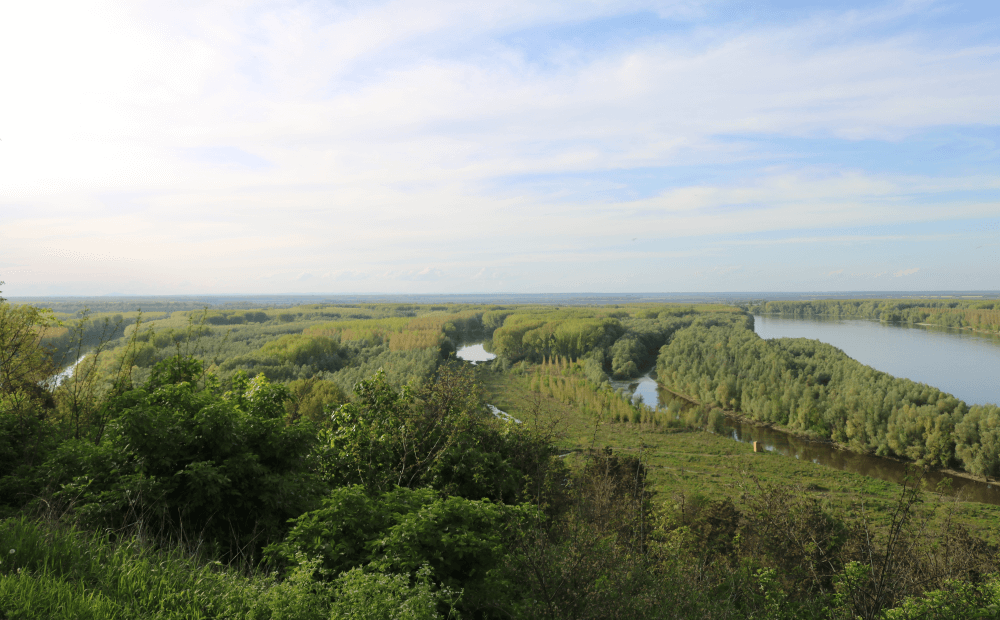 The Danube, as seen from the Brzica winery terrace in Erdut © Marc Rowlands.
The Danube, as seen from the Brzica winery terrace in Erdut © Marc Rowlands.
Slavonia is defined by its two longest rivers. To the south, after passing through Zagreb and Lonjsko Polje, the Sava forms a natural border between Slavonia and Bosnia. To the north, the Drava river first separates Croatia and Hungary. Then, after Donji Miholjac, it serves as the border between Slavonia from Baranja. Just a mile or so from Aljmaš, the Drava flows into the Danube, which partially separates Slavonia from Vojvodina.
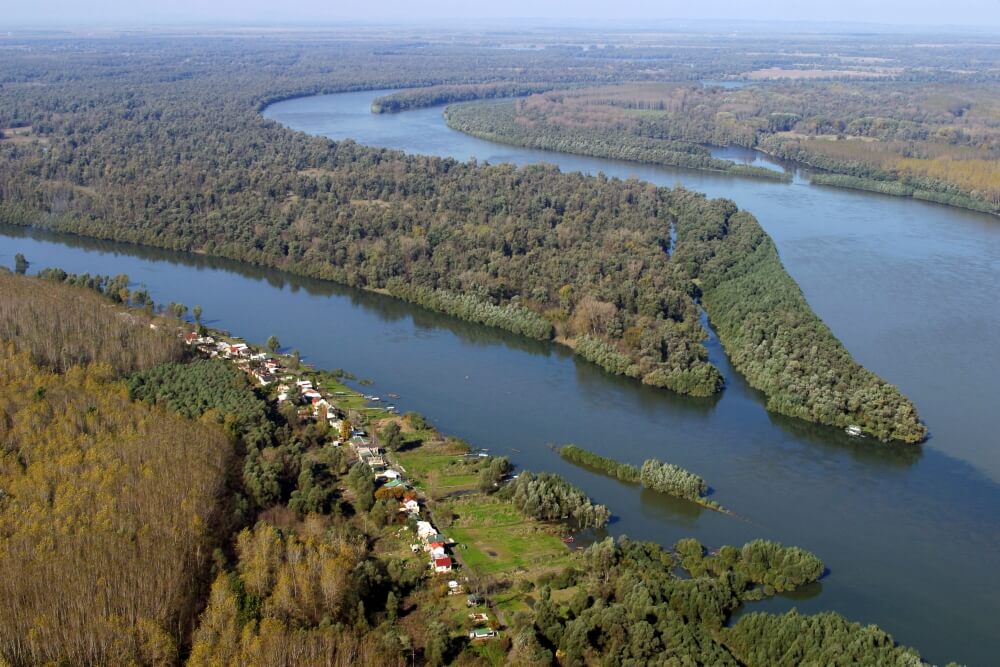 The Danube in eastern Slavonia © Romulić & Stojčić.
The Danube in eastern Slavonia © Romulić & Stojčić.
When you're standing overlooking the Danube in Erdut village, you could almost believe you're on an island. The peninsula in which the village lies is surrounded on three sides by the Danube. It weaves in and out of the landscape, causing great gulfs between the dense forest that occurs on each side. This area is noticeably raised above the height of regular, flat Slavonia and in Erdut, a small castle tower stands on a hill. It's one of the best places to look at the Danube. The other is from the Brzica winery, less than a kilometre away.
At Brzica, you're some 80 metres above the Danube. Here, winery owner Ivo Brzica has taken advantage of the view. He's built a beautiful holiday home where guests can stay. It's right next to his own dwelling and the winery. The properties share a huge, open and informal terrace overlooking the river. It's a great place to try the award-winning Brzica wines. They plant Graševina, Chardonnay, Cabernet Sauvignon, Merlot and Vranac. On some bottles, the label reads 1378. It's the number of kilometres the Danube has travelled to reach this point.
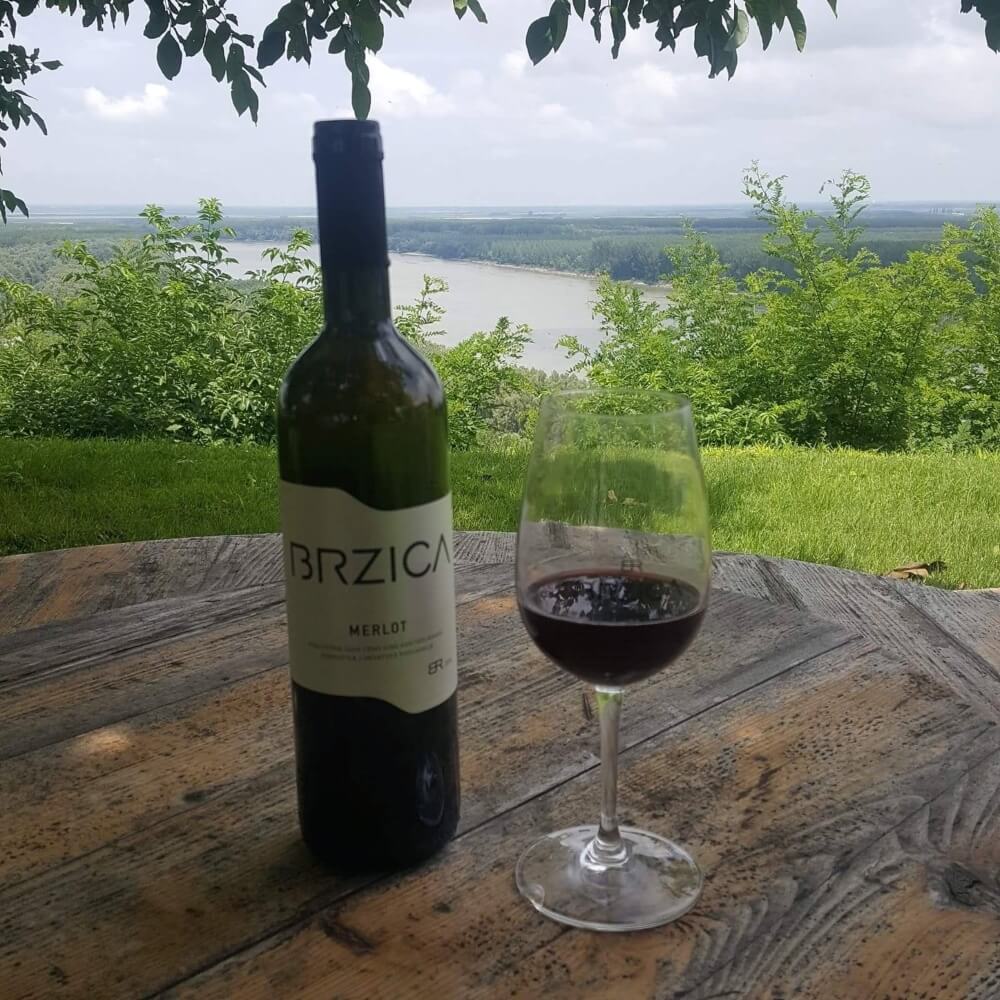 A glass of Brzica wine overlooking the Danube.
A glass of Brzica wine overlooking the Danube.
Erdut visitors wanting to get up closer to the Danube can now do just that. A newly appointed 10-kilometre footpath now runs alongside the river all the way from Erdut to Aljmaš. It's a beautiful walk through epic nature.
The unique landscape and winemaking traditions of northern Baranja
While much of Slavonia is uniformly flat, the topography is more varied in Baranja. Baranja Mountain stretches in a northeast-southwest direction between Beli Manastir and Batina. It is 21 kilometres long, three kilometres wide and much of its slopes are used for agriculture, grapes for winemaking, predominantly.
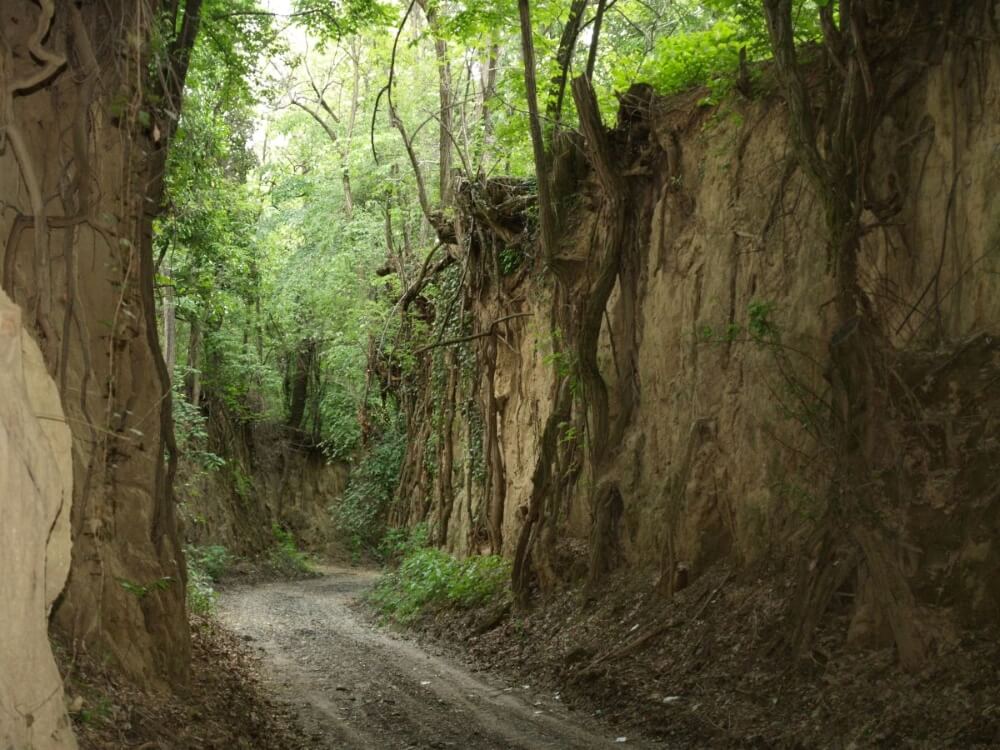 A Surduk in Baranja © Krešimir Čandrlić / Tourist Board of Osijek-Baranja County.
A Surduk in Baranja © Krešimir Čandrlić / Tourist Board of Osijek-Baranja County.
Long ago, heavy rains began to produce natural gorges which cut through the higher ground. Over time, some of these became considerably deep, widened by the flow of water and sometimes mud. Eventually, these gorges between hillsides became passageways for horses and carts. In Croatia, these narrow routes are exclusive to the Baranja region and are very pretty to walk. Their walls are lined with tree roots, which stop them from collapsing. The branches and leaves of these trees often overhang the gorge, sometimes giving you the impression you're in a tunnel. Such a route in Baranja is known as a Surduk.
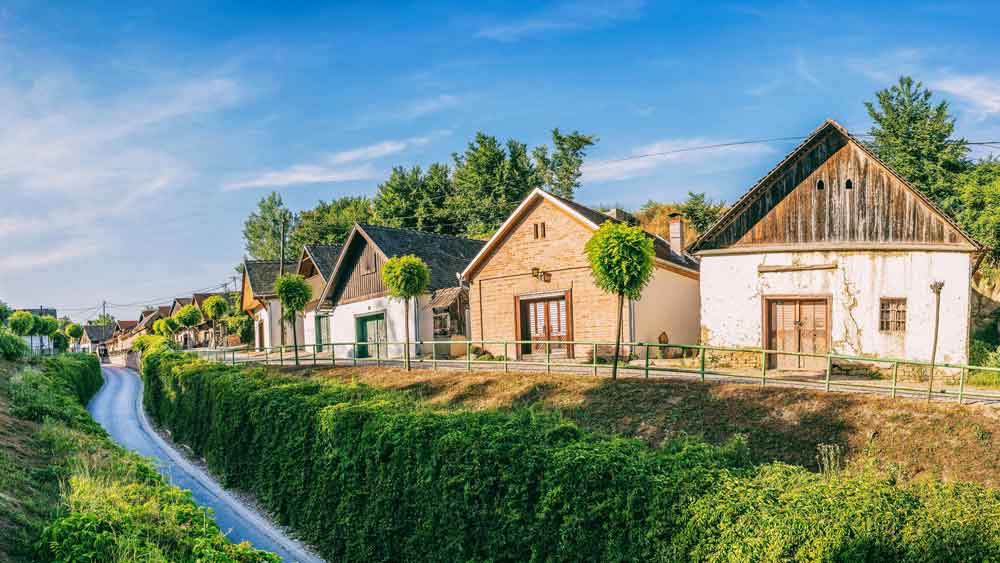 A line of traditional Baranja wine cellars. Unique in Croatia to Baranja, such a building is known as a Gator © Visit Baranja.
A line of traditional Baranja wine cellars. Unique in Croatia to Baranja, such a building is known as a Gator © Visit Baranja.
On this same ground, you'll find another phenomenon unique to Baranja. A Gator is a traditional wine cellar of this region. Sometimes found on the lower course of a Surduk, a Gator is unlike a typical wine cellar in that it has no subterranean section where the wine is stored. Instead, a Gator extends back into the hillside. Wine is kept in the deepest recesses of the building, where it is coolest. In several places in Baranja you can see a street with several of these buildings side by side. Usually, each Gator is owned by a different family and each will make their own particular family wine.
Podrumi Kolar family winery in Suza
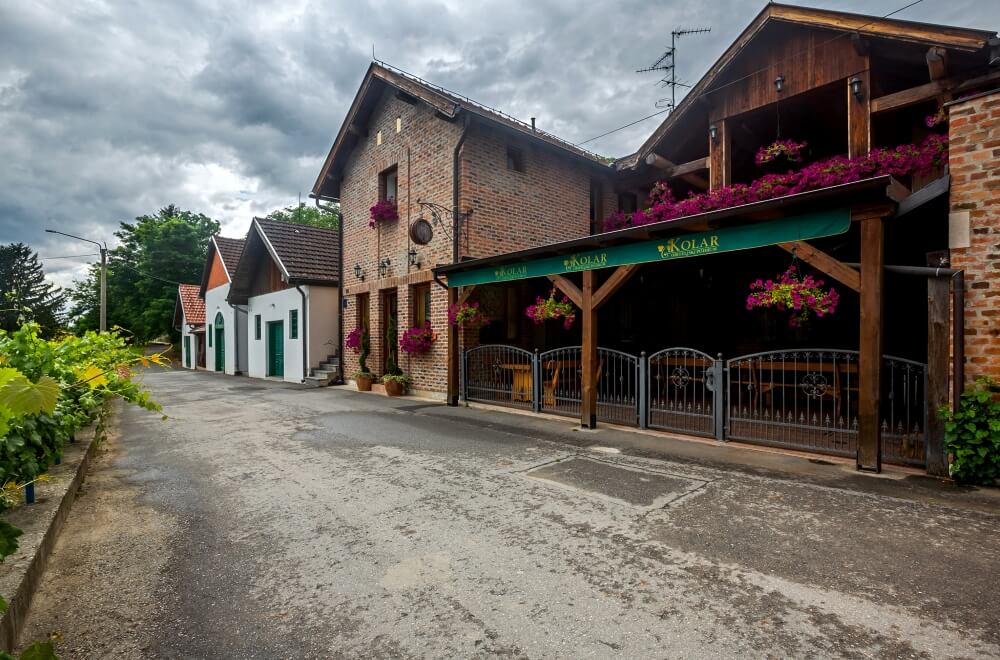 With a 100-year-old cellar and great wines, the Podrumi Kolar family winery in Suza.
With a 100-year-old cellar and great wines, the Podrumi Kolar family winery in Suza.
The Kolar family wine cellar is 100 years old, although the restaurant and tourism aspect of their enterprise has only been around since 2004. The whole family are involved and they purposefully intertwine their winemaking with a visitor offer. In addition to the restaurant attached to the wine cellar and they have a wonderful campsite just a couple of hundred metres down the road. All of their wines are great. But, if you visit, be sure to try their Sauvignon. Some say it's the best in the whole of Baranja.
Josić winery and restaurant in Zmajevac
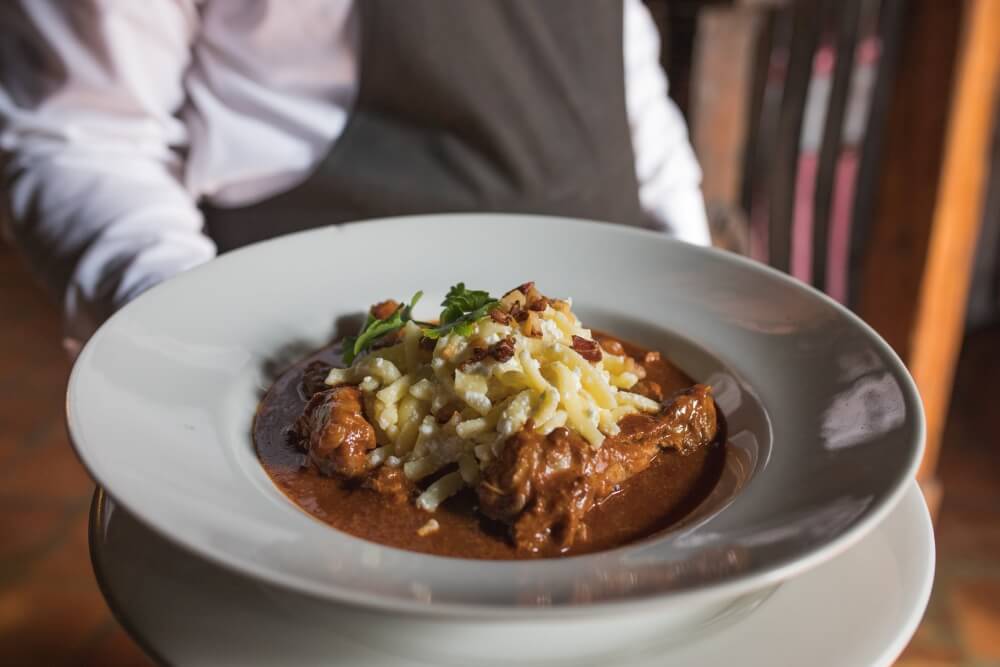 Traditional Baranja and Slavonia flavours at the Josić winery and restaurant in Zmajevac.
Traditional Baranja and Slavonia flavours at the Josić winery and restaurant in Zmajevac.
At the Josić winery and restaurant in Zmajevac they make brilliant wines. Among them, Baranja shiller, Cabernet Sauvignon, Chardonnay, Graševina, Pinot Gris and Sauvignon. You can visit the wine cellars and try traditional foods of the region in their extensive restaurant.
Vinarija Gerštmajer in Zmajevac
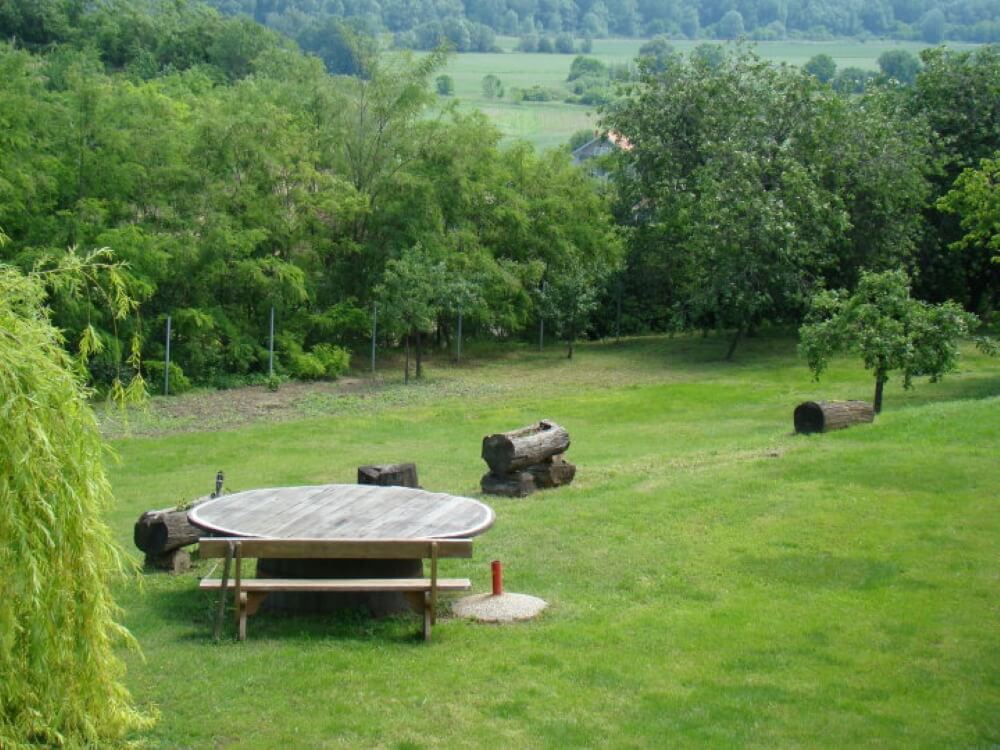 Incredible views from the garden at Vinarija Gerštmajer in Zmajevac.
Incredible views from the garden at Vinarija Gerštmajer in Zmajevac.
A deep dust gathers on some of the oldest bottles kept in the cellar at Vinarija Gerstmajer. And, there's plenty of those. The charming family patriarch is clearly a proud wine enthusiast and reserves some bottles from every year of their celebrated but small production. Sadly, this archive now stretches back only until the mid-1990s. It used to be much older, cataloguing all of the years his own father ran the winery. But, when the family returned after the war, they were greeted by empty cellars. The cellars are once again full. You can try them in the cellar or out on the terrace, overlooking a scene of uninterrupted nature.
The wildlife-rich wetlands of Kopački rit
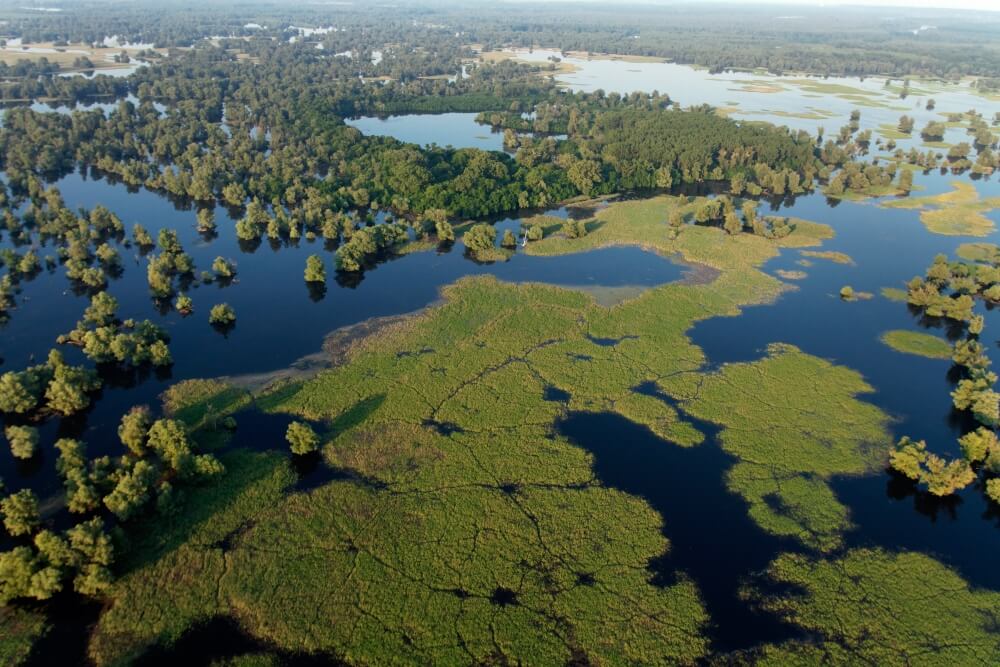 Wetlands of Kopački rit © Tourist Board of Osijek-Baranja County.
Wetlands of Kopački rit © Tourist Board of Osijek-Baranja County.
Occupying the marches, lakes and floodland between the Drava and the Danube, Nature Park Kopački rit is one of Europe's largest wetlands. Although a home to many different types of life, it is most famous for its bird population. As many as 300 different species of birds inhabit the park, many of them being migratory and nesting species. Of particular note, a large colony of grey heron and and the largest population of woodpeckers in the entire Danube basin. You can now tour a section of the waters in a large visitor boat. It is electrically powered so as not to disturb the life-rich riverbanks. After the boat drops you off, make your way through the rest of the park across specially constructed pathways that wind their way across the waters and reeds.
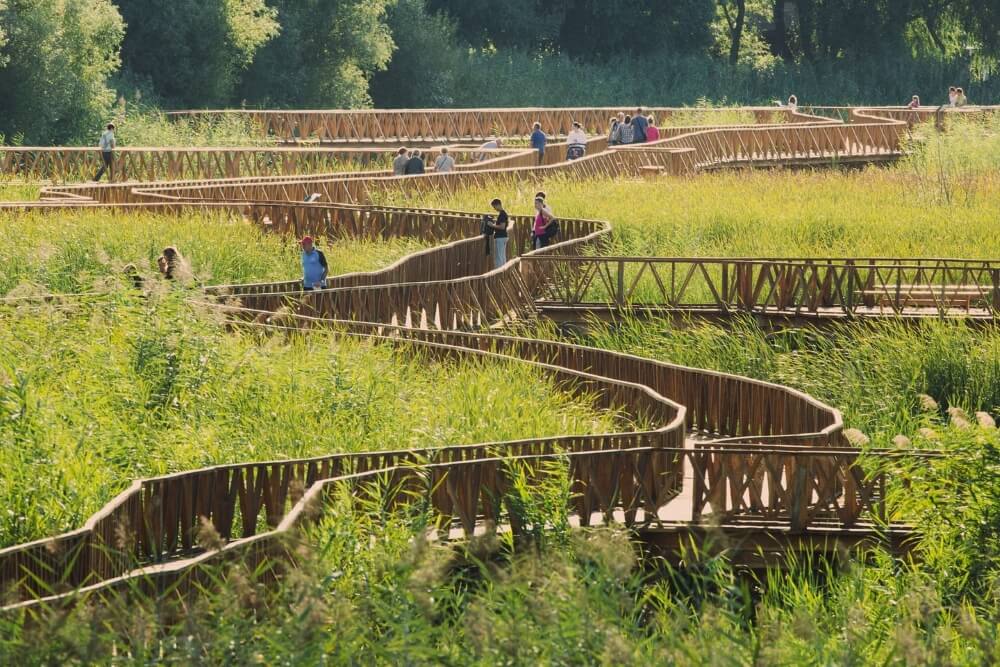 The wooden walkways of Kopački rit Nature Park in Osijek-Baranja County © Romulić & Stojčić.
The wooden walkways of Kopački rit Nature Park in Osijek-Baranja County © Romulić & Stojčić.
The OPGs of Osijek-Baranja County
The landscape in Osijek-Baranja County is only so picturesque because of the people who live in it. It is their endeavours that shape it. Traditional agricultural pursuits explain the pretty rows of vineyards, the different coloured fields and gardens filled with fruit trees. While some agriculture here exists on a grand scale, many families in the region make the most of their own small plots of land.
Osijek-Baranja County family farms or OPGs preserve the traditions of the region, not only in the way they use the land but in the produce that results. From the beekeeping that makes EU-protected honey to the vineyards producing Croatia's best white wine, practices in these family farms are often passed down from generation to generation. The best way to learn how they do it – and try the amazing traditional flavours of Osijek-Baranja County – is to go to an OPG. Here are just several you can visit.
Zorić distillery in Erdut
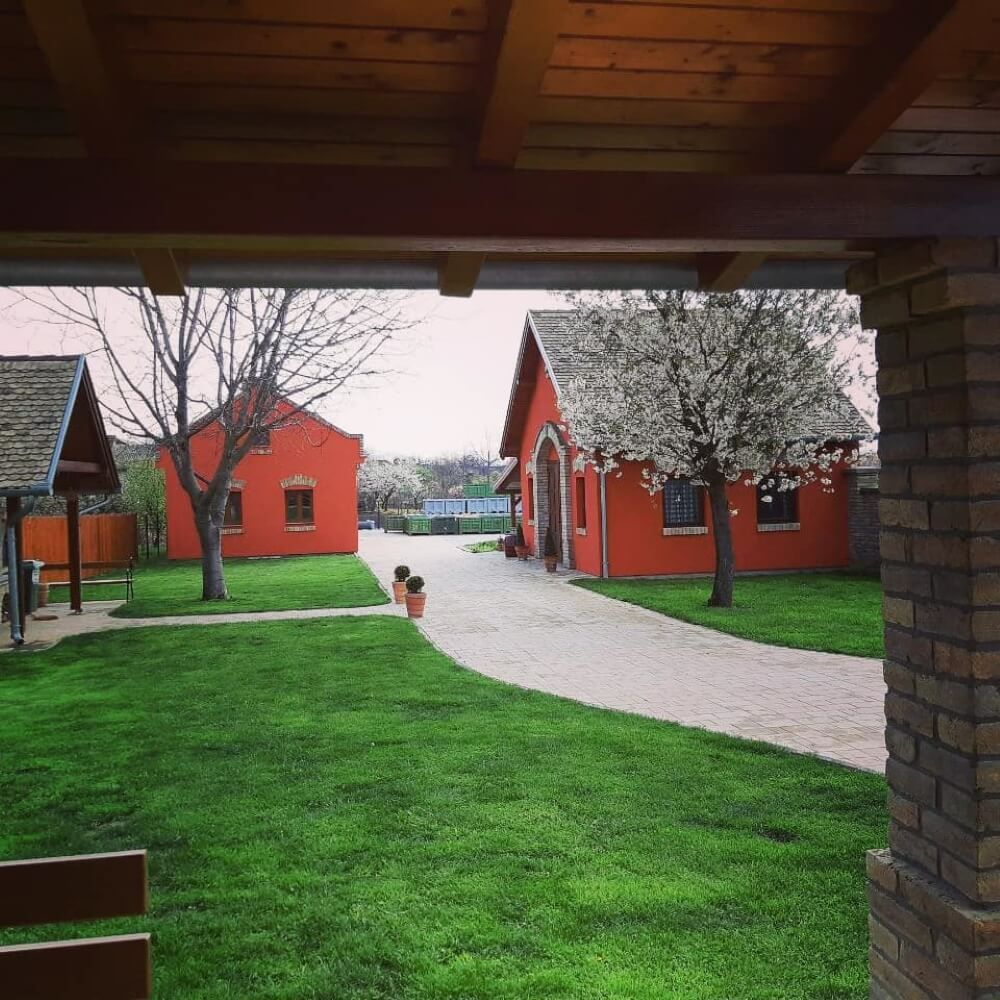 Zorić distillery in Erdut, Osijek-Baranja County.
Zorić distillery in Erdut, Osijek-Baranja County.
The Zorić family in Erdut have long been growing fruit and making Croatian brandy aka rakija. But, this youngest generation, lead by youthful father Dinko and his wife Sanja, have upped their game significantly. They have built the most modern craft rakija distillery in the region. From there, they make one of Croatia's best new premium rakijas, Divania. In English or Croatian, they will guide you around the distillery and explain the process before letting you try it on their lovely terrace. If you're lucky, you might also get to try the family-made kobasica sausages – they're very good! Their rakijas are made from apricots, quinces, apples, pears and cherries and the family are great hosts.
Seoski turizam Lacković in Bilje
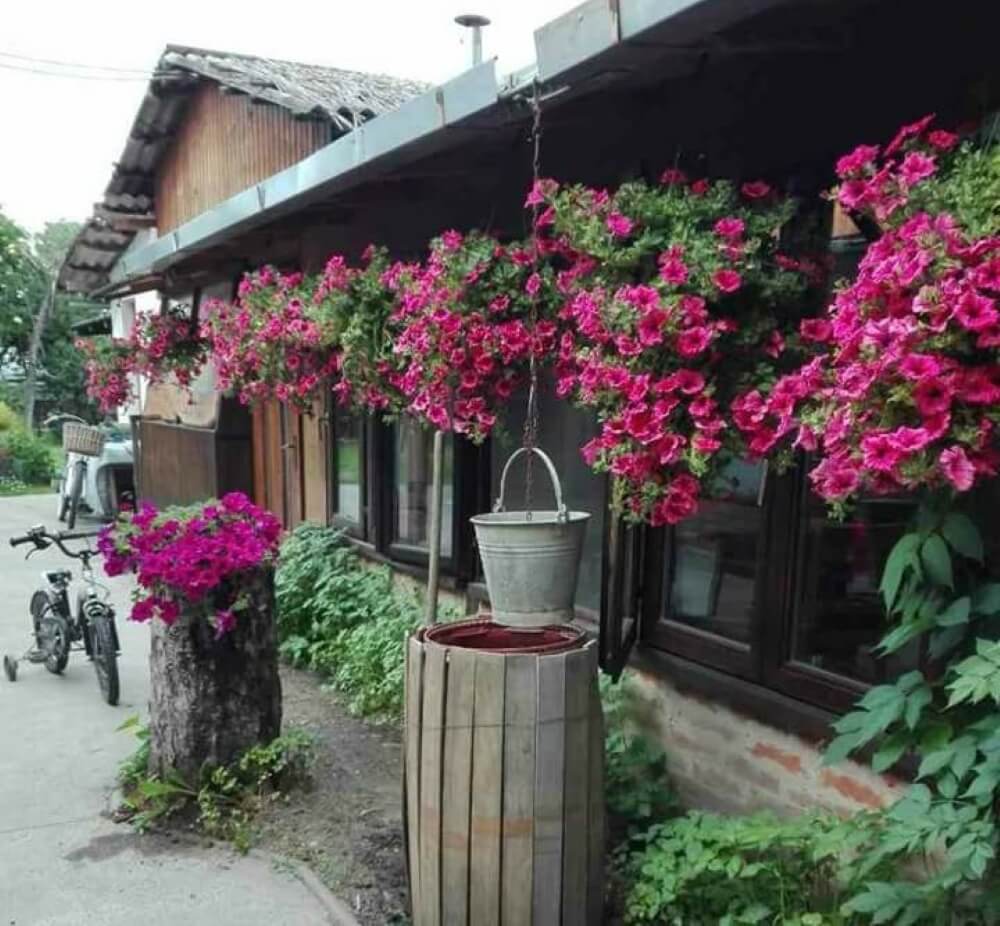 Filled with flowers, Seoski turizam Lacković in Bilje.
Filled with flowers, Seoski turizam Lacković in Bilje.
A beautiful family-run farm, with 16 beds for guests, Seoski turizam Lacković are used to hosting visitors. The farm itself has pretty rows of vegetables out back. Next to them, a variety of birds are kept. The hosting area has a lovely terrace with a view of the pretty tree-lined path that extends down through the large garden. During the recent Month of Baranja Cooking (Mjesec baranjske kuhinje), visitors tried their hand at making traditional baked foods pita and kiflice.
OPG Čudesna šuma
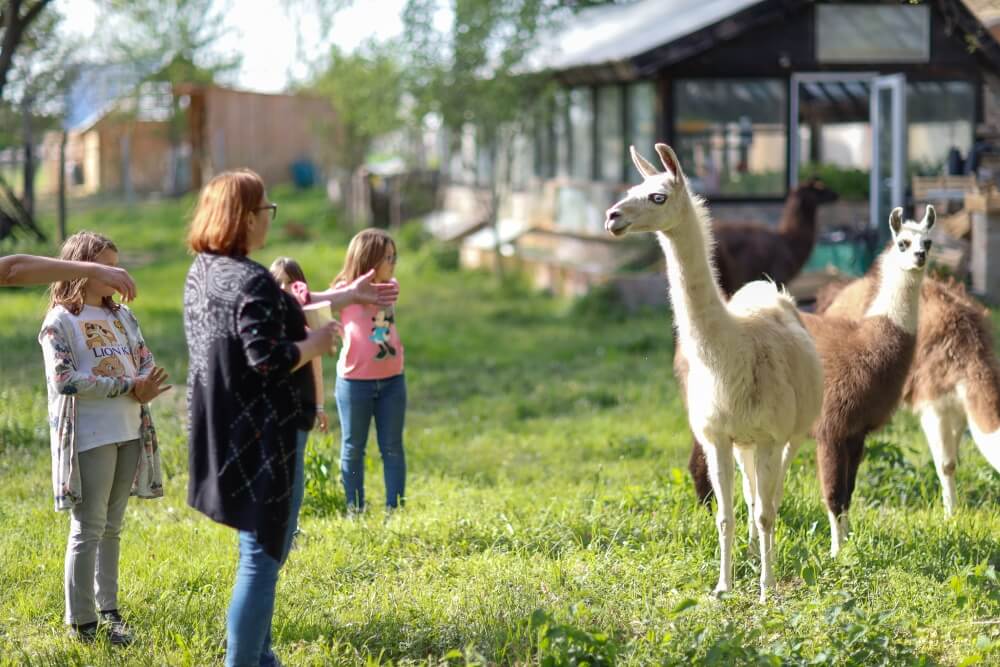 Meeting the llamas at OPG Čudesna šuma © Turistička zajednica Općine Bilje - Kopački rit.
Meeting the llamas at OPG Čudesna šuma © Turistička zajednica Općine Bilje - Kopački rit.
Visit the llamas or a special gastronomic event at this future eco-village and food forest. To read a detailed reportage from our spring 2021 visit to OPG Čudesna šuma, look here.
Both the author and Total Croatia News would like to thank the following for their invaluable help in creating this article: Ivana Jurić and the Tourist Board of Osijek-Baranja County, Marija Burek and the Tourist Board of Đakovo, Renata Forjan and Turistička zajednica Općine Bilje - Kopački rit and Domagoj Butković of expert travel guides to Slavonia and Osijek-Baranja County, Kulen travel.
OPG Čudesna šuma: Paradise Reimagined in Beautiful, Traditional Baranja
May 13, 2021 – OPG Čudesna šuma: How an unexpected turn of events helped world-renowned photographer Mario Romulić realise his lifelong dream.
War and genocide and the aftermath. Famine. Disease. Death. In a former life, harrowing images filled the lens of internationally renowned photographer Mario Romulić. But thankfully, we're now far from such scenes.
In fact, at OPG Čudesna šuma - Mario Romulić's home and family farm - we're pretty much far from everything. One other eco-farm is his only neighbour. Well, unless you count the llamas the Romulić family keep out back. Occasionally, through the rich green of surrounding trees, you see birds flying above the branches. Probably they're toing and froing from Kopački rit. The nearby Nature Park is less than a kilometre from OPG Čudesna šuma. Famously, the wetlands are home to over 250 species of birds. They are also the reason why Mario Romulić is here.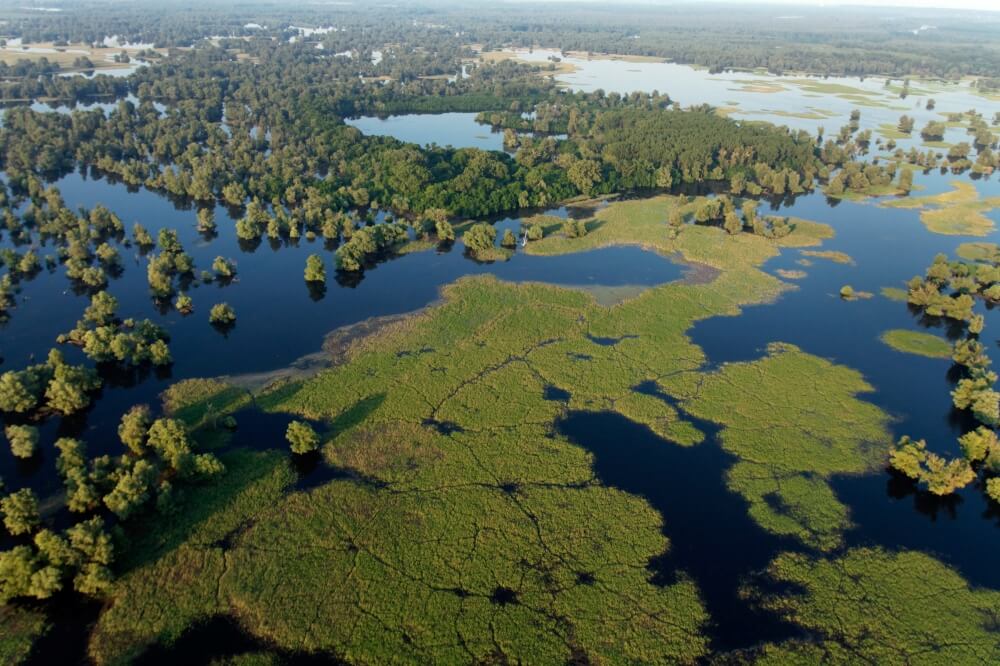 Kopački rit Nature Park © Kopački rit Nature Park.
Kopački rit Nature Park © Kopački rit Nature Park.
“Back then, I was very occupied with Kopački rit,” remembers Mario of the time, 21 years ago, when he moved to what is now OPG Čudesna šuma. “I was working as a cameraman for people like Reuters, all over the world. The assignments would last 7-10 days and I'd be in places like Afghanistan, Rwanda, Congo, Liberia, Bosnia. It was often quite dangerous. For the next 20 days, I would spend a lot of time in Kopački rit, trying to calm my nerves. It was something like a cure after seeing all these horrible scenes. Eventually, instead of travelling every day from my home in Osijek to Kopački rit, I decided to try and find something close by. And this is what I found.”
Just as this beautiful, natural landscape in Bilje, Baranja once served as a peaceful getaway for Mario Romulić, his OPG Čudesna šuma today does the same for others. Because, after dreaming for two decades of turning this blissful plot and homestead into a forest farm and eco-village, Mario Romulić is finally turning that vision into a reality.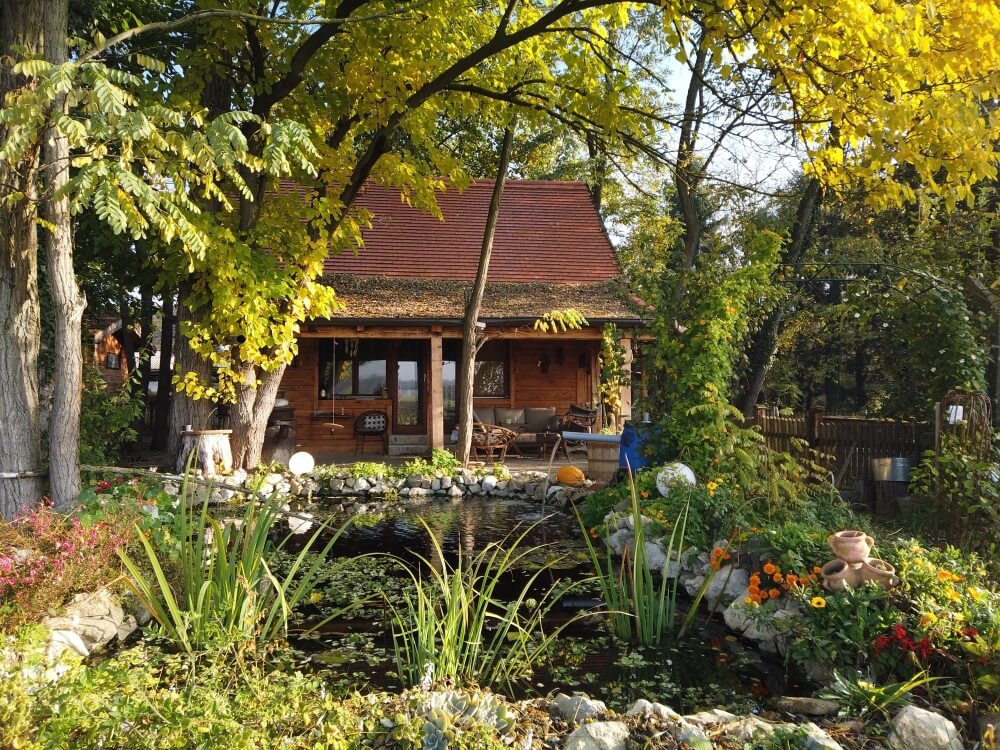 The impossibly pretty OPG Čudesna near Kopački rit Nature Park, Bilje Municipality, Baranja © OPG Čudesna šuma.
The impossibly pretty OPG Čudesna near Kopački rit Nature Park, Bilje Municipality, Baranja © OPG Čudesna šuma.
“Because of my job - first, travelling all around the world, then travelling Croatia - I did not even have much time to think about it, let alone do it,” says Mario. “But, then Corona came. Finally, I found myself at home. At last, I had time to work on my dream.”
OPG Čudesna šuma in the Month of Baranja Cooking (Mjesec baranjske kuhinje)
A group of 30 or so are Mario's guests today at OPG Čudesna šuma. They're here for a presentation of speciality cooking. It's the grand finale of the Month of Baranja Cooking (Mjesec baranjske kuhinje).
Over previous weeks, OPGs from all across the region have welcomed guests to try goulash, soups, stews, perklet and other traditional foods of the area. While visiting, they've been embraced by the beautiful landscape of Baranja. Not only have they discovered how this delightful, distinct cuisine tastes, but also they've learned exactly how it's prepared. However, they've evidently saved the best for last. On the menu today, river fish inventively cooked, accompanied by a riotous rainbow of seasonal vegetables. Seasonal vegetables of Baranja in springtime at the Month of Baranja Cooking (Mjesec baranjske kuhinje) © OPG Čudesna šuma.
Seasonal vegetables of Baranja in springtime at the Month of Baranja Cooking (Mjesec baranjske kuhinje) © OPG Čudesna šuma.
It's a beautifully sunny day, right at the start of May. It depends on your preference, but looking across this happy vista in the glorious sunshine, it's difficult to imagine this not being the perfect time to be in Baranja. Young children are raised to chest height by their parents so they can meet Mario's free-roaming llamas face-to-face. The children's faces flit between surprise, curiosity and delight. The llamas return their stare. They're used to welcoming new guests. Meeting the Romulić family llamas at OPG Čudesna šuma © Turistička zajednica Općine Bilje - Kopački rit.
Meeting the Romulić family llamas at OPG Čudesna šuma © Turistička zajednica Općine Bilje - Kopački rit.
Partially shaded by trees, the smiling adult guests sit casually on wooden benches around a central, outdoor cooking area. Several open fires display a range of traditional cooking methods. Steam rises from a cast-iron stove suspended over one. Beneath the vapours, you can make out the dish is fish paprikash. It's unmistakable because of the deeply red coloured bubbles, a result of generous amounts of paprika.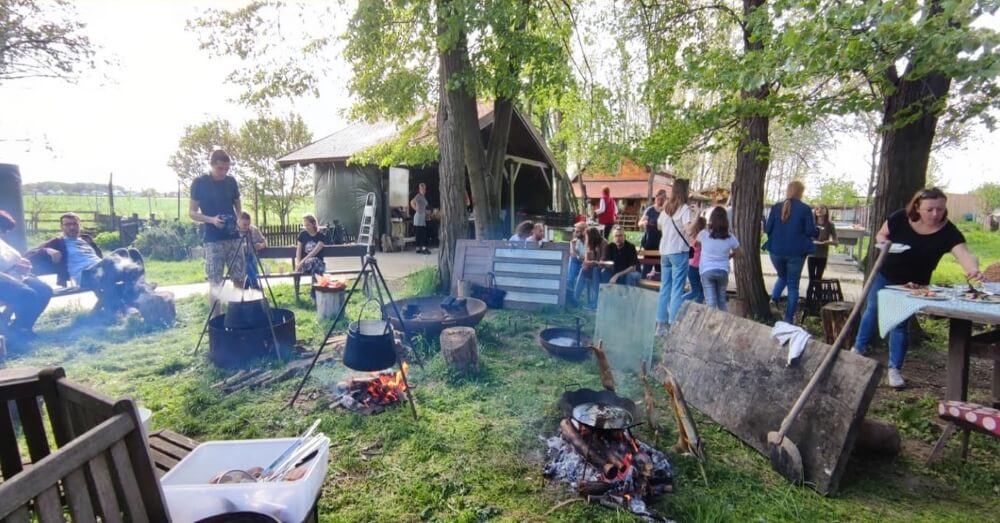 Guests enjoy a warm springtime day at OPG Čudesna šuma during the Month of Baranja Cooking (Mjesec baranjske kuhinje), as fish paprikas cooks over an open fire © OPG Čudesna šuma.
Guests enjoy a warm springtime day at OPG Čudesna šuma during the Month of Baranja Cooking (Mjesec baranjske kuhinje), as fish paprikas cooks over an open fire © OPG Čudesna šuma.
A huge bag of this paprika sits propped up, close by. It's from another organic OPG, just a kilometre or so from here. The colour is vivid, impossibly red, unrecognisable from anything store-bought. At the next fire, pike impaled on wooden sticks are placed far enough from the flickering flames so they cook slowly and do not burn.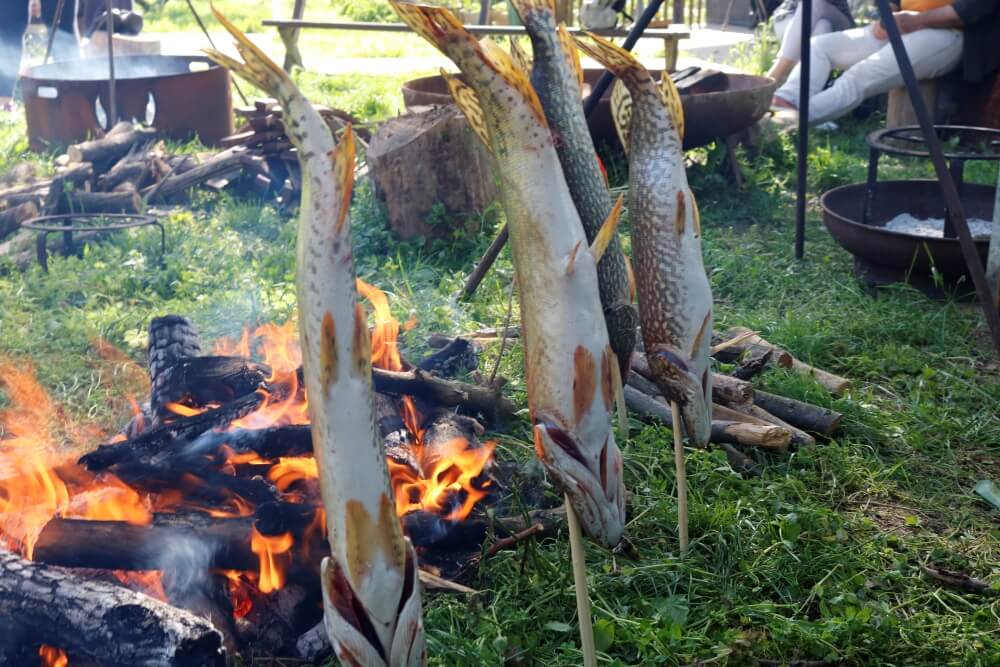 Pike impaled on sticks, cooking by an open fire at OPG Čudesna šuma @ Marc Rowlands.
Pike impaled on sticks, cooking by an open fire at OPG Čudesna šuma @ Marc Rowlands.
In the outdoor kitchen, Mario Romulić's co-chefs prepare an unending supply of fish dishes and vegetables. Carp, catfish, trout, bream. There's a bounty of fresh asparagus. It's that time of year. With the restraint of experience, they've cooked it perfectly. After the crunch of the bite, the flavour explodes. They're seasoned simply – delicious olive oil and sea salt.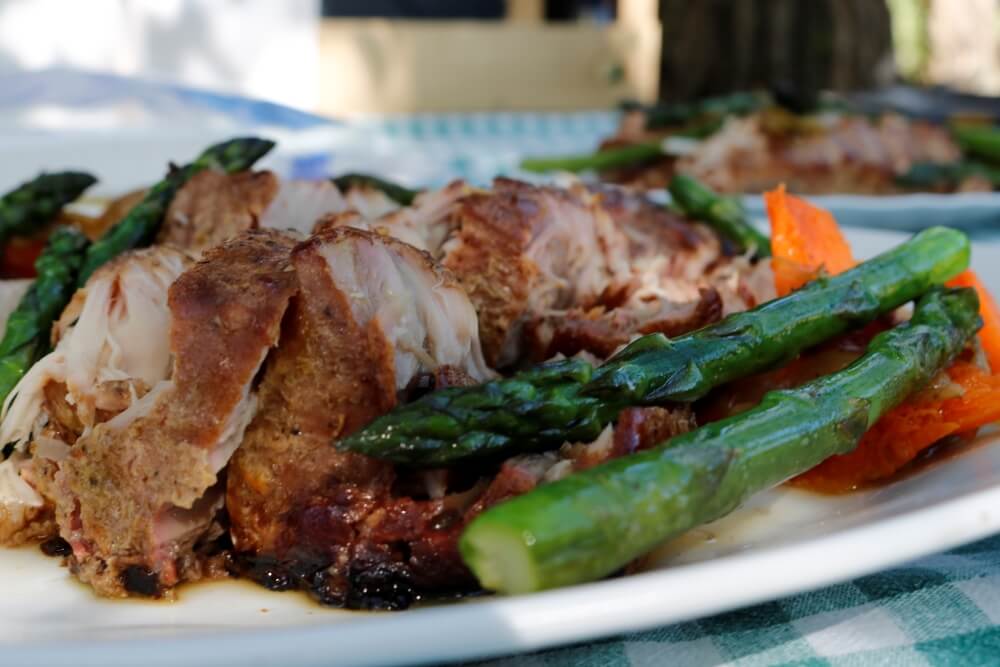 Seasonal asparagus, perfectly cooked, served with smoked river fish © Marc Rowlands.
Seasonal asparagus, perfectly cooked, served with smoked river fish © Marc Rowlands.
A group of peers – accomplished chefs from Osijek-Baranja restaurants – peak over the shoulders of Romulić's co-chefs. They're admiring the inventive techniques employed. Although, being chefs, they can't help themselves. They end up briefly forgetting their families in order to help out.
Mario Romulić, the host with the most
 Mario Romulić © Turistička zajednica Općine Bilje - Kopački rit.
Mario Romulić © Turistička zajednica Općine Bilje - Kopački rit.
After all the guests arrive, Mario Romulić holds court. Cheerily he welcomes us all to OPG Čudesna šuma and the event. Without question, the success of rural, village tourism depends on the personalities of the hosts. It's no good plonking a group of visitors in a pretty place and throwing some food in front of them. We've all seen trees, grass and food before. Rural tourism is not just about the place, it's about the experience, the ambience. And, especially, it's about the people.
Hands down, the OPGs of Slavonia and Baranja are the best in Croatia at this. The folks here are famous for their friendliness, warm welcome and big personalities. And, Mario Romulić has one of the biggest of them all.
In the research for this reportage, looking back at archive pictures of Mario Romulić is startling. During his years spent as an international photographer, he himself has been photographed many times – on assignment in distant countries, at the opening of exhibitions that have showcased his celebrated work. In most, there's an intensity to his stare. It's sometimes difficult to look at. He looks like a man who has tales you never want to hear, like a man who has seen too much.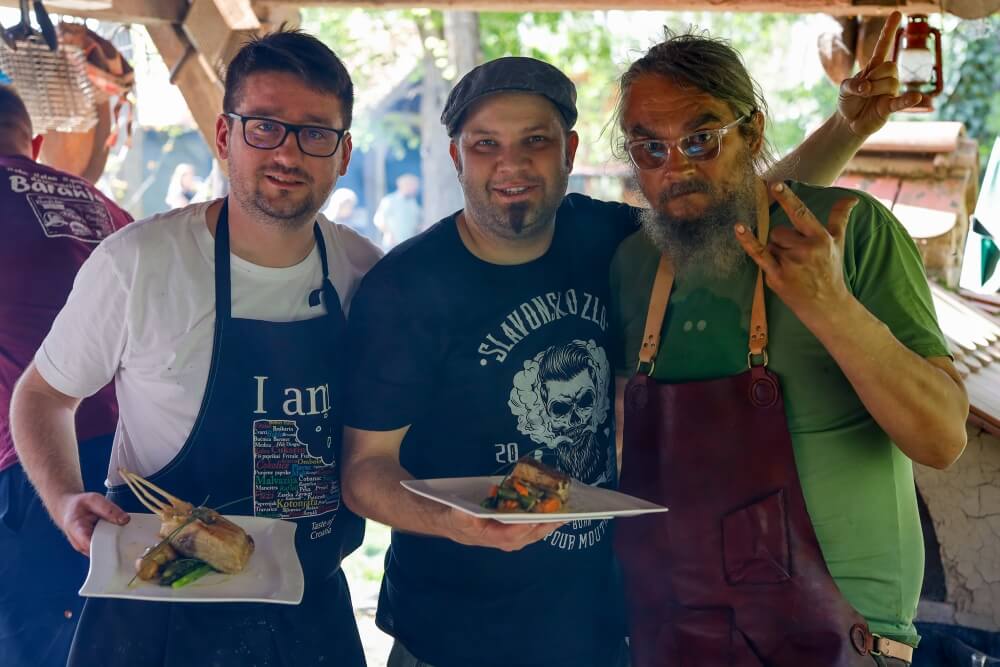 (L- R) OPG Čudesna šuma co-chef at the event Mihael Tomić, renowned Osijek chef Ivan Đukić currently of Osijek's Lipov Hlad and a happy Mario Romulić © Turistička zajednica Općine Bilje - Kopački rit.
(L- R) OPG Čudesna šuma co-chef at the event Mihael Tomić, renowned Osijek chef Ivan Đukić currently of Osijek's Lipov Hlad and a happy Mario Romulić © Turistička zajednica Općine Bilje - Kopački rit.
By comparison, the Mario Romulić that welcomes us at OPG Čudesna šuma today is unrecognisable. Sure, there's a little more grey to his long hair and beard but, otherwise, he looks incredibly healthy and happy. The intense stare is gone, replaced by a warm, wide smile that shows across his entire face. Even in early May, he has a darkened skin tone, the telltale signs of a man who spends much of the day outdoors. Romulić's enthusiasm for his guests and the event is palpable. After his sincere welcome, this enthusiasm is immediately transferred to each of his guests.
Mrs Romulić ensures everyone's glass is overflowing with wine or juice. One of Mario's teenage sons helps out with the food, while the other is taking photographs of the event. Well, someone has to do the photography now that dad wants to be a chef and host! Mario himself is engulfed in smoke. Among the other duties he's assumed today, Mario is tending a smoker. Without a doubt, this is the most revelatory cooking method we meet today.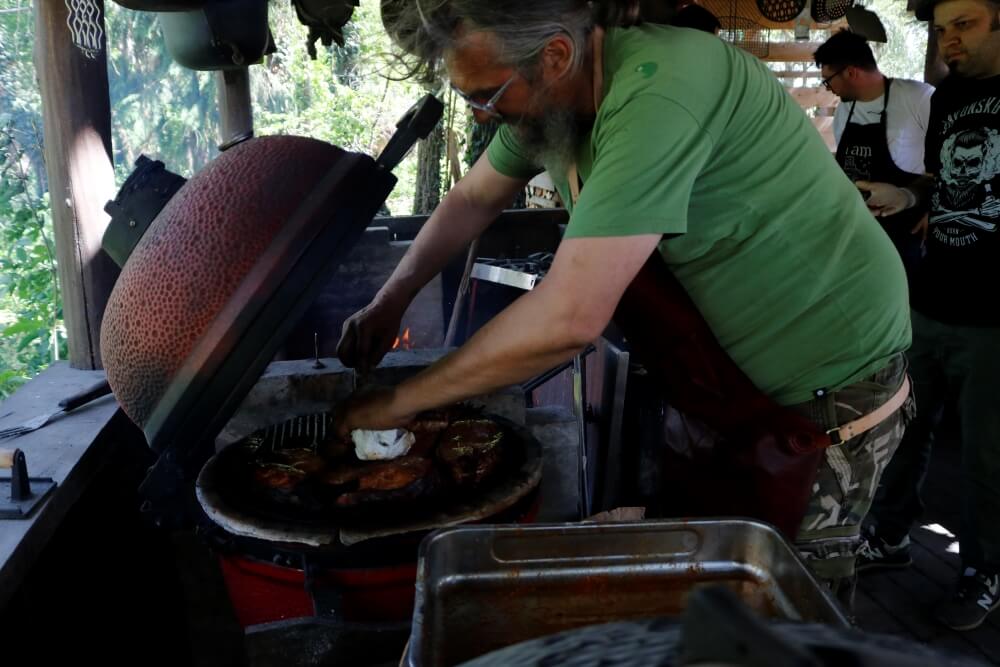 Mario Romulić tends to smoked river fish, a revelatory gastronomic experience at OPG Čudesna šuma © Marc Rowlands.
Mario Romulić tends to smoked river fish, a revelatory gastronomic experience at OPG Čudesna šuma © Marc Rowlands.
Smoked fish of Slavonia and Baranja at OPG Čudesna šuma
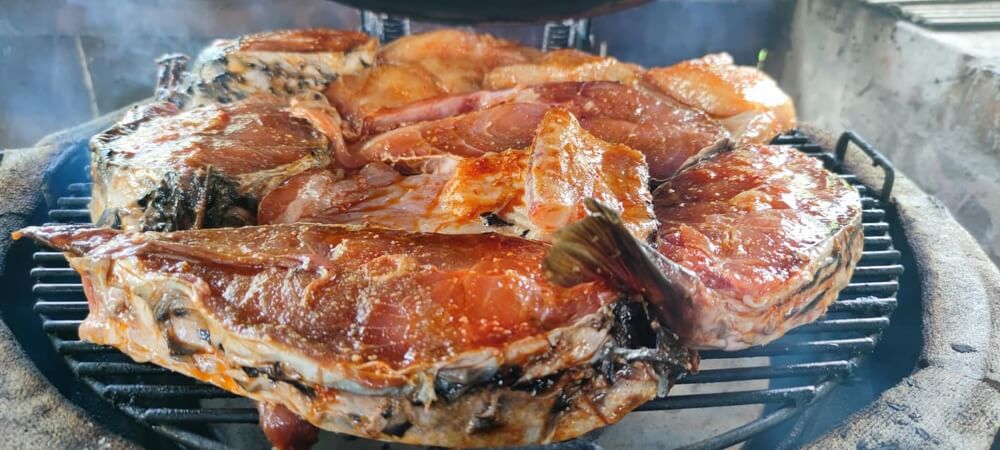 An American-style smoker, loaded with river fish. TOP TIP: A great way to stop fish sticking to the grill of your barbecue or smoker is to place them on top of a layer of lemon slices © OPG Čudesna šuma.
An American-style smoker, loaded with river fish. TOP TIP: A great way to stop fish sticking to the grill of your barbecue or smoker is to place them on top of a layer of lemon slices © OPG Čudesna šuma.
“We do have smoked fish here, but not in this way,” he says. “This is more like an American grill. I never heard of anyone trying Baranja cooking like this. Actually, I never heard of anyone nearby who has a smoker like this. The first time I tried stuka (pike) in the smoker, that was unbelievable. It's incomparable, really special.” Exquisite presentation of river fish by the enthusiastic team of OPG Čudesna šuma © Turistička zajednica Općine Bilje - Kopački rit.
Exquisite presentation of river fish by the enthusiastic team of OPG Čudesna šuma © Turistička zajednica Općine Bilje - Kopački rit.
“In Slavonia and Baranja, there are just a few ways we usually cook our river fish - carp on sticks, fish paprikash, perklet and fried fish. So, we tried something new, to expand the palette. For instance, almost nobody eats Babuška (a type of carp). They feed it instead to their pigs. It costs 5 kuna a kilo! But, if you cook it in this completely natural way, it's delicious.”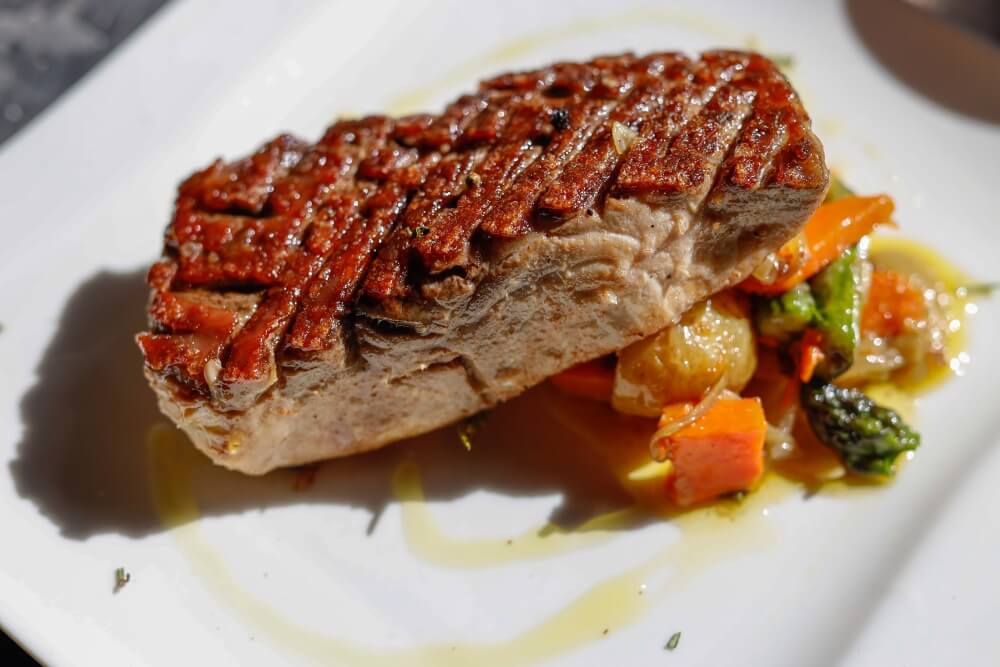 More river fish, cooked by the team of OPG Čudesna šuma © Turistička zajednica Općine Bilje - Kopački rit.
More river fish, cooked by the team of OPG Čudesna šuma © Turistička zajednica Općine Bilje - Kopački rit.
He's not wrong. Today's mountain of different smoked fish is the talk on most of the adult lips. The rich flavours surprise. Compliments and returns for second helpings ensue. Mario stands to one side, happily watching as his smoked fish secret escapes. In the future, he plans similar events based on other regional foods - Black Slavonian pig, wild meats like deer or boar. Eventually, in the seven hectares of land he owns here, he would like to expand OPG Čudesna šuma as an eco-village, with beds for visitors, a natural swimming pool and then surround it with a food forest. Big plans. It looks as though the camera may stay more permanently in the hands of his son. Because it's difficult to imagine Mario Romulić leaving his happy place and the realisation of his long-held dream. Mario Romulić in his happy place, with a friend © OPG Čudesna šuma.
Mario Romulić in his happy place, with a friend © OPG Čudesna šuma.
Both the author and Total Croatia News would like to thank the following for their invaluable help in creating this article: Ivana Jurić and the Tourist Board of Osijek-Baranja County, OPG Čudesna šuma, Mario Romulić and family, Renata Forjan and Turistička zajednica Općine Bilje - Kopački rit and Domagoj Butković of expert travel guides to Slavonia and Baranja, Kulen travel.
Continental Croatia Trains: Inland Opens Up With Green Travel
October 3, 2020 - With charter airlines in a state of flux and Croatia Railways beginning a renewal of their fleet in Slavonia, are continental Croatia trains the eco-friendly and best way to unlock the inland's amazing potential?
Everything changes. Nothing stays the same. Even before 2020 arrived, lifestyles and trends were headed in new directions. Eco-tourism and agro-tourism were two of the fastest-growing areas within the travel sector, this behaviour change a response to concerns about the environment. And nowhere in the country stands better poised to take advantage of this interest than continental Croatia.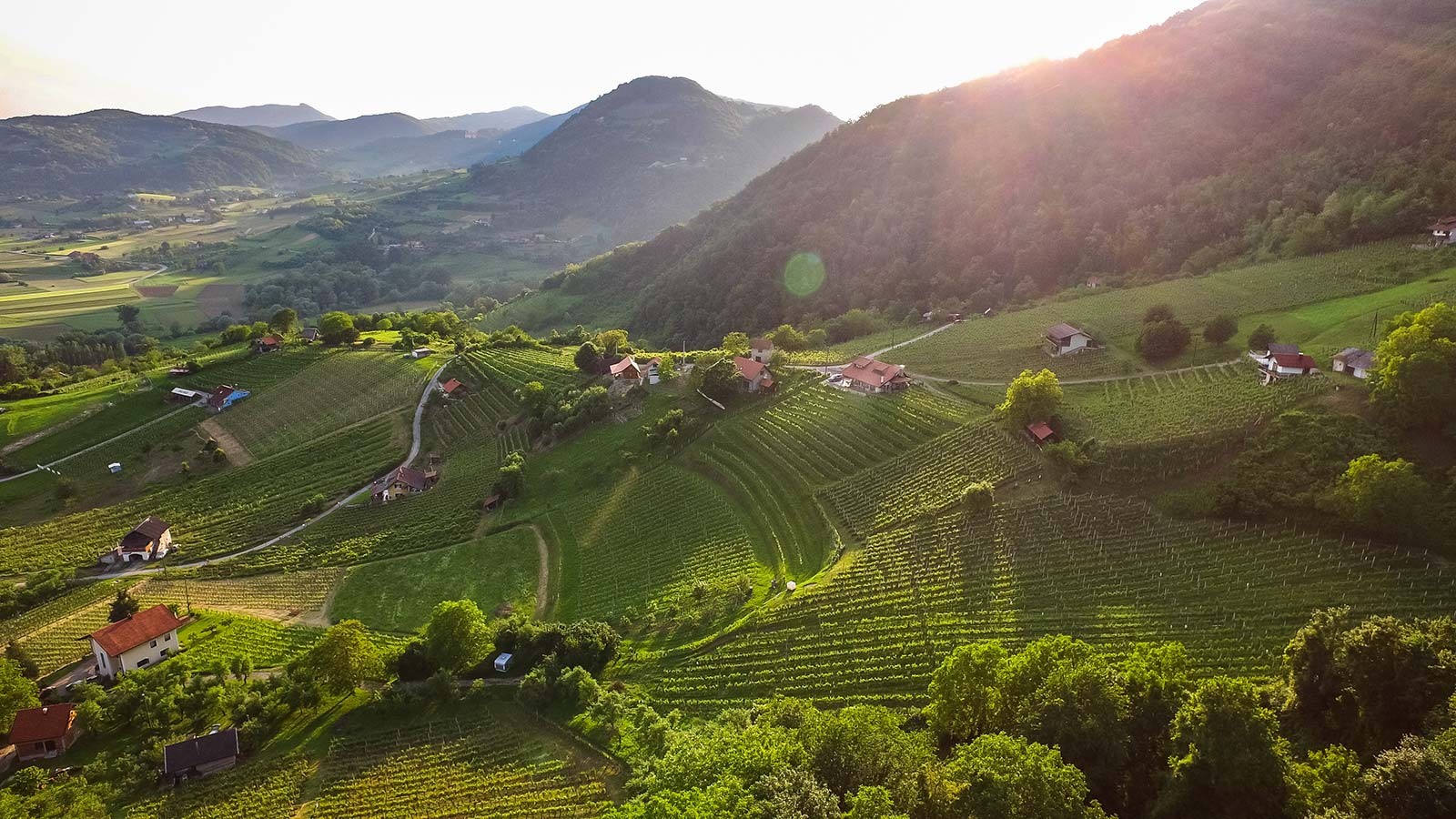 Impossibly pretty Zagorje - the region lies just north of Zagreb and is accessible by continental Croatia trains © Ivo Biocina / Croatia National Tourist Board
Impossibly pretty Zagorje - the region lies just north of Zagreb and is accessible by continental Croatia trains © Ivo Biocina / Croatia National Tourist Board
From the impossibly pretty hills of Zagorje, the peaceful rivers of Karlovac county and the hidden vineyards that surround the capital Zagreb to the vast Pannonian flatlands that stretch to Slavonia, Baranya, Vukovar-Srijem and beyond, the varied topography of continental Croatia is wild, exciting and - by many - wholly undiscovered.
This is land where agriculture and nature thrive side by side, where the stresses of modern-day existence ebb away as you readjust to a way of life that would look mostly familiar to the people who lived here centuries ago. These are places where you can truly be at one with yourself and with your surroundings. In continental Croatia, you often find yourself in an environment that is both timeless and traditional, yet wholly contemporary in regards to its ecological aspirations. And you're never far away from an exciting city environment that you can dip into on a whim – not just Zagreb, but Osijek, Slavonski Brod, Karlovac, Sisak and Varaždin too. To those who really know and love Croatia, Osijek is simply unmissable. It is both the capital of and the doorway to Slavonia and Baranya and should be more accessible by continental Croatia trains. Sadly, international transportation links to the city by air are also quite poor. Improvements in accessibility to Slavonia and Baranya by rail and road are imminent © Romulić & Stojčić
To those who really know and love Croatia, Osijek is simply unmissable. It is both the capital of and the doorway to Slavonia and Baranya and should be more accessible by continental Croatia trains. Sadly, international transportation links to the city by air are also quite poor. Improvements in accessibility to Slavonia and Baranya by rail and road are imminent © Romulić & Stojčić
Unlocking the incredible potential of continental Croatia relies on getting the message out there and facilitating travel to these regions
In recent TCN features we have detailed that motorways within Croatia are among the best in Europe - once you're inside Croatia, travelling by car (or bus) between the regions couldn't be easier. We have also seen evidence of the huge interest in travelling here by rail and using continental Croatia trains.
Of all the modern methods of long-distance travel, rail is by far the most eco-friendly. What better way to begin an environmentally friendly holiday than by arriving on continental Croatia trains? When the country wisely decided to prioritise its internal motorway system, a modern and fast inter-regional rail network was put on the back burner. Nowhere suffers greater from this decision than continental Croatia.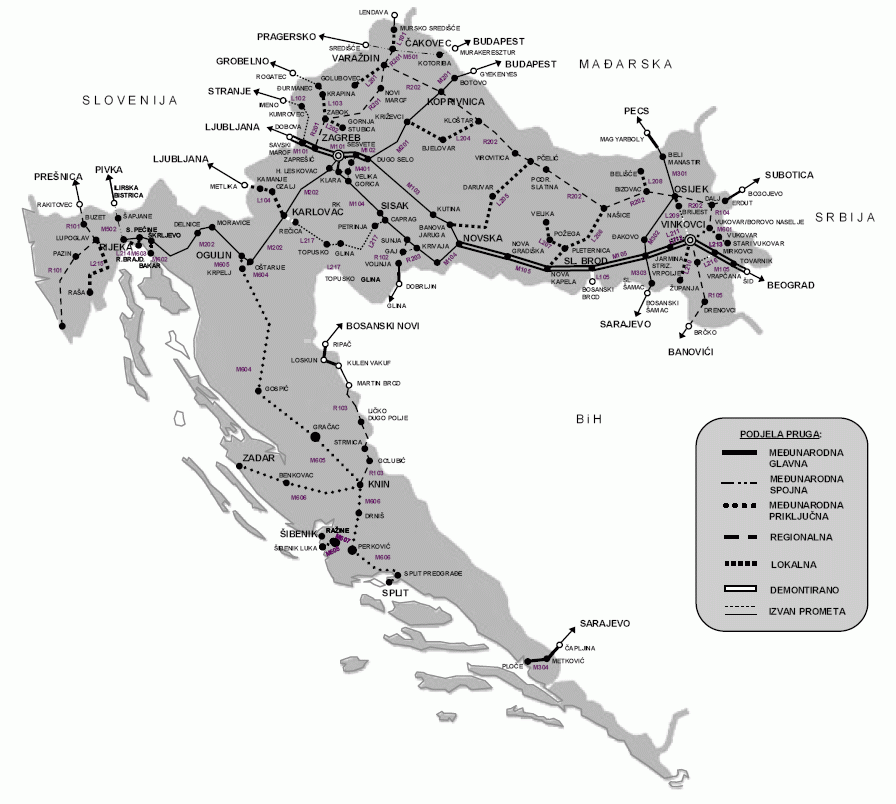 The Croatian rail network © Croatian Official Document uploaded to Wikipedia by Epepe
The Croatian rail network © Croatian Official Document uploaded to Wikipedia by Epepe
The only high-speed line that currently exists in Croatia links Rijeka to Budapest, via Zagreb and Koprivnica. Planned improvements hope to cut journey times between Zagreb and its nearest coastal city to an hour. Same as it ever was - Rijeka was the first Croatian city to be connected internationally by rail. That line also ran into the heart of Austro-Hungary and facilitated upper-class travel to places like Opatija. But does it best benefit the country to invest in more links to the coast or in continental Croatia trains? Well, the inland is not being ignored. Upgrades are being made to continental Croatia trains. This impressive beast actually services the country's coast. But would more investment in the continental Croatia trains network better service more people and help unlock the inland to tourists? Around 70% of the country's inhabitants live in continental Croatia © HŽPP
This impressive beast actually services the country's coast. But would more investment in the continental Croatia trains network better service more people and help unlock the inland to tourists? Around 70% of the country's inhabitants live in continental Croatia © HŽPP
The rail link between Zagreb and Slavonski Brod is so historic that it was once part of the four routes of the Orient Express. It has been maintained to a standard where you can make a relatively quick journey from the capital to Vinkovci via Slavonski Brod. The same cannot be said for rail travel to Osijek, the access point to Baranya and much more. So slow is the connection between Osijek and Zagreb that it has been possible over recent times to reach the Slavonian capital quicker by taking the train to Vinkovci, then the bus to Osijek, rather than travelling direct by rail.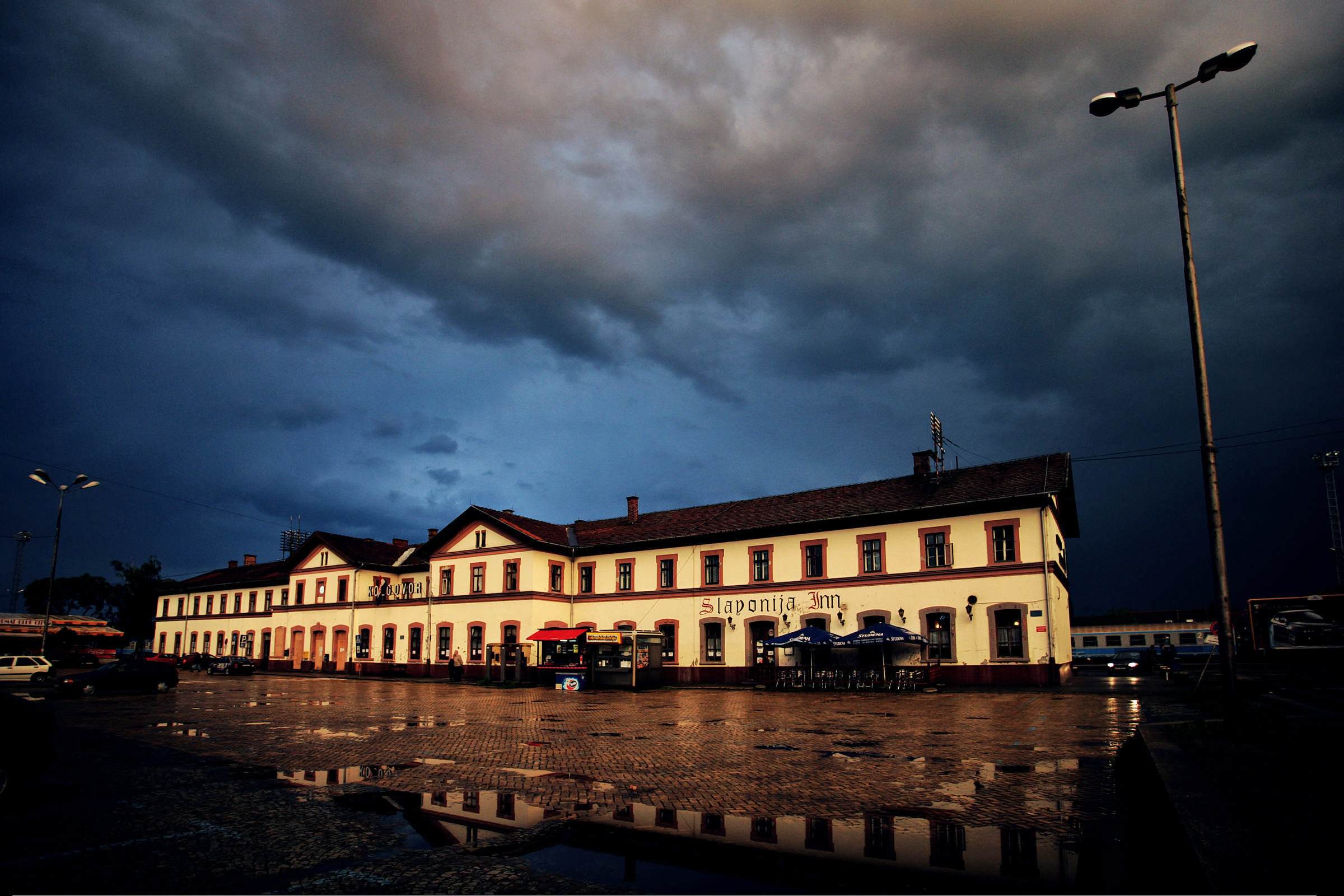 Osijek train station. A renovation to the building is planned for the near future © Romulić & Stojčić
Osijek train station. A renovation to the building is planned for the near future © Romulić & Stojčić
However, in February this year, Croatian Railways introduced four direct daily lines between Slavonski Brod and Osijek. And there will be a new tilting train line that will run between Zagreb to Osijek on Friday afternoon and from Osijek to Zagreb on Sunday afternoon, facilitating student travel. On October 15, the first low-floor train will run between Osijek and Vinkovci as an additional part of the renewal of their continental Croatia trains fleet in Slavonia. The welcome return of Croatia's second-oldest international rail line - linking Osijek to Pécs in Hungary, via Beli Manastir and Baranya - was introduced in late 2018.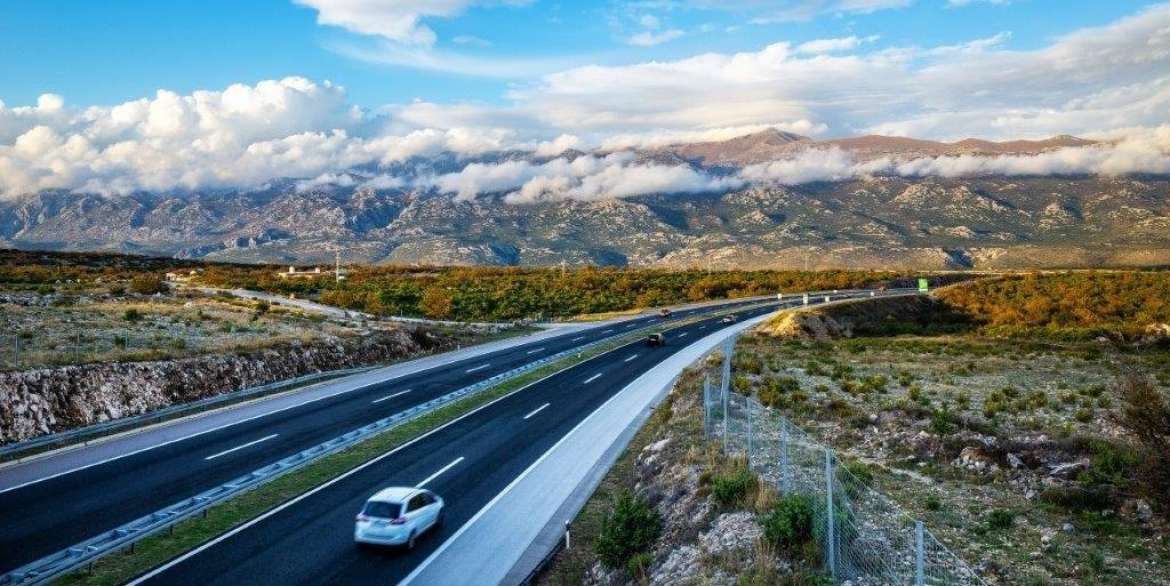 A motorway stretch between Metković and Dubrovnik, integrating the Pelješac bridge and the Croatian segment of the European corridor are the final big remaining projects in a three-decade-long undertaking to give Croatia one of the best motorway networks in Europe. Should Croatia's rail network be next? © Hrvatske Autoceste
A motorway stretch between Metković and Dubrovnik, integrating the Pelješac bridge and the Croatian segment of the European corridor are the final big remaining projects in a three-decade-long undertaking to give Croatia one of the best motorway networks in Europe. Should Croatia's rail network be next? © Hrvatske Autoceste
Access to Slavonia and Baranya will also be massively facilitated upon completion of the European corridor, which will connect North Europe to the Adriatic. Starting in Budapest, it necessitates the building of a bridge near Beli Manastir. Thereafter the motorway will pass by Osijek, connect to the Zagreb-Slavonia motorway near Lipovac, then pass through Bosnia and its capital Sarajevo and on to Ploče.
The removal of budget airline flights to the airport in Osijek remains a hindrance to attracting many international visitors to Slavonia and Baranya. However, with charter airlines facing the greatest uncertainty of all modes of transport at the current time, though their return is a must, it is perhaps now an ambition that should remain more long term. For the immediate future, improvements to rail travel look to be a brilliant way of opening up not only Slavonia, Baranya and Vukovar-Srijem, but also an eco-friendly access point capable of serving the whole of untapped continental Croatia.
For the latest travel info, bookmark our main travel info article, which is updated daily.
Read the Croatian Travel Update in your language - now available in 24 languages
How to Invite People to Rakija and 19 More Must-Visit Things in Osijek
September 24, 2020 - The biggest town in the heart of Slavonia, we present 20 must-visit things in Osijek.
A city where storks live on city buildings, red wounds on facades reminiscent of days of courage, and street art testifies to the city’s past and present rhythm. As Punkufer reports, whether you are a fan of wineries and vineyards, old castles and forts, or you want to enjoy the romantic combination of the Drava and the Danube in the middle of golden and green plains, Osijek is the place for you.
1. The famous Osijek Fortress
The fortified part of the town from the 18th century, you'll find St. Trinity's statue. There is also the General Command Building, which you've seen elsewhere even if you have not been to Osijek - on the 200 kn banknote, which also has the floor plan of the old fortress.
At the time of its construction, it was one of the largest and most modern military fortifications in Central Europe. To this day, only a small part of the old walls has been preserved. It is believed that the body of General von Beckers, who led the construction of the wall, is in the walls of the Fortress. But there are more intriguing legends and beliefs…
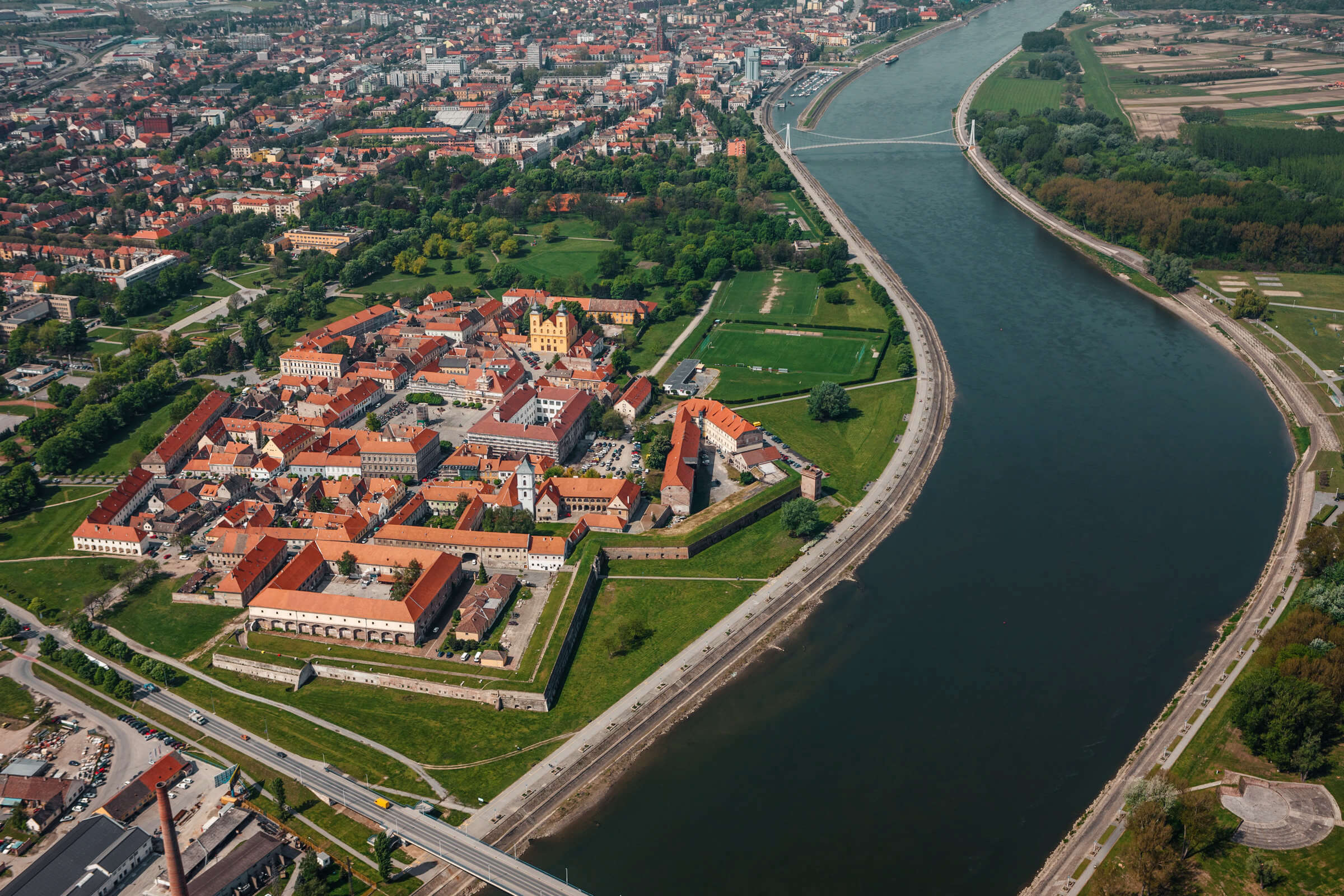
Osijek | Photo by Romulic and Stojcic
2. City of legends
The legend of the missing treasure: when Napoleon was ravaging Europe, the treasury of the Habsburg Empire was transferred on ships among the safe walls of the Osijek Fortress. After the danger passed, the treasury was returned, but one chest disappeared forever in Osijek, and it was never known where the money was.
Legend of noon lunch: when the Turkish army left the city in 1687, churches marked the period of freedom with bells at 11 am, and Osijek housewives eventually concluded that this was the ideal time to make dumplings that would be ready at noon. Hence the name "dumpling clock", but also dumplings on your table at noon.
The legend of Romeo and Juliet in Osijek: cops in ancient times caught a young man in the wee hours of the night and accused him of crime nearby. To save the reputation of his sweetheart with whom he spent the night, he confessed to a crime he did not commit. When she found out, she ran to the rescue to admit what had happened; however - the young man had already been hanged. The remainder of this event today is the Chapel of the Stone Cross, or as the people once call it - the Chapel of Unhappy Loves.
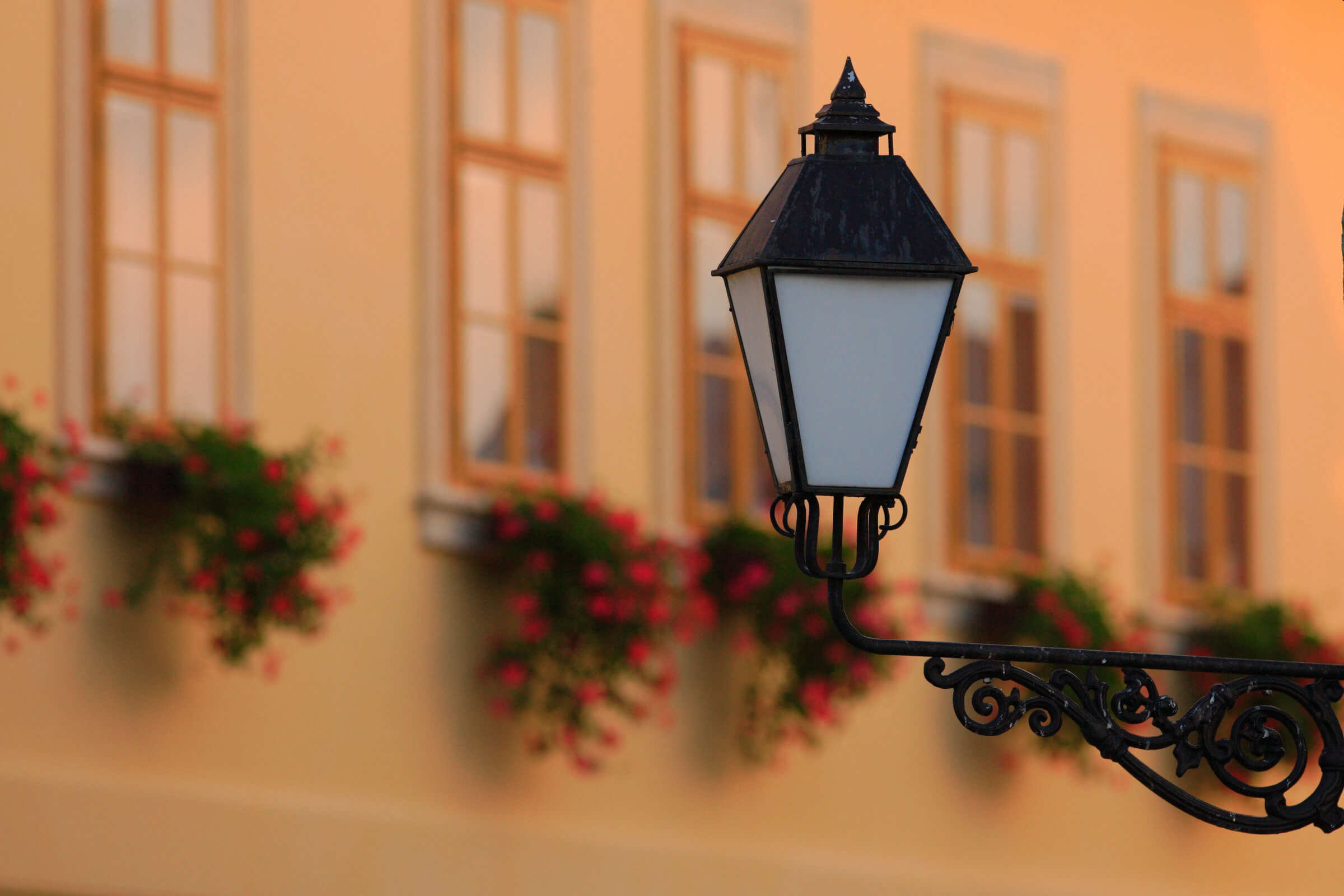
Osijek | Photo by Romulic and Stojcic
3. Soldiers, inns, and prostitutes
At the end of the summer, the Tourist Board of the City of Osijek organized free tourist tours of the Fortress called "Fortress: soldiers, inns and prostitutes" (only for adults!). The perfect opportunity to meet the naughty side of Osijek.
The tours are led by a friendly tourist guide Stanislav Subotic, who welcomed his guests disguised as a resident of the Lower Town, whom the woman reported to the police that he had not returned from the prostitute for six weeks. The Museum of Slavonia and young historians from the Faculty of Philosophy in Osijek also helped him prepare the tour. At the moment, they no longer have free tours, but those interested in a thematic tour can contact the Osijek Tourist Board and Mr. Subotić, who will surely enhance their experience of the city.
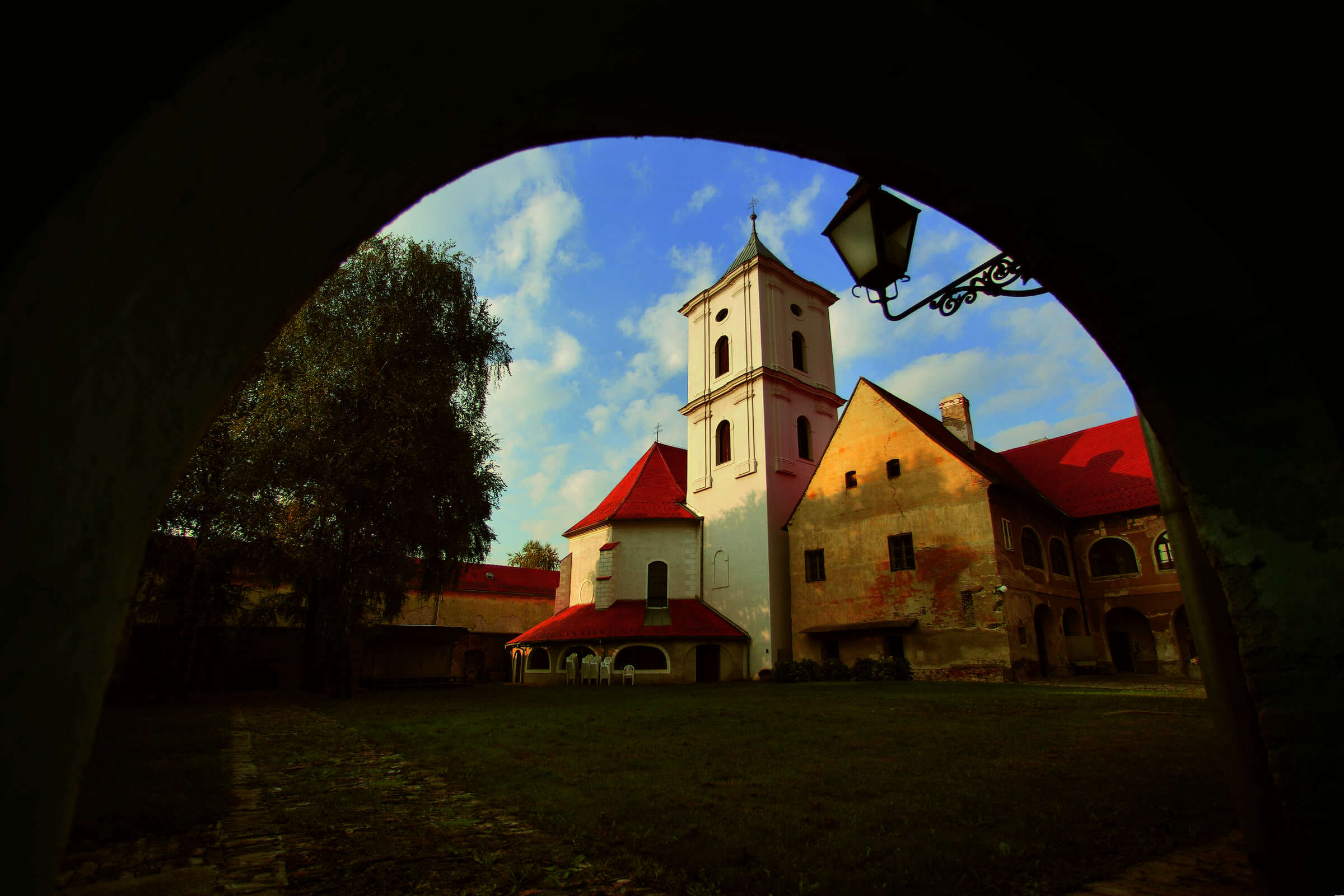
Osijek | Photo by Romulic and Stojcic
4. Osijek is one of the greenest cities in Croatia, and sphinxes guard the entrance to a park
Large parks and gardens, especially those around the fortress's ramparts, were built on the principle of ‘pleasant and useful’ to keep the city away from cannons from the city walls. During your visit to Osijek, you can enjoy the greenery of the park of King Tomislav, the gardens of Croatian kings, or the young Park of the newlyweds, where young married couples once planted the trees of their love.
One of the more unusual parks is Sakuntala Park. It was named after a girl from Indian mythology who was sung by Indian poets and Goethe. The park is adorned with sphinxes at the entrance, and when you see them, you’ll remember why we warned you: Their eyes are up!

Osijek | Photo by Romulic and Stojcic
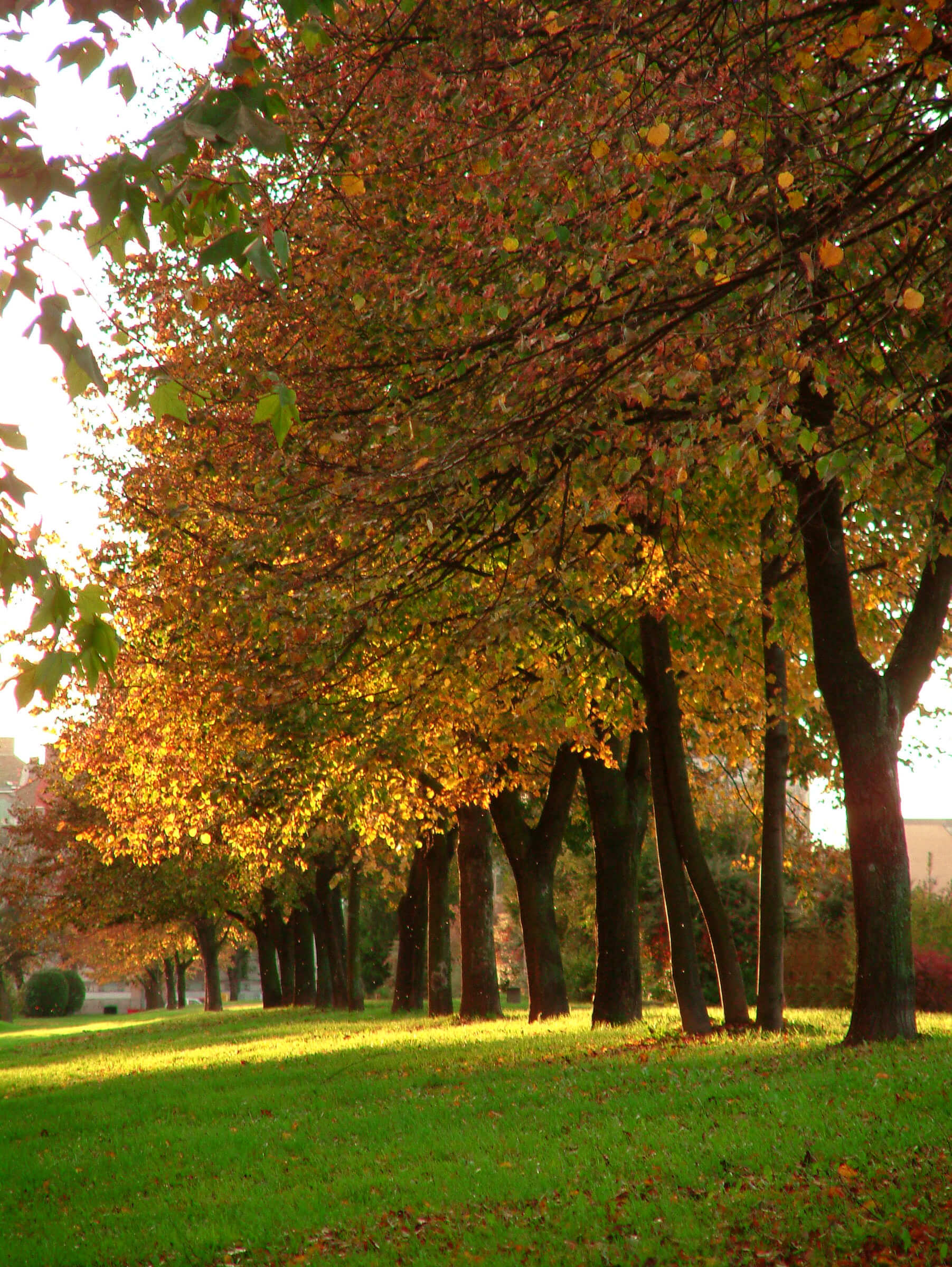
Osijek | Photo by Romulic and Stojcic
5. "Kompa" (Friend), tireless scaffolding on the Drava
For a hundred years, Kompa has been tirelessly transporting passengers from one bank of the Drava to another, often when they intend to visit the Osijek ZOO on the other side. This is why many people remember their childhood when they sailed on a trip with their parents.
This ecological boat uses only the Drava River's currents for driving, but don't worry, so as not to end up in a panoramic tour of Slavonia and Srijem on the Danube, your comp holds a steel rope. Of course, you always have the option to eLEGAntly* cross the Drava River over the Pedestrian Bridge (Bridge of Youth).
*Lega is a name for a friend, a colleague, in the spirit of the Osijek dialect.
6. Copacabana Beach or locally - Kopika
To refresh in the summer months, locals and guests alike prefer to look for in public baths and swimming pools. The largest and most visited Drava beach is called Copacabana. With a thorough and systematic reconstruction, there is a recreation center that will soon shine in a new edition.
It is ideal for walking along the Drava Promenade along the Drava, where there is enough space for walking, cycling, or enjoying the view on a bench or with a cup of coffee in one of the "river" cafes.

Osijek | Photo by Romulic and Stojcic
7. Slavonian cuisine to protect against winter
Fresh cheese with kajmak, Kulen, fried bacon, meatballs, fish stew, river specialties of carp and catfish, shepherd's pie, Sataraš, cabbage flakes, plum dumplings, jam, chocolate from Osijek factory Kandit… Need we say more? With all that, you can refresh yourself with a homemade invention: a black Radler. After all, they say that Osijek is still the birthplace of the first Croatian beer. And for wine lovers, there is the best from the famous wine cellars of Slavonia and Baranja: Pinot, Chardonnay, Merlot, Grasevina…

Osijek | Photo by Romulic and Stojcic
8. Mother of cats
Here is a temple for all crazy cat people: the famous baroness and humanitarian Pauline Hermann statue would not attract so much attention if cats did not keep her company. Namely, the baroness was a great lover of animals, especially cats, so the people of Osijek immortalized her with a statue and a nickname: Cat Mother.
9. The egg from which Osijek hatched
On Ban Jelačić Square, there is a statue of a cracked egg, which symbolizes Osijek's birthplace. It is a memorial to the ancient Roman city named Mursa, located here from the 1st to the 5th century AD.
10. Mill - mill on the Drava
There used to be many mills on the Drava, and having a mill on the Drava meant serious work. Although the mills ceased to operate during the Second World War, in honor of the old days and the respectable occupation of millers, the project "Miller's Way" was launched, which included a replica of the mill intended public education.
11. The main square, a group of citizens and a mysterious elephant
On the main, Ante Starčević Square, a "group of citizens" embodies all the inhabitants of Osijek in their diversity. But there is also a touch of exoticism in the form of an elephant statue on the building's front. There are several versions of why the elephant is in the square. One story says that it was set up by an Osijek merchant who probably wanted to attract customers from the far eastern regions or learned from those parts that an elephant brings good luck. Another says that while the circus was passing through the city, an old elephant at the head of the procession fell to the ground and died. Two brothers of a butcher from a nearby butcher shop "took care" of the body, and from that moment on, the purchase of meat in that butcher shop was called "I'm going to the elephant".

Osijek | Photo by Romulic and Stojcic
12. City of Art Nouveau
At the beginning of the 20th century, Osijek was the stage of European architecture trends, and the Art Nouveau left the most beautiful trace. If you walk along European Avenue, you will have the opportunity to see magnificent examples of urban villas from that time. Still, there are other buildings such as the Main Post Office, Urania Cinema, and the so-called Knopp houses built in the style of "Gingerbread Art Nouveau".
Pride in heritage is also expressed through various projects and festivals. Culture lovers strive to revive and nurture the artistic direction that has made up the city through tourist tours, lectures, concerts, exhibitions, and workshops.

Osijek | Photo by Romulic and Stojcic
13. Watch the film in the cinema in the city of Oscar winner Branko Lustig
The well-known Croatian producer and actor who won an Oscar for his films, Schindler's List and Gladiator, is a native of Osijek. Because of his Jewish blood, as a child, he was imprisoned in a concentration camp. He later attributed his survival to the camp to an officer from the Osijek area, just like him, and knew about his father. In the name of domestic cinema, visit Osijek's Urania Cinema. The cinema building was erected in - you guessed it - Art Nouveau style. Even if you don't get to Osijek, you can bring a little Osijek spirit into your stay with the famous Osijek Oscar winner's film classics.
14. Cannonball - an attraction that no one planned
On Županijska Street, in addition to the HNK building and the County Palace, a skilled eye will notice a small attraction stuck in the wall: a black ball believed to have been accidentally fired from the Fortress in the 19th century. Since this happened in peacetime, it is believed that the cannonball fired was an unfortunate consequence of the military cannon game after a merry evening in the city.
15. Čaruga, a Slavonian bandit or Robin Hood?
At the beginning of the 20th century, the robber Čaruga gladly came to Osijek. Numerous legends depict his hard life and plundering exploits. By teaming up with other bandits, he became part of the so-called "Kola gorskih tića". Together, they plundered wealthier citizens. He was sentenced to death by hanging and said goodbye theatrically to life with the words "Goodbye people, Čaruga is traveling!". For some, Robin Hood, for some an ordinary robber, but indeed an interesting figure whose life decades later intrigued historians and artists. He was buried in the Osijek cemetery of St. Ana, and several books have been written about his character, and several films have been made.
16. Revive your childhood with Jagoda Truhelka
Most grew up with Osijek writer Jagoda Truhelka and her collection of short stories, "Zlatni Danci". She talks about his family and the people of Osijek's everyday life, so this could be one of the most beautiful guides before visiting Osijek. Part of her family's legacy is kept in the Museum of Slavonia in Osijek.
17. With a small, red Fico car against tanks - a monument to the courage of the little ones
When the tanks took to the city streets in 1991, Osijek defender Branko Breškić decided to stop them by parking his Fićo in the middle of the intersection. The tank crushed him mercilessly, but the scene remained eternal: like David and Goliath, the little red Fico remained a symbol of courage and resistance to a stronger enemy. Today, this scene is immortalized in an art installation in which Fićo won in the end. Its location is at the intersection of Trpimirova and Vukovarska.
18. Urban monument: Unconquered city
After the occupation of nearby Vukovar during the Homeland War, the message of the late defender Predrag Sušac appeared in Osijek: Osijek - an unconquered city! Today, this legendary inscription is protected as a cultural asset, and you can see it at the intersection of Trpimirova and Divaltova streets.
19. Stadium Gradski vrt and Kohort of the city on the Drava
"There is an echo from the east, the champion's name is Osijek" - so sing the fans of NK Osijek, Kohorta. They took their name from the name for the infantry part of the Roman army's legion, which is not without reason because members of the Roman cohorts were once stationed in this city. Home games are held at the City Garden Stadium, from which many probably already know the inscription Grad na Dravi (the City on Drava River). There are also city swimming pools near the stadium, although we are sure that they won't be needed as long as Osijek has Copacabana. At least until winter.
20. Museum of Slavonia
The Museum of Slavonia is one of the oldest museums and the largest general museum in Croatia. Through many collections from the fields of archeology, ethnography, art, history, etc., thousands of objects have been preserved. The native collection of Essekians focused on the history of Osijek and its cultural and social development, stands out. Through Osijek's stories, we can often come across the term Esseker and the Esseker dialect when we talk about language. It is an old Osijek-German dialect that is now extinct. But the term Esseker in a speech today is also a symbolic term for Osijek's people, especially those who are strongly attached to the city.
Come to Osijek and say 'Kum, af a deci rakouci''. Apparently, it should bring you a rakija. Fingers crossed!
For the latest travel info, bookmark our main travel info article, which is updated daily.
Read the Croatian Travel Update in your language - now available in 24 languages
Join the Total Croatia Travel INFO Viber community.


